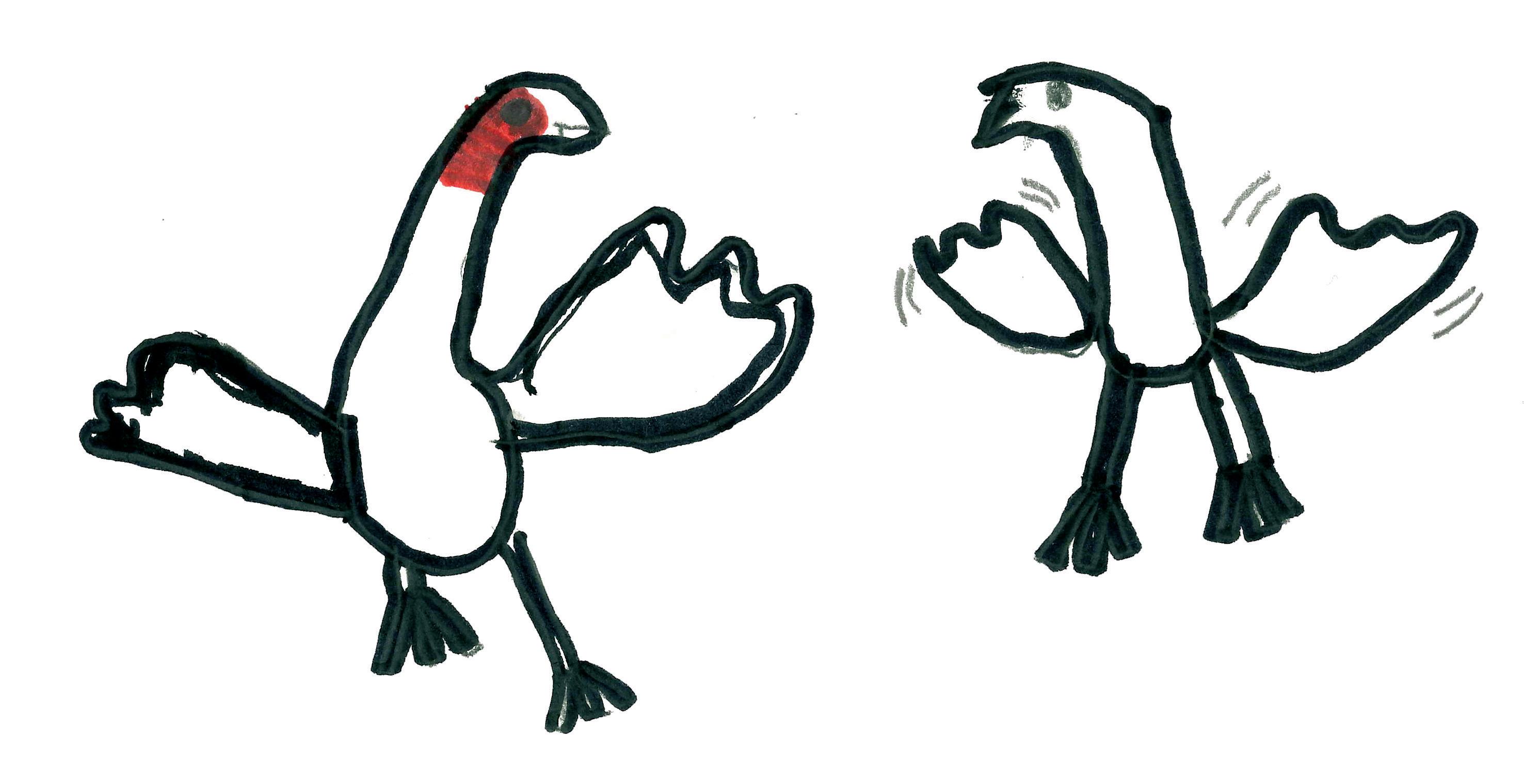

Buga Yanu Junba
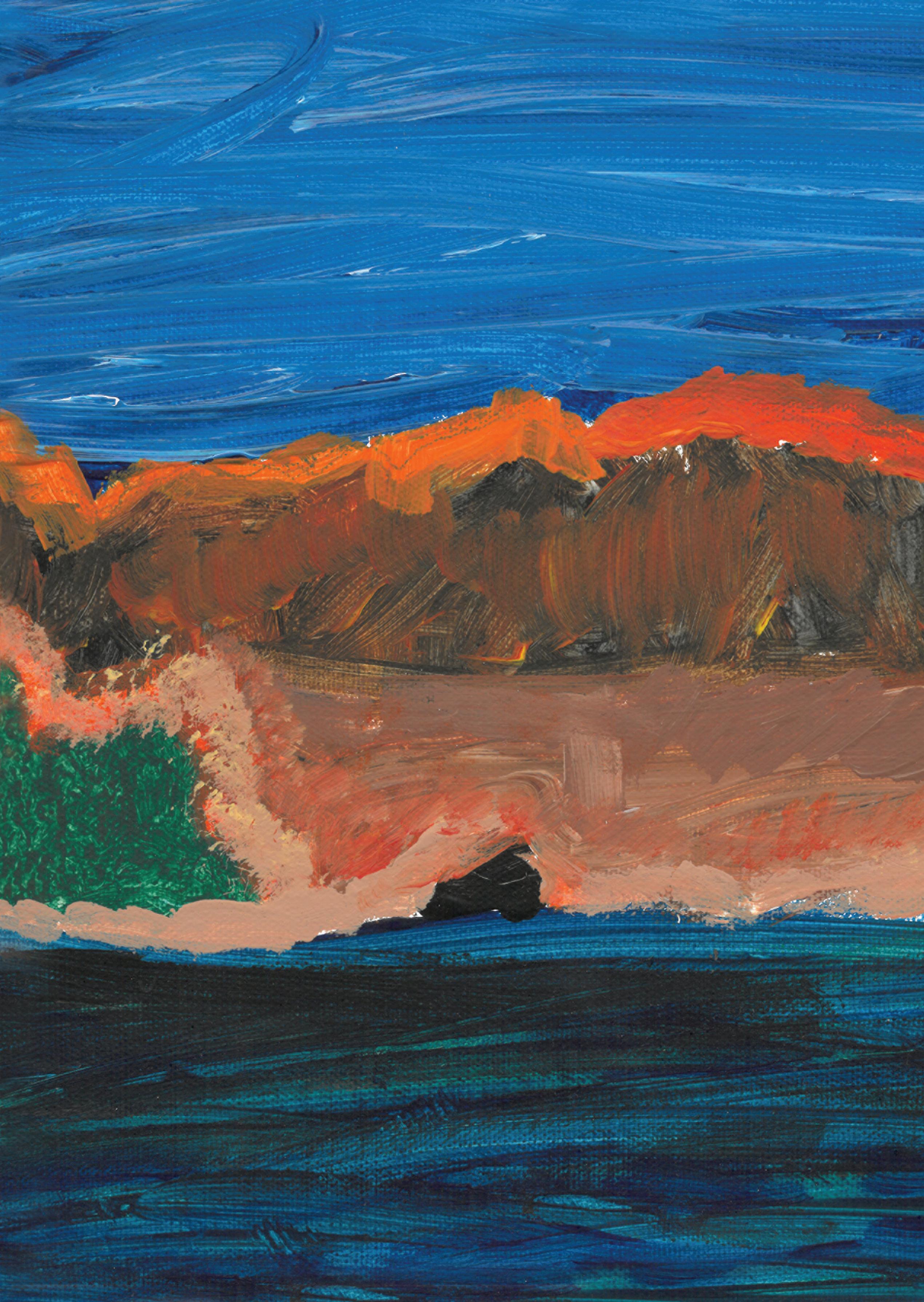
Songs for young children
by the educators at Baya Gawiy Buga yani Jandu yani u with Gillian Howell and Annika Moses.
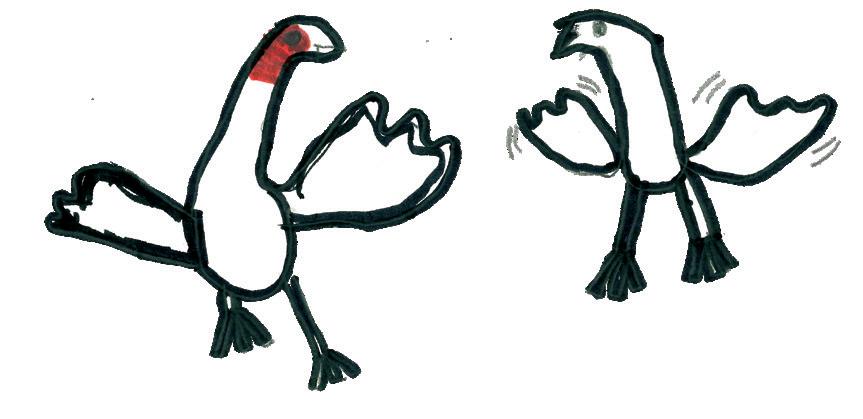
Buga Yanu Junba
First published in 2025 by the Indigenous Literacy Foundation
Gadigal Country Level 17/207 Kent Street
Sydney NSW 2000
ilf.org.au
The Buga Yanu Junba songbook is an outcome of an action research partnership between Marninwarntikura Women’s Resource Centre, Tura, and the University of Melbourne.
Copyright © Daddy: David Bullen Rogers, 2022
Copyright © Faibala Grinwan Frog: Yiyili Aboriginal Community School, 1997
Copyright
© Flow: students from Fitzroy Valley District High School, Gillian Howell, Jane Barker, Bryn Dolan and Shay Stamp, 2019
Copyright
© Giriliyarndi: Robyn Long, Cissy Nugget, Brenda Shaw and Gillian Howell, 2019
Copyright © Jalma jalma Gira: Patsy Bedford and June Oscar AO, 2002
Copyright © Jandamarra: students from Fitzroy Valley District High School, Gillian Howell, Jane Barker and Bryn Dolan, 2018
Copyright
© Jirigi-Yani Bunuba-Yuwa Muwayi: Susan Hoad, Patsy Bedford and Gillian Howell, 2022
Copyright © Jirigiyani Counting Song: Susan Hoad and Gillian Howell, 2022
Copyright © Kapiwarnti Palu Nguniny Martuwarrarla: June Nixon and Gillian Howell, 2022
Copyright © Kayan Kakaji: Samantha Frank and Gillian Howell, 2022
Copyright © Kurrartuwarnti: June Nixon and Gillian Howell, 2022
Copyright
© Mayarda: Patricia Cox, Delphine Shandley and Gillian Howell, 2022
Copyright © Moonggoowarla Gin.garli: Delphine Shandley, Chris Aitken and Stacey Brooking, 2016
Copyright © Muwayi Digawu: Patsy Bedford, Susan Hoad, Amarillo Nam Oscar, June Oscar AO, Selina Middleton and Gillian Howell, 2022
Copyright © Ngurrara People: Irene Bent and Gillian Howell, 2019
Copyright © Pujurl: Eva Nargoodah, Annika Moses and Gillian Howell, 2023
Copyright © The Right-Size Galwanyi: Brenda Shaw, Patricia Cox, Delphine Shandley, Min En Chek and Gillian Howell, 2021
Copyright © Ruwa Parlipa Yani: Irene Bent, Gillian Howell and Maria Marmingee Hand, 2019
Copyright © Slippery Boornda: adapted from “Octopus (Slippery Fish)” by Charlotte Diamond © Charlotte Diamond Music SOCAN 1985 www.charlottediamond.com, by Patricia Cox and Min En Chek, 2021
Copyright © Thurranda Gurranda: Jayedene Green, Annika Moses, Patsy Bedford, Gillian Howell, 2023
Copyright © Wirli Wirli: David Bullen Rogers, 2018
Copyright © Yilimi: Patricia Cox, Anna Dick, Sarah Dick, Roberta Dick and Gillian Howell, 2022
All rights reserved. No part of this book may be reproduced or transmitted by any person or entity (including Google, Amazon or similar organisations) in any form or by any means, electronic or mechanical, including photocopying, recording, scanning or by any information storage and retrieval system without prior permission in writing from the publisher.
Cataloguing-in-Publication details are available from the National Library of Australia www.trove.nla.gov.au
ISBN 9781922592729
Cover Art by Joel Shaw (background) and Felix Crowe (brolgas)
Typesetting and design by Lee Burgemeestre
Printed in China by 1010 Printing International Limited
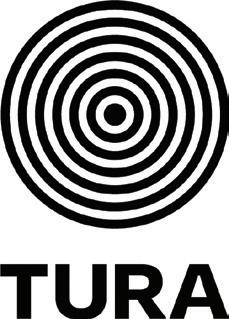

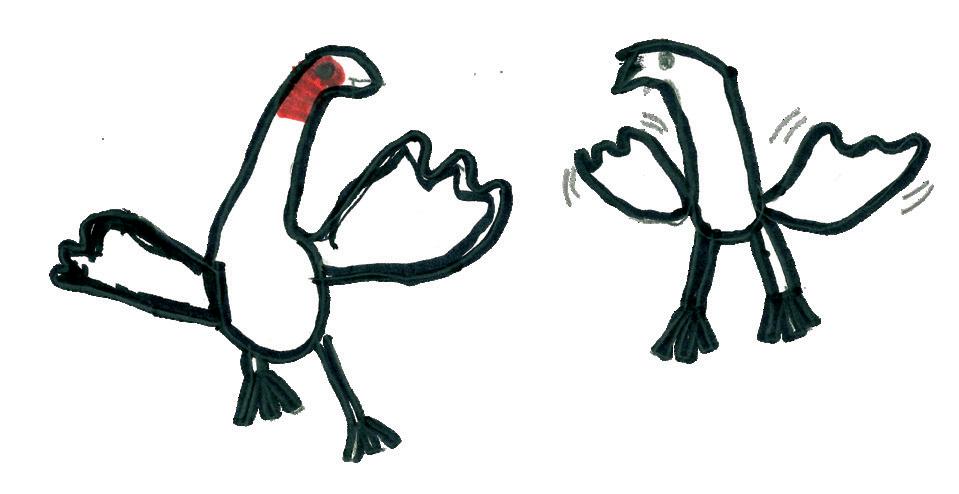
Buga Yanu Junba
Songs for young children
by the educators at Baya Gawiy Buga yani Jandu yani u with Gillian Howell and Annika Moses.
Foreword by Patsy Ngalu Bedford
About singing in Indigenous languages
About Baya Gawiy and the songwriting project
About Sound FX and Tura
Notes on pronunciation for English speakers
Clapping and Actions
Kapiwarnti Palu Nguniny
Martuwarrarla
words and music by June Nixon with Gillian Howell
Kayan Kakaji
words and music by Samantha Frank with Gillian Howell
Slippery Boornda
based on ‘Octopus (Slippery Fish)’ by Charlotte Diamond
translated by Patricia Cox and Min En Chek
Counting
Jirigiyani Counting Song
words by Susan Hoad
music by Gillian Howell
Mayarda
words and music by Patricia Cox and Delphine Shandley with Gillian Howell
Faibala Grinwan Frog
unnamed for cultural reasons
Lullabies
Jalma jalma Gira
words and music by Patsy Bedford and June Oscar
Moonggoowarla Gin.garli
words and music by Delphine Shandley and Chris Aitken with Stacey Brooking
Muwayi Digawu
words and music by Susan Hoad, Amarillo Nam Oscar, Patsy Bedford, June Oscar and Selina Middleton with Gillian Howell
Kimberley Life
Jirigi-Yani Bunuba-Yuwa Muwayi
words and music by Patsy Bedford, Susan Hoad and Gillian Howell
Kurrartuwarnti
words and music by June Nixon with Gillian Howell
Ruwa Parlipa Yani
words and music by Irene Bent with Gillian Howell
additional verses by Maria Marmingee Hand
Wirli Wirli
words and music by David Bullen Rogers
Yilimi
words and music by Patricia Cox, Anna Dick, Sarah Dick and Roberta Dick with Gillian Howell
Stories from the Past
Daddy
Acknowledgment of Country
The songs in this book were composed on the traditional lands of the Bunuba and Gooniyandi people of the central Kimberley region. We pay our respects to the Elders past, present and emerging.

words and music by David Bullen Rogers
Jandamarra
words and music by Fitzroy Valley District
High School students with Gillian Howell and teachers Jane Barker and Bryn Dolan
Ngurrara People
words and music by Irene Bent with Gillian Howell
Pujurl
words and music by Eva Nargoodah with Annika Moses and Gillian Howell
Caring for Country
Flow
words and music by Fitzroy Valley District High School students with Gillian Howell and teachers Jane Barker, Bryn Dolan and Shay Stamp
Bunuba lyrics by Amarillo Oscar, Gooniyandi lyrics by Brenda Shaw and Walmajarri lyrics by Maria Marmingee Hand
Giriliyarndi
words and music by Robyn Long, Cissy Nugget and Brenda Shaw with Gillian Howell
The Right-Size Galwanyi
words and music by Brenda Shaw, Patricia Cox, Delphine Shandley, Min En Chek and Gillian Howell
Thurranda Gurranda
words by Patsy Bedford, music by Annika Moses, Jayedene Green and Gillian Howell
Acknowledgements Thanks
Songwriter
Foreword by Patsy Ngalu Bedford
Senior Language Custodian and Special Advisor to the Kimberley Language Resource Centre
My name is Patsy Bedford and I am a Bunuba Elder. I work here at Baya Gawiy, an organisation that is doing a magnificent job in passing down our languages through arts and storytelling: crafting, book writing and songwriting. As we all know, we come from an oral tradition, and this is where the language, the knowledge passing, is being done with the small children. We put the seeds of knowledge into the children here at Baya Gawiy in many ways, including the writing and recording of new songs that are in the songbook you are holding in your hands.
The language journey in the Kimberley has always been with education. Many years ago our Elders began to record our local languages because they knew how important the education of our younger generations would be. The children were sent to school and the Elders decided, yes, we will start to record our languages so that the children will be able to speak our languages when we are gone.
In our contemporary education system, there are many barriers to children learning our languages. The Elders didn’t realise that the children would be taught in English-only classrooms, separated from their culture and language. That is why it’s very important that we preserve our language in songs and keep singing them to our children. These songs and the audio recordings that accompany them capture our language, culture and traditions of storytelling in a way that makes it easy for our children to understand and learn. We’ve come a long way. I now sit here as an Elder myself. And I’m very proud to see the vision that was created by my Elders all those years ago being carried on today. Those Elders have left us, but their dreams are coming true.


About singing in Indigenous languages
Maria Marmingee Hand, Senior Teacher, Specialist Aboriginal Language Teacher (Walmajarri) and Aboriginal Islander Education Program Coordinator at Fitzroy Valley District High School
Tanji parlipa martawu ngalimpakura wangki (We’ve all got to hold tight to our language)
Language is a big part of our identity as First Nations people. Our culture is embedded in it. Understanding our heritage languages and teaching them are very important for the children. Knowing their language helps them know where they come from and where their jilas and jumus are (sacred waterholes that connect them to their ancestors and ancestral stories).
In my master’s degree in Indigenous Language Education and in my current journey into Kimberley language ecologies, I’ve found that songs and chants help to strengthen the language because they help with retention. You can remember that song or chant years and years later, even from childhood. You also remember the way it sounds, the pronunciation, the rhythm of the words. So, it’s a good way to go.
Music and singing also make our pilyurr strong. Pilyurr is a Walmajarri word that means spirit or essence. Having strong pilyurr is part of our healing. I hope the songs in this important songbook, Buga Yanu Junba , will help keep our Kimberley languages strong, and give strong pilyurr to all children everywhere who pick up this book and learn to sing the songs.
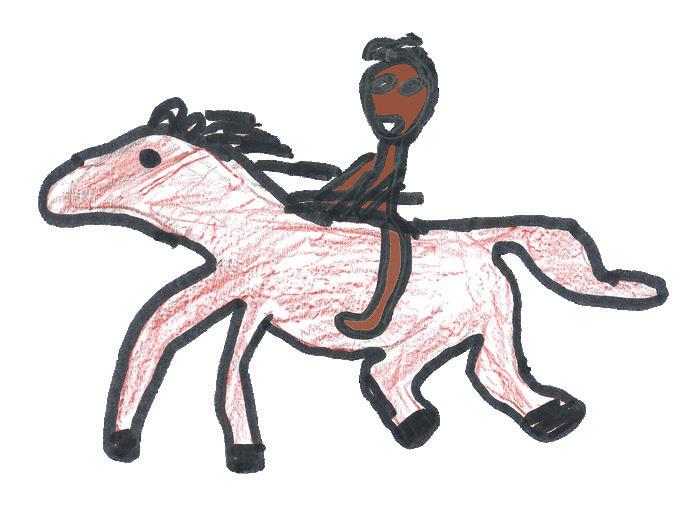
About Baya Gawiy and the songwriting project
Baya Gawiy Buga yani Jandu yani u is the early childhood education and care program of Marninwarntikura Women’s Resource Centre in Fitzroy Crossing, Western Australia. Its unique curriculum brings together seasonal calendar knowledge, storytelling, and trauma-informed healing practices, with music and singing at the heart of everyday learning.
Songs are central to the care and nurturing of Baya Gawiy’s children and their families. They carry stories, language, and cultural knowledge from one generation to the next. They are woven into play, relationships, and daily learning, helping young children find their place in the world and feel strong in their connections to each other, their community, and Country. Portable and full of meaning, songs nurture belonging, healing, and community.
In 2018, Baya Gawiy educators invited Dr Gillian Howell to help strengthen the musical aspects of their program. Recognising the wellbeing benefits of singing and the need for culturally relevant materials, they began working together to deepen and expand the role of music within the centre. In 2021, they developed plans to create a collection of songs in Bunuba, Gooniyandi, Walmajarri, and Kimberley Kriol for use within their education and care programs.
This early work grew into the New Songs participatory action research project in 2022. By 2024, Baya Gawiy educators had composed and recorded 15 new songs and embedded them into daily learning programs. They also revived older language songs, adding new actions and accompaniments with permission from the original songwriters.
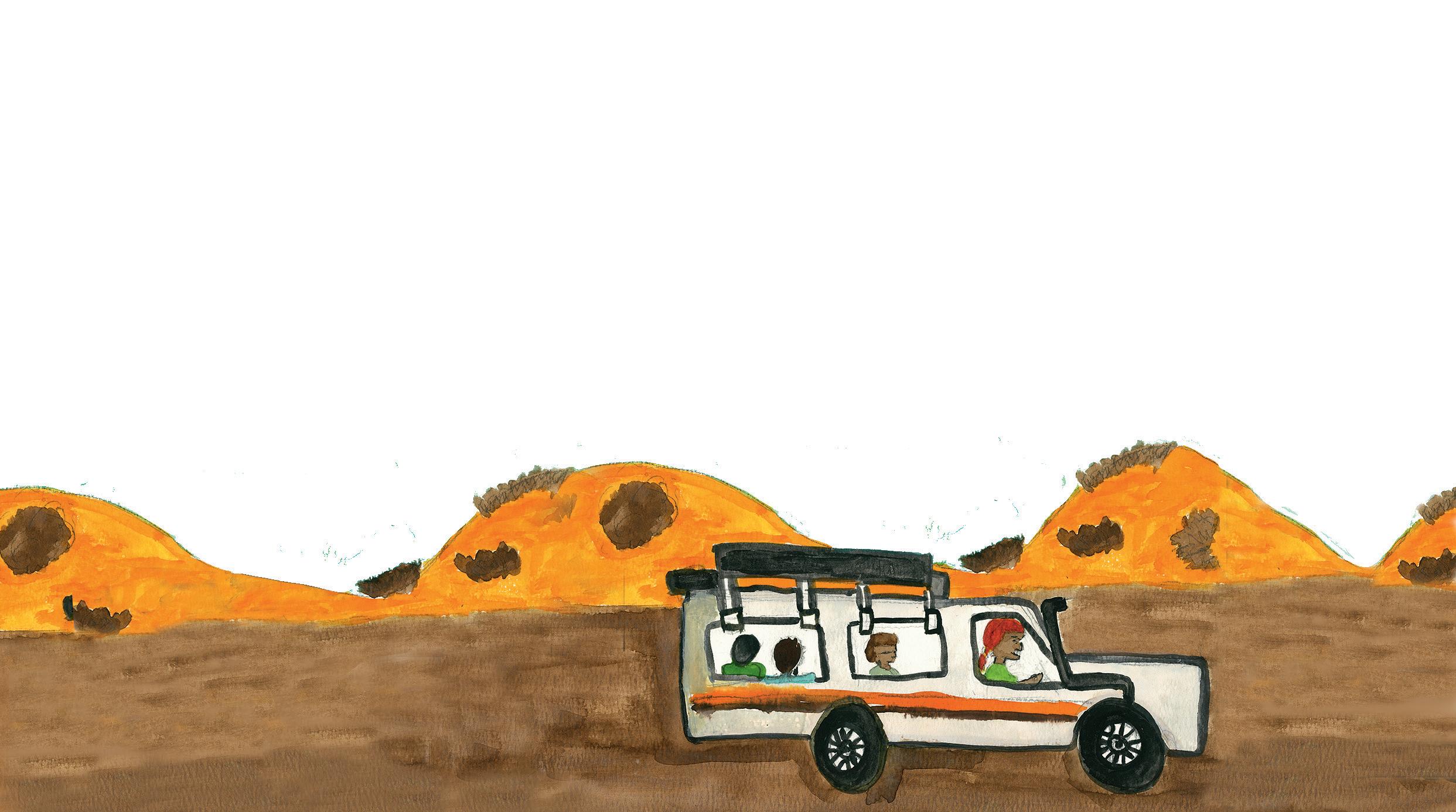
Today, these songs fill Baya Gawiy’s learning spaces with the voices of Elders and the sounds of local languages. They carry stories forward, strengthen bonds across generations, and inspire new songwriting and stories from Baya Gawiy’s educators and families, helping to keep the community’s knowledge strong for future generations.
About Sound FX and Tura
Buga Yanu Junba shares songs created as part of Tura’s ongoing Sound FX music residencies in Fitzroy Crossing, Western Australia. Initiated in 2017 by the Australian cultural development organisation Tura with musician Dr Gillian Howell, Sound FX is a community arts partnership program exploring music, storytelling, cultural knowledge, and language through long-term collaborations in Fitzroy Crossing and surrounding communities. ‘FX’ is local shorthand for Fitzroy Crossing.
Twice yearly, Sound FX residencies take place in collaboration with local education and community organisations. These intercultural creative exchanges support community goals around culture and wellbeing. Local partners identify priorities and collaborate with the Sound FX facilitators to create musical responses and resources. From sound art to songwriting, performing and recording, each residency is shaped through a shared commitment to deep listening, mutual learning, and respect. Sound FX is one of Tura’s many award-winning intercultural collaborations, each of which explores, shares, and celebrates contemporary Australian identities and stories.
Buga Yanu Junba is an album as well as a songbook, proudly produced by Tura and available for free. Each track was recorded by the songwriters and their family members, along with Kimberley musicians, other members of the Fitzroy Crossing community, and the Sound FX team. To download, listen and sing along to the Buga Yanu Junba album, including bonus tracks, scan the QR code below.
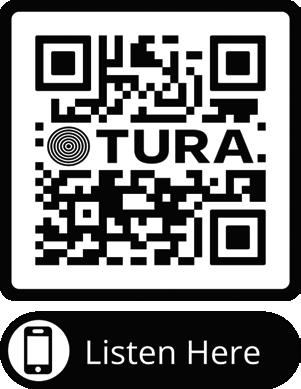
Sound FX is made possible through support from the Australian Government’s Indigenous Languages and Arts Program; the Western Australian Government's Department of Local Government, Sport and Cultural Industries' Creative Communities Recovery Program; the Minderoo Foundation; the Feilman Foundation; and the University of Melbourne.

Notes on pronunciation for English speakers
Australia’s First Languages include many sounds not found in English. The best way to become confident with these pronunciations is to listen closely to the song recordings, which feature expert speakers. Each time you listen, you’ll notice and learn a little more.
Bunuba, Gooniyandi, and Walmajarri each use their own writing systems — or orthographies — which were developed by senior language speakers in the 1980s (and the 1960s for Walmajarri). These systems follow different spelling conventions; for example, Gooniyandi uses ‘oo’ where Bunuba uses ‘u’.
As an introduction, some of the sounds you’ll hear in the songs in this book are explained on the next page. These are common across Bunuba, Gooniyandi, Walmajarri, and many other First Languages of Australia.
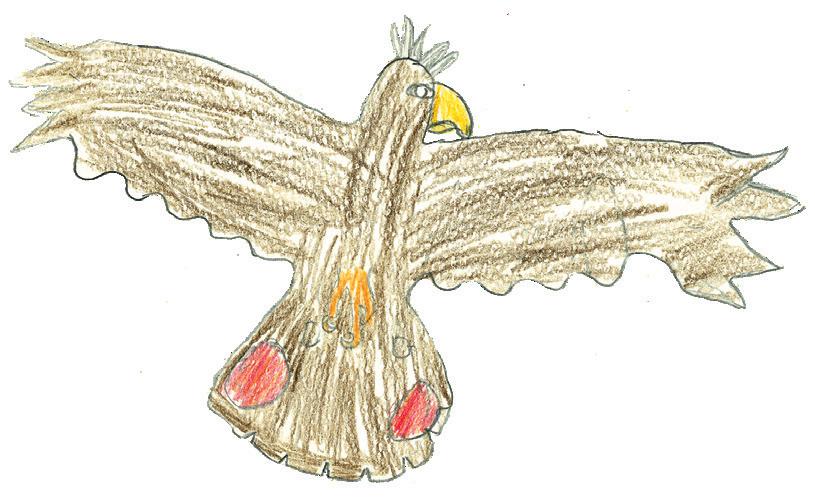
‘ng’ is pronounced like the end of the word song. Try leaving your tongue in the same position as it is for the -ng in song to become familiar with the feeling of the sound.
‘ny’ at the end of a word is a nasal sound made by pressing the flat part of your tongue to the roof of your mouth. It sounds like the ‘ni’ in onion.
‘rr’ is a rolled or tapped sound — similar to a quick, percussive ‘d’. A single ‘r’ is softer, like the ‘r’ in river.
‘rn’, ‘rl’, ‘rt’ and ‘rd’ create sounds where the ‘r’ blends into the following consonant. Start by placing your tongue as if you’re making an ‘r’ sound, then pronounce the second letter.
In written Walmajarri, the letter ‘p’ is pronounced like ‘b’; ‘k’ sounds like ‘g’; and ‘t’ is pronounced as ‘d’.
Vowel combinations such as ‘awu’, ‘awo’, ‘ayi’, and ‘uwayi’ glide smoothly from one vowel sound to the next. In the songs, they are sung as a single syllable.
In Gooniyandi, ‘n.g’ indicates that the n and g should be pronounced separately — not as a single ‘ng’ sound. For example, in the song ‘Moonggoowarla Gin.garli’ , the words min.ga and gin.garli both use this pronunciation.
A message from the songwriters
Buga Yanu Junba (Children’s Songs) is a collection of songs created by early childhood educators and language specialists in Fitzroy Crossing for young children. The songs were written to help kids in the Fitzroy Valley learn their heritage languages. But languages are for sharing — everyone is welcome to learn, sing along, and help keep these languages strong!
Every voice is unique and perfect in its own way. Some people feel more at ease singing in lower ranges, while others prefer higher notes. Children’s voices are often naturally higher than adult voices. The songwriters composed and recorded their songs in keys that felt comfortable for them, and the notation in this book reflects the original recordings. You are welcome to transpose the songs to a key that better suits your voice or your children’s voices. However, the songwriters kindly request that the lyrics and rhythms remain unchanged, preserving the integrity of the words in their original settings.
Each song has an introduction that explains why it was written, what it’s about, and why the knowledge it shares is important. Some introductions name specific geographical locations, and you can find these places on the map on the next page. The songs also include English translations, but keep in mind that some words don’t have exact English meanings. That’s why the translations are written to match what the songs mean in their own language.
The artwork in this book has been created by the songwriters and other adults and children in the Fitzroy Valley community.
We hope that singing the songs in Buga Yanu Junba brings you joy, helps you connect with others, uplifts your spirit, and deepens your understanding of our beautiful and unique part of Australia.


Cattle stations
Communities
Galamunda
Yirimalay
Jimbalakudunj
Burawa Darlngunaya Bungardi
Junjuwa
Mindi Rardi
Kurnangki

Muludja
Oscar Ranges
Loanbun Fitzroy Crossing
Ngurtuwarta
Yungngora
Koorabye
Bidijul
Yakanarra

Ngalingkadji
Gilly

Bawoorrooga
Communities of the Fitzroy Valley Kadjina
St George Ranges Ngumpa Cliffs
Djugerari
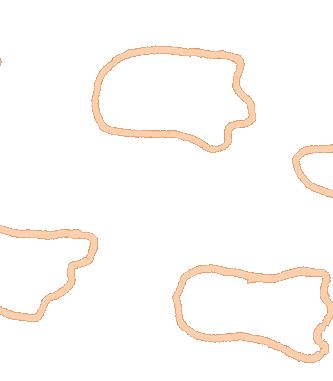
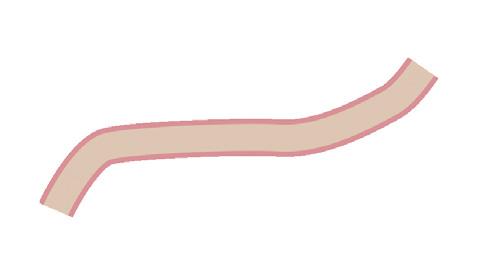

Towards Derby and Meda station
To Halls Creek
Towards Ngurrara Country
Leopold Station
Brooking Springs
Fossil Downs
Bohemia
Station

Clapping
and Actions

The songs in this section invite you to join in with rhythmic responses, dramatic actions, and slurping sound effects. Grab your percussion instruments—or just use your hands—and get ready to clap, slurp, and sing along!
“I wrote this song to teach kids about all the different fish living in the Martuwarra – Fitzroy River in our language.” June Nixon
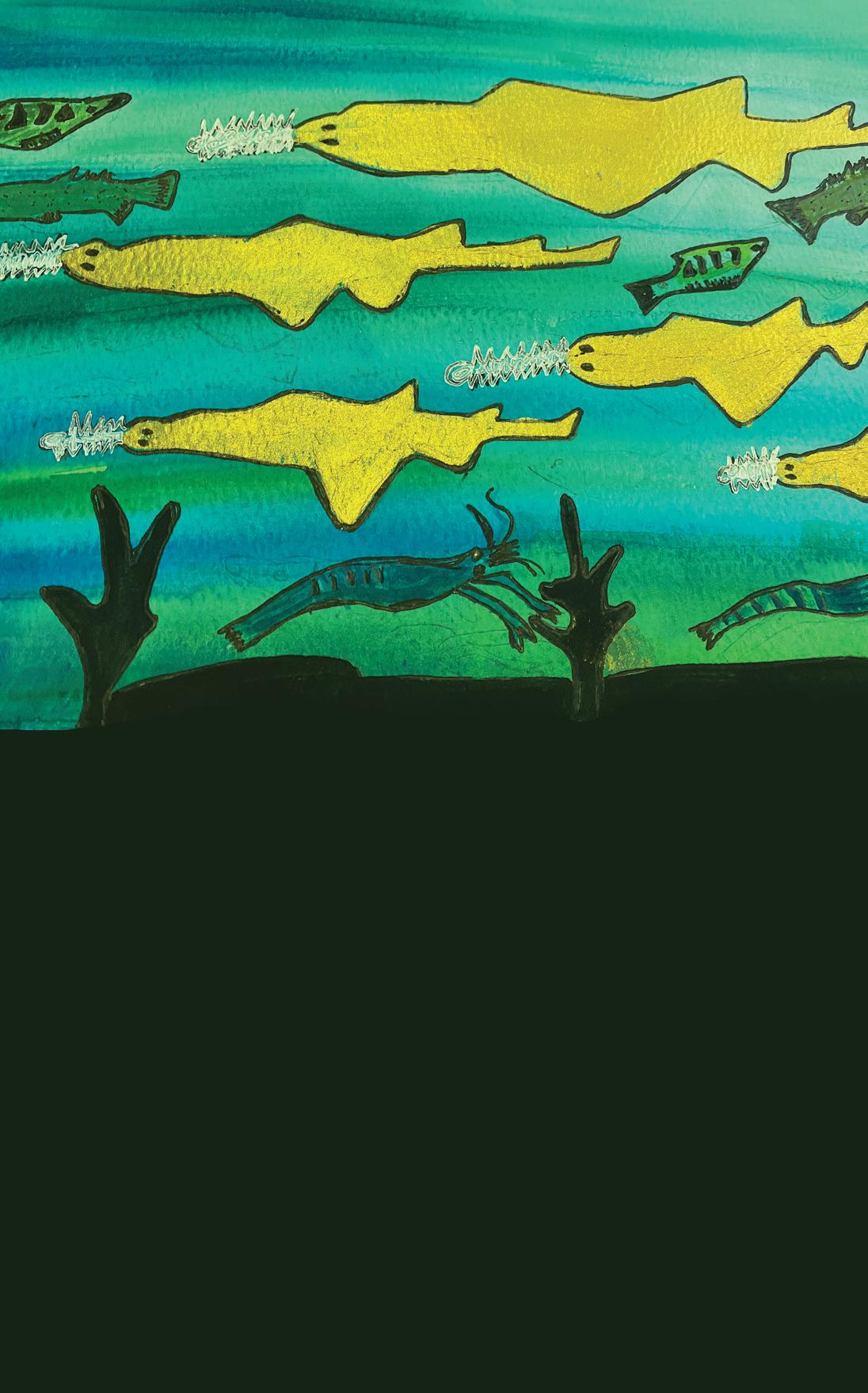
Translation [Chorus]
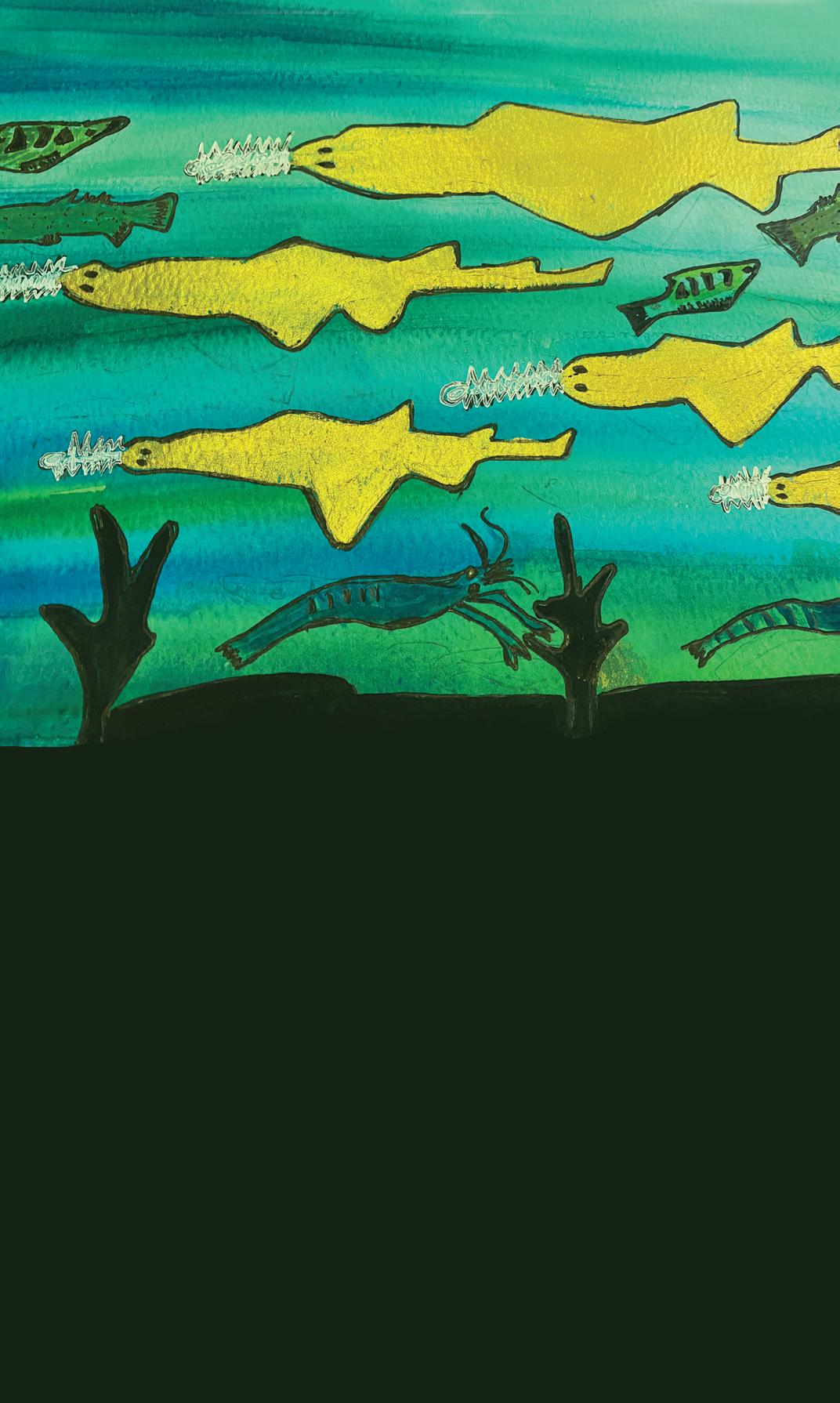
Many fish live in the Fitzroy River, Fitzroy River
Many fish live in the Fitzroy River, Fitzroy River
Barramundi live in the Fitzroy River
Barramundi live in the Fitzroy River
[Chorus]
[CHORUS]
Kapiwarnti palu nguniny
Martuwarrarla, martuwarrarla
Kapiwarnti palu nguniny
Martuwarrarla, martuwarrarla
Murrupal pa nguniny martuwarrarla
Murrupal pa nguniny martuwarrarla
[CHORUS]
Jampinparu jaa [rhythm: x-x-x]
Murrupal palu nguniny martuwarrarla
Jampinparu jaa [rhythm: x-x-x]
Murrupal palu nguniny martuwarrarla
[CHORUS]
Kurlamajarti jaa [rhythm: x-x-x]
Jampinparu jaa [rhythm: x-x-x]
Murrupal palu nguniny martuwarrarla
Kurlamajarti jaa [rhythm: x-x-x]
Jampinparu jaa [rhythm: x-x-x]
Murrupal palu nguniny martuwarrarla
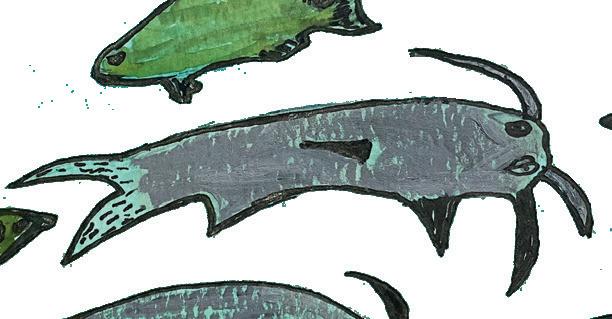
Black bream and barramundi live in the Fitzroy River
Black bream and barramundi live in the Fitzroy River
[Chorus]
Catfish and black bream and barramundi live in the Fitzroy River
Catfish and black bream and barramundi live in the Fitzroy River
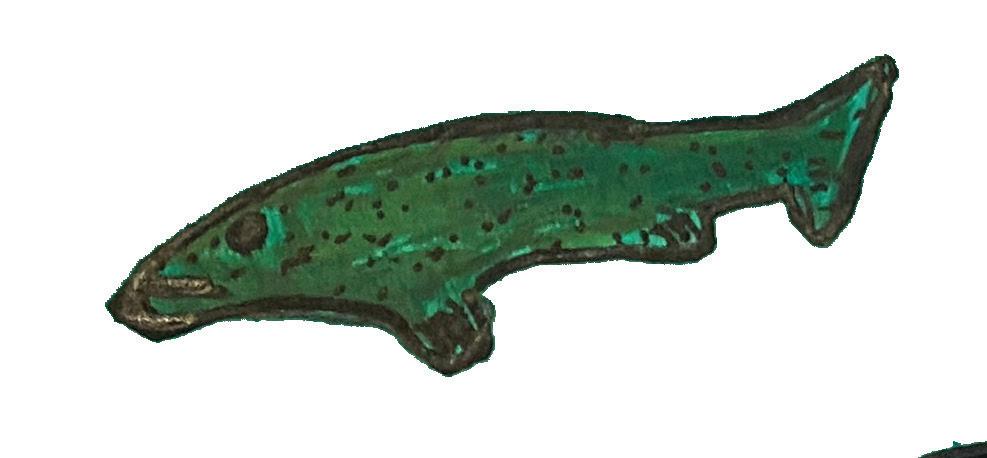
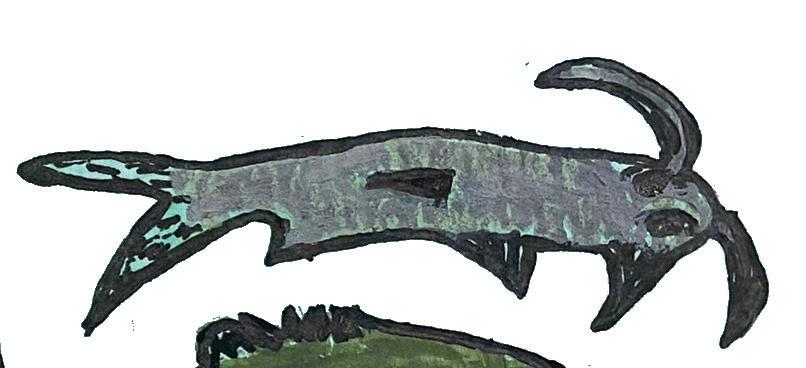
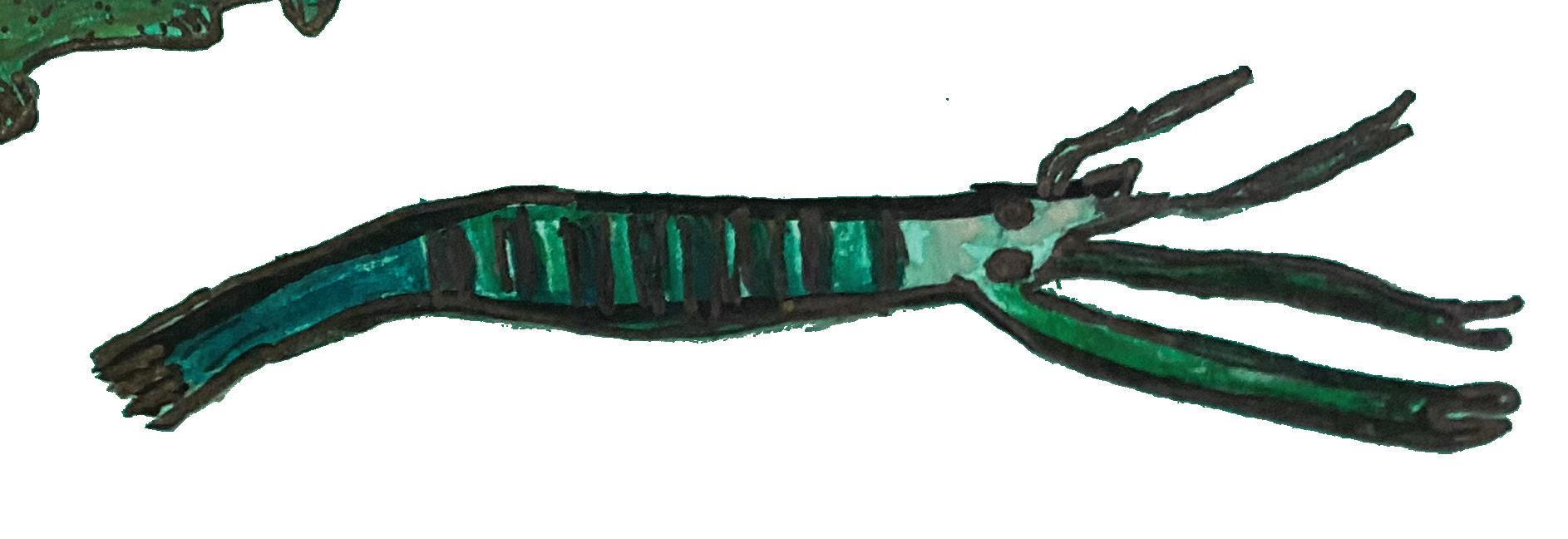
June Nixon and Gillian Howell
Kapiwarnti Palu Nguniny Martuwarrarla
Walmajarri

@ @ i Chorus 1
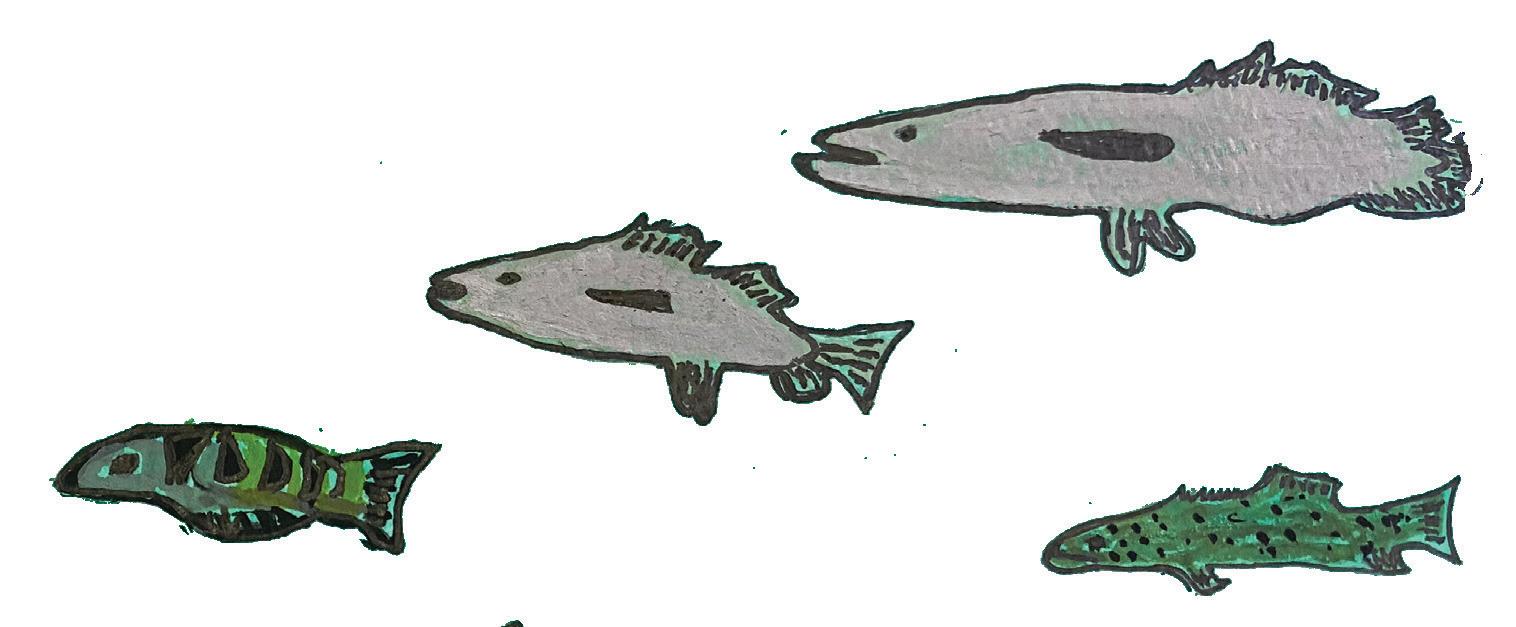
[Chorus]
Many fish live in the Fitzroy River, Fitzroy River
Many fish live in the Fitzroy River, Fitzroy River
Sawfish and catfish and black bream and barramundi live in the Fitzroy River
Sawfish and catfish and black bream and barramundi live in the Fitzroy River
[Chorus]
Many fish live in the Fitzroy River
Many fish live in the Fitzroy River
[CHORUS]
Kapiwarnti palu nguniny
Martuwarrarla, martuwarrarla
Kapiwarnti palu nguniny
Martuwarrarla, martuwarrarla
Piyalpiyal jaa [rhythm: x-x-x]
Kurlamajarti jaa [rhythm: x-x-x]
Jampinparu jaa [rhythm: x-x-x]
Murrupal palu nguniny martuwarrarla
Piyalpiyal jaa [rhythm: x-x-x]
Kurlamajarti jaa [rhythm: x-x-x]
Jampinparu jaa [rhythm: x-x-x]
Murrupal palu nguniny martuwarrarla
[CHORUS]
Kapiwarnti palu nguniny
Martuwarrarla
Kapiwarnti palu nguniny
Martuwarrarla
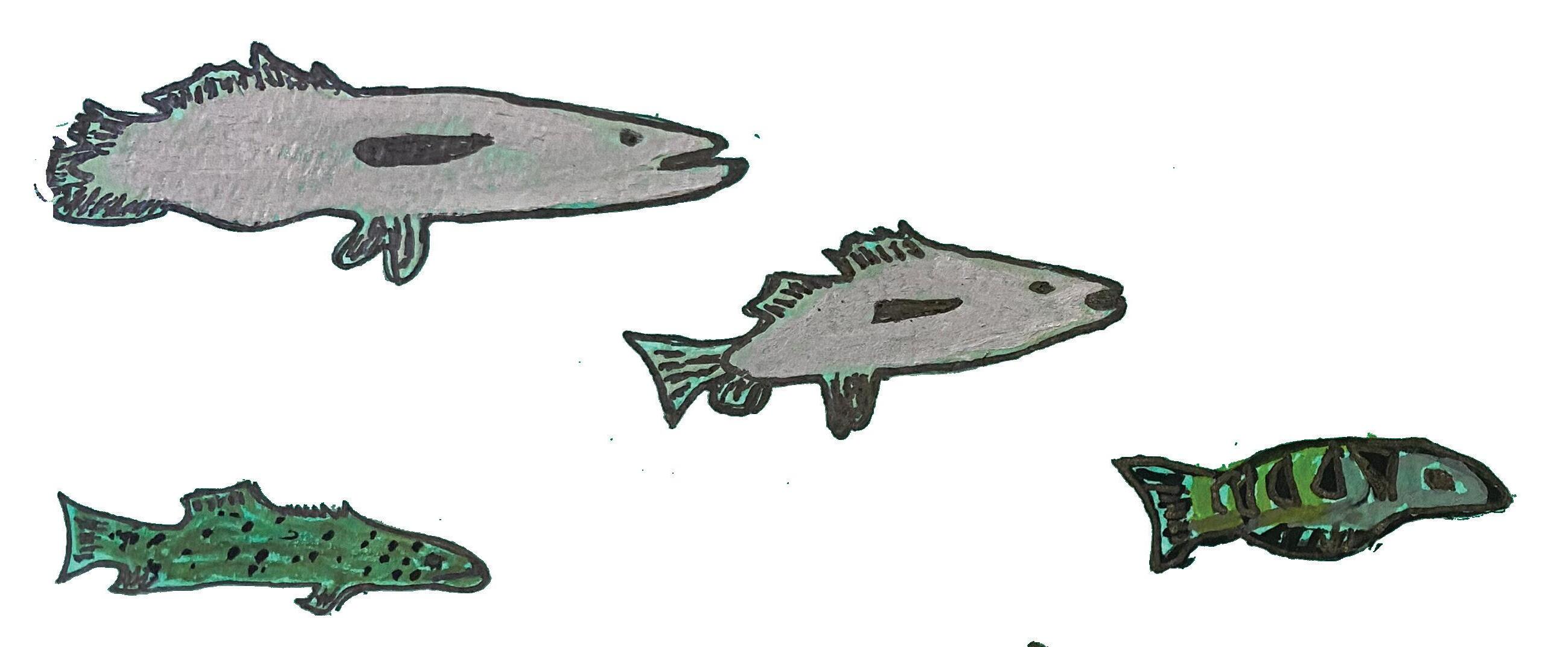

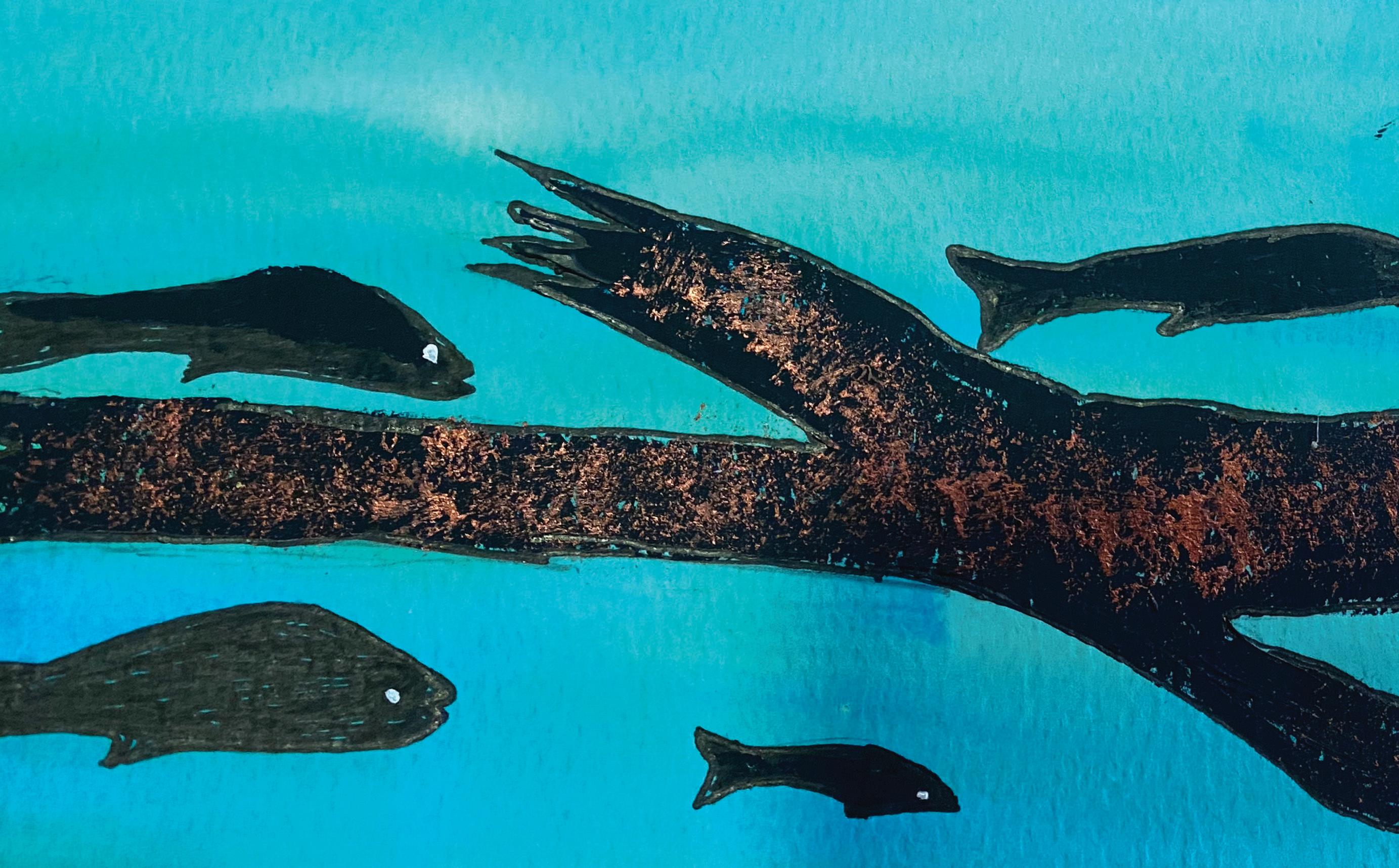



“This song is about one (kayan) goanna (kakaji) searching around, looking for something to eat. We’ve got plenty of goannas here, they’re all over the place and they’re always looking for food. When they find some and they’re full, they take themselves under the ground and sleep. Then they come out when they’re hungry and do it all over again. That’s why people love eating kakaji –they get nice and fat.” Samantha Frank
Translation
[Chorus]
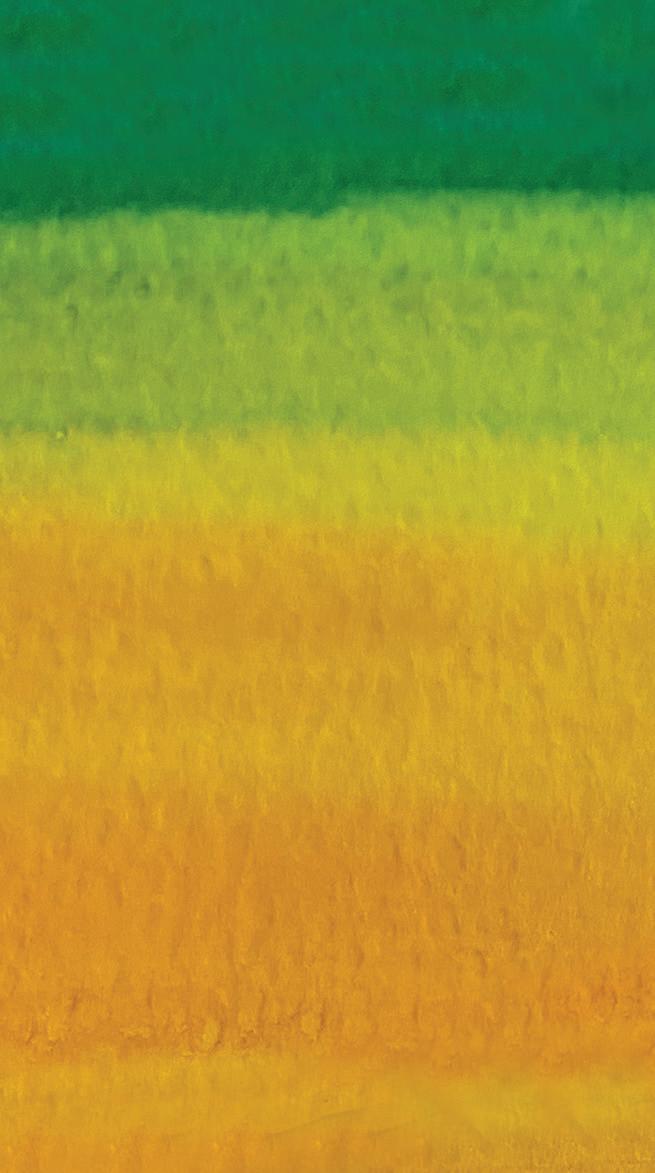
[CHORUS]
Kaniny martuwarrarla
Kayan kakaji
Kaniny martuwarrarla
Kayan kakaji
Kakaji muupungana miyipurru, miyipurru
Kakaji muupungana miyipurru [rhythm: x-x-x-x-x]
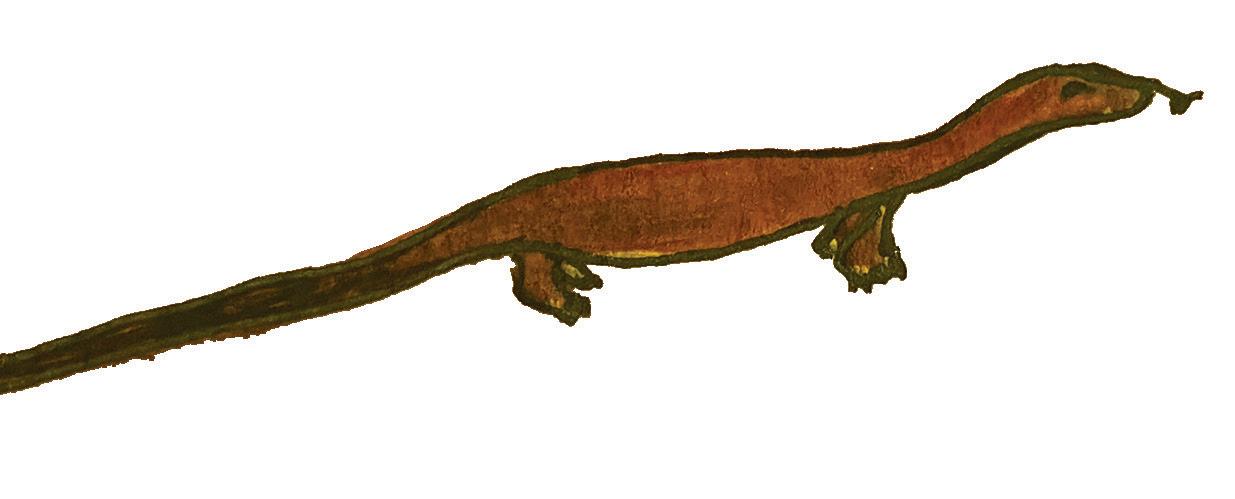
Down by the river
One goanna
Down by the river
One goanna
The goanna is looking for food, food
The goanna is looking for food
[Chorus]
The goanna is walking around the edge of the water
The goanna is walking around the edge of the water
[Chorus]
The goanna is walking around the sand, sand
The goanna is walking around the sand
[Chorus]
The goanna finds one frog, one frog
The goanna finds one frog [galump galump sluuuuurp]
[Chorus]
[CHORUS]
Kakaji kitpungana rirringkirla ngapanga
Kakaji kitpungana rirringkirla ngapanga
[CHORUS]
Kakaji kitpungana walyarrarla, walyarrarla
Kakaji kitpungana walyarrarla [rhythm: x-x-x-x-x]
[CHORUS]
Kakaji parlipinya kayan walak, kayan walak
Kakaji parlipinya kayan walak [galump galump sluuuuurp – eating sounds]
[CHORUS]

Kayan Kakaji (Walmajarri)
Kayan Kakaji Walmajarri
Sam Frank and Gillian Howell
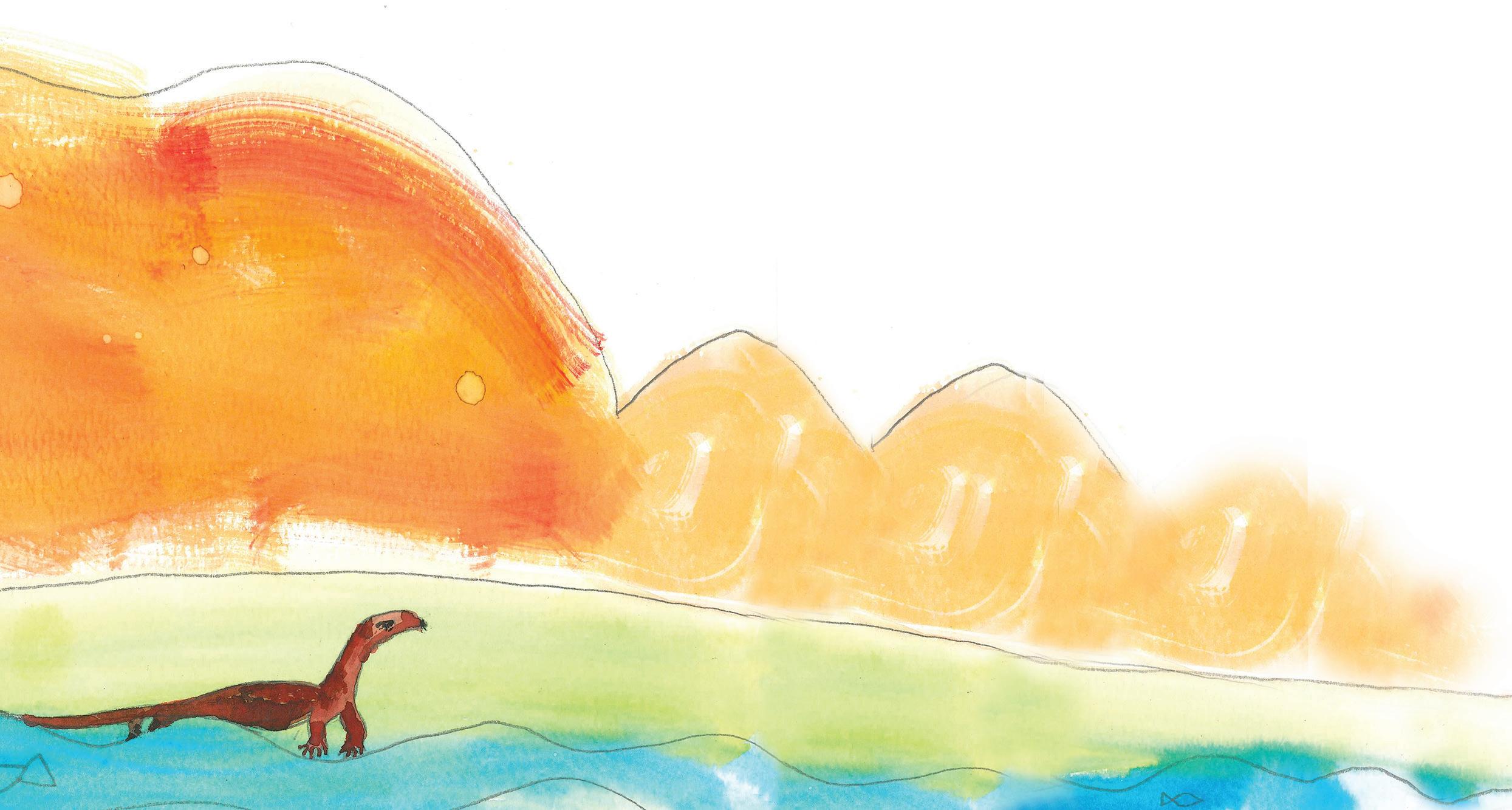
This song is a Gooniyandi adaptation of the children’s song ‘Slippery Fish’, composed by singer-songwriter and family performer Charlotte Diamond. In 2021, Baya Gawiy educators Patricia Cox and Min En Chek changed the English fish names to the Gooniyandi names for fish living in the Fitzroy River, and also modified the melody. Describing the largest fish as the ‘right-size galwanyi’ is a reference to the song of that name on page 78.
Translation
Boornda = spangled perch, a small fish often used for bait. Warlibirriya = (in the) river.
Goorloomangarri = catfish/lesser salmon, a medium-sized fish.
Galwanyi = freshwater sawfish; they can grow to be over 5 metres in length.
Joornanygarra = yay!

Slippery boornda, slippery boornda
Swimming in the warlibirriya
Slippery boornda, slippery boornda
Gulp, gulp, gulp
Oh no! Been eaten by…
Goorloomangarri, goorloomangarri
Swimming in the warlibirriya
Goorloomangarri, goorloomangarri
Gulp, gulp, gulp
Oh no! Been eaten by…
The right-size galwanyi, the right-size galwanyi
Swimming in the warlibirriya
The right-size galwanyi, the right-size galwanyi
Gulp, gulp, gulp…
Oh no! The galwanyi is biting, Pull the line in, pull the line in Pull… pull… pull…
It’s the right-size galwanyi
We can keep it for dinner
Joornanygarra! [clap hands]


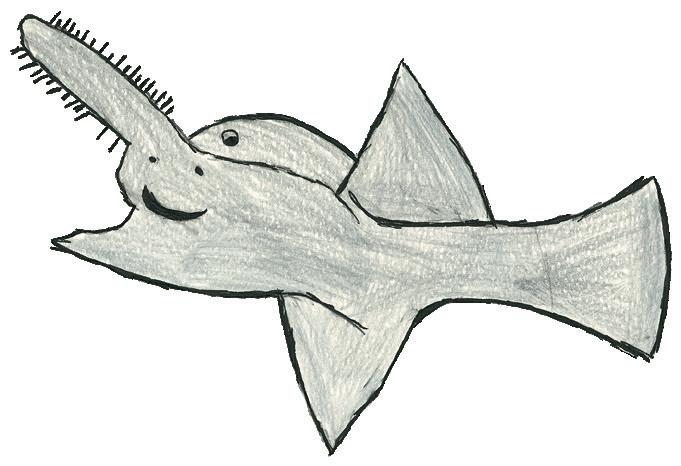
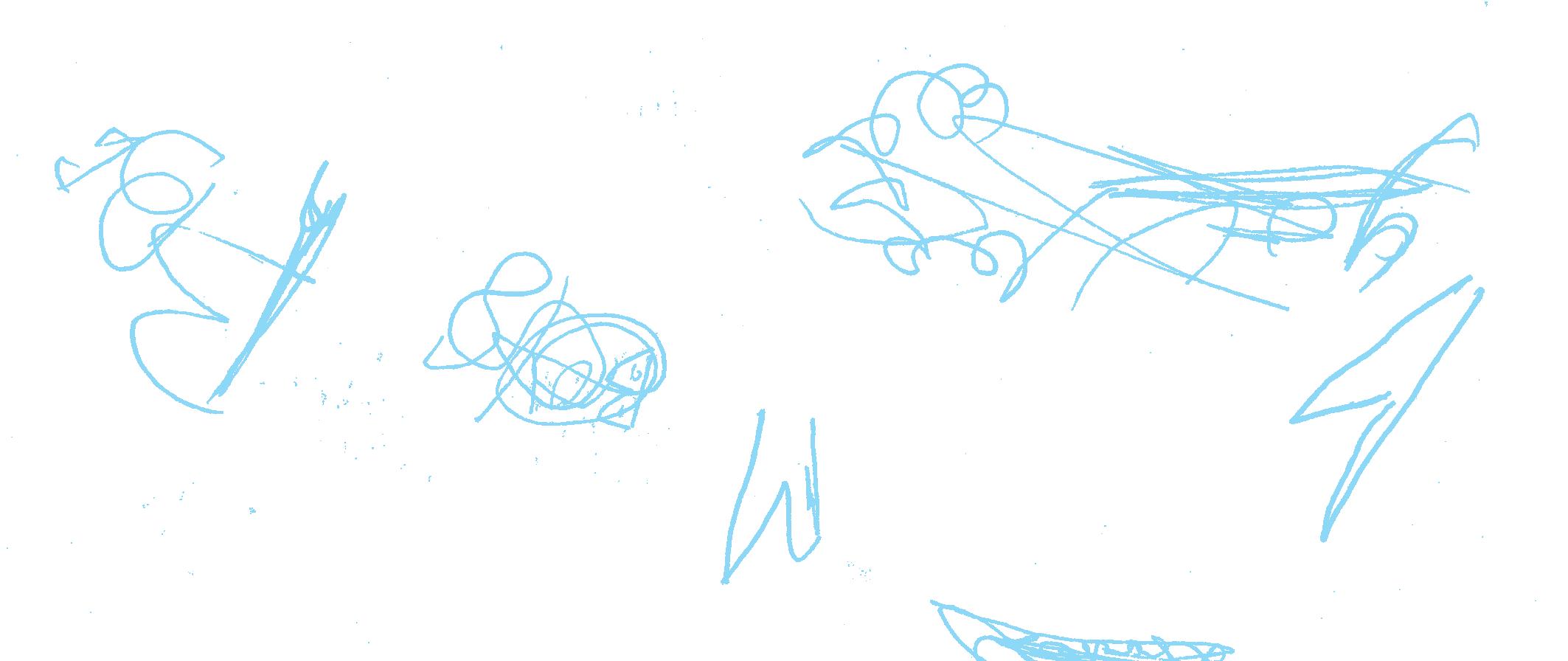



Patricia Cox and Min En Chek Slippery Boornda
Slippery Boornda
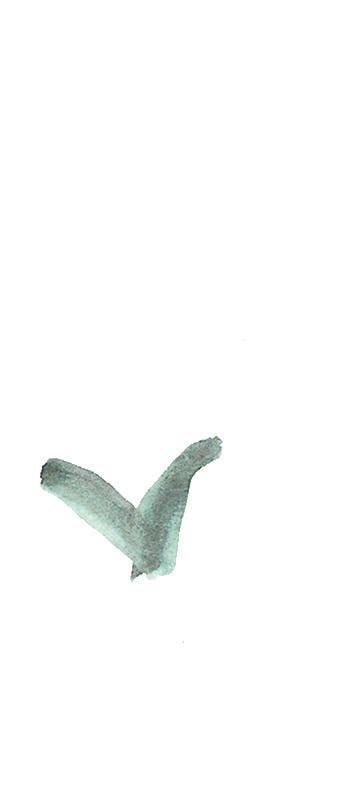

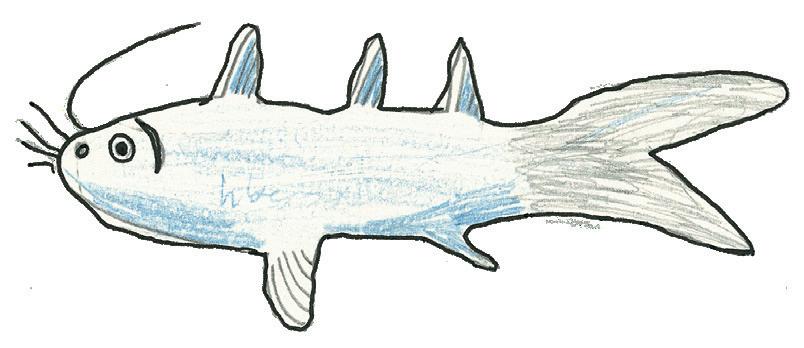
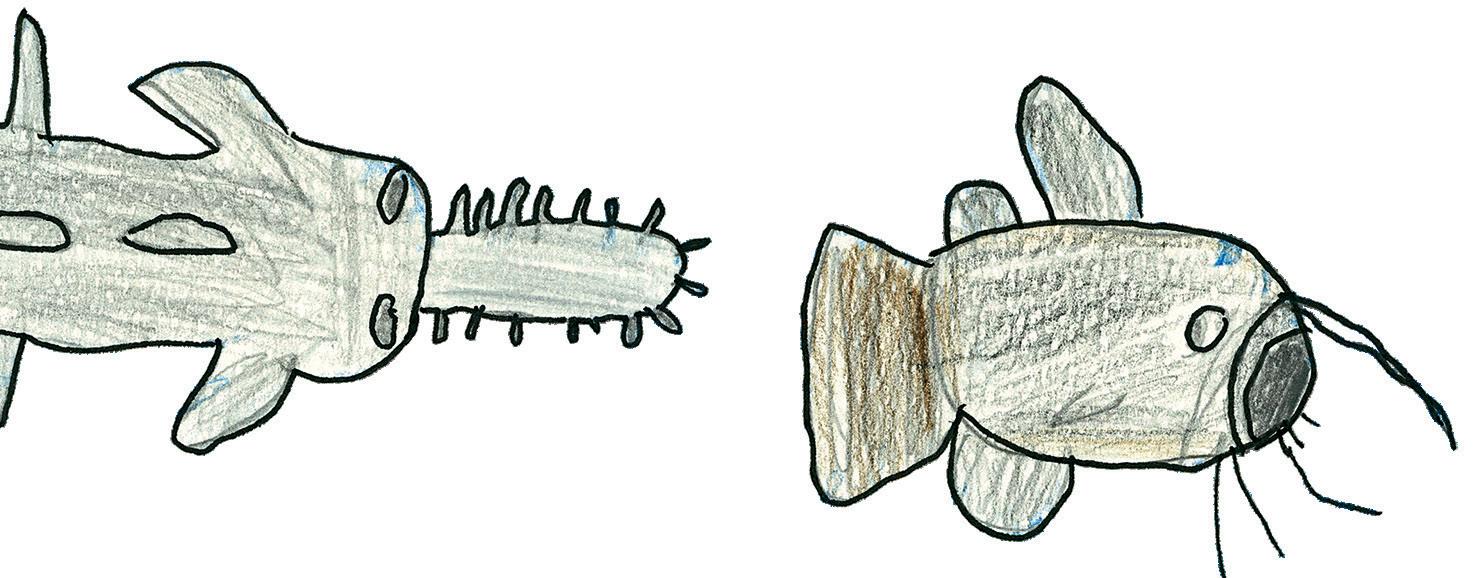

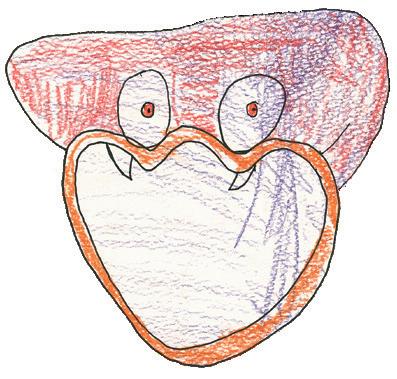


Counting
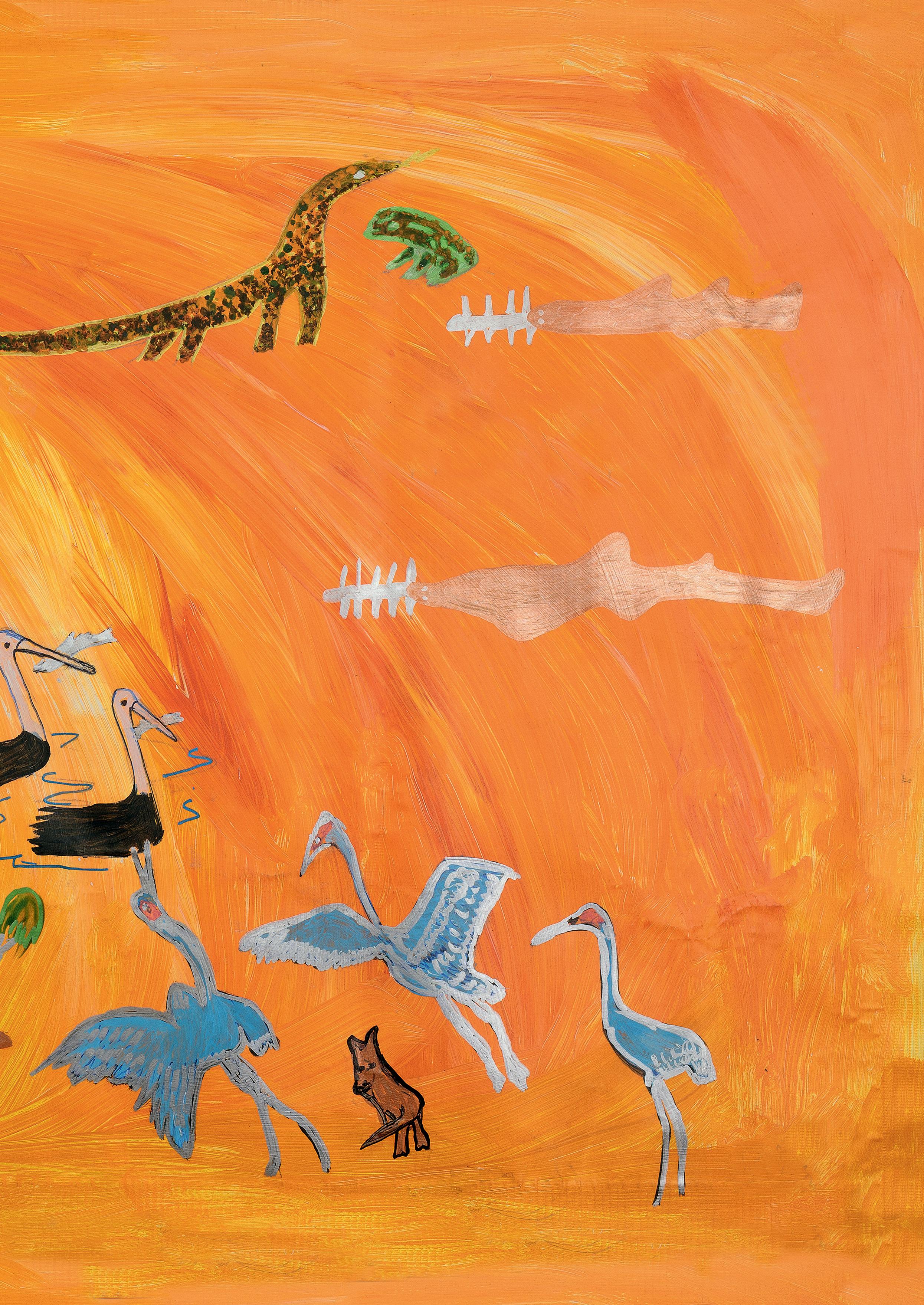
Learn to count in Bunuba, Gooniyandi and Kriol! In many Kimberley languages, you’ll find words for one, two, and three − after that, it’s just ‘lots’ or ‘biggest mob’ !
This song teaches you how to count to three in Bunuba, using the names and actions of local birds. The words were written by Susan Hoad when she was the Bunuba language teacher at the old Fitzroy Crossing school. As part of songwriting workshops in 2022, Gillian Howell made up a new melody for the song, and Patsy Bedford made sure the tune was a good match for the words and the way they’re meant to be spoken and sung.
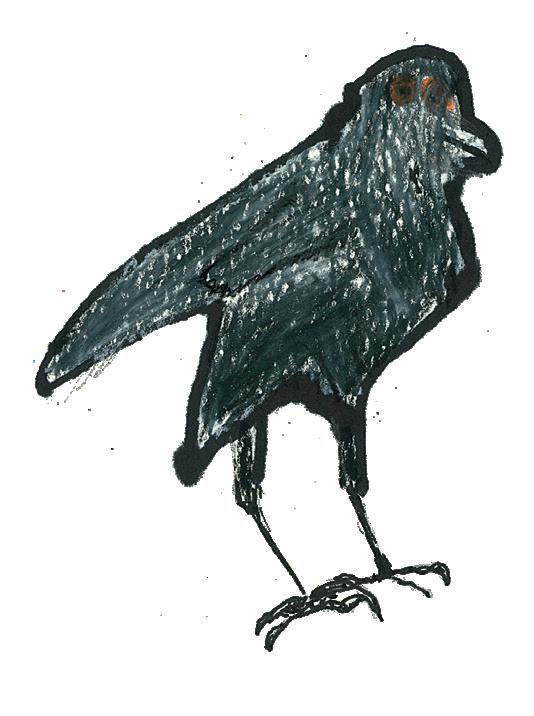
Translation
One crow sitting
One crow.
One crow sitting
One crow.
All the birds, all the birds
All the birds, all the birds.
Two galahs sitting
Two galahs.
Two galahs sitting
Two galahs.
All the birds, all the birds
All the birds, all the birds.
Three white cockatoos flying
Three white cockatoos.
Three white cockatoos flying
Three white cockatoos.
All the birds, all the birds
All the birds, all the birds.
Many finches flying
Many finches.
Many finches flying
Many finches.
All the birds, all the birds
All the birds, all the birds.
Yuwana wanggura yathara
Yuwana wanggura.
Yuwana wanggura yathara
Yuwana wanggura. Jirigiyani, Jirigiyani
Jirigiyani, Jirigiyani.
Thurranda giliny-giliny yathawurrantha
Thurranda giliny-giliny.
Thurranda giliny-giliny yathawurrantha
Thurranda giliny-giliny.
Jirigiyani, Jirigiyani Jirigiyani, Jirigiyani.
Ngalgurru laaba balbalwurragi
Ngalgurru laaba. Ngalgurru laaba balbalwurragi
Ngalgurru laaba.
Jirigiyani, Jirigiyani
Jirigiyani, Jirigiyani.
Nyanangarri nyi-nyi balbalwurragi
Nyanangarri nyi-nyi.
Nyanangarri nyi-nyi balbalwurragi
Nyanangarri nyi-nyi. Jirigiyani, Jirigiyani Jirigiyani, Jirigiyani.

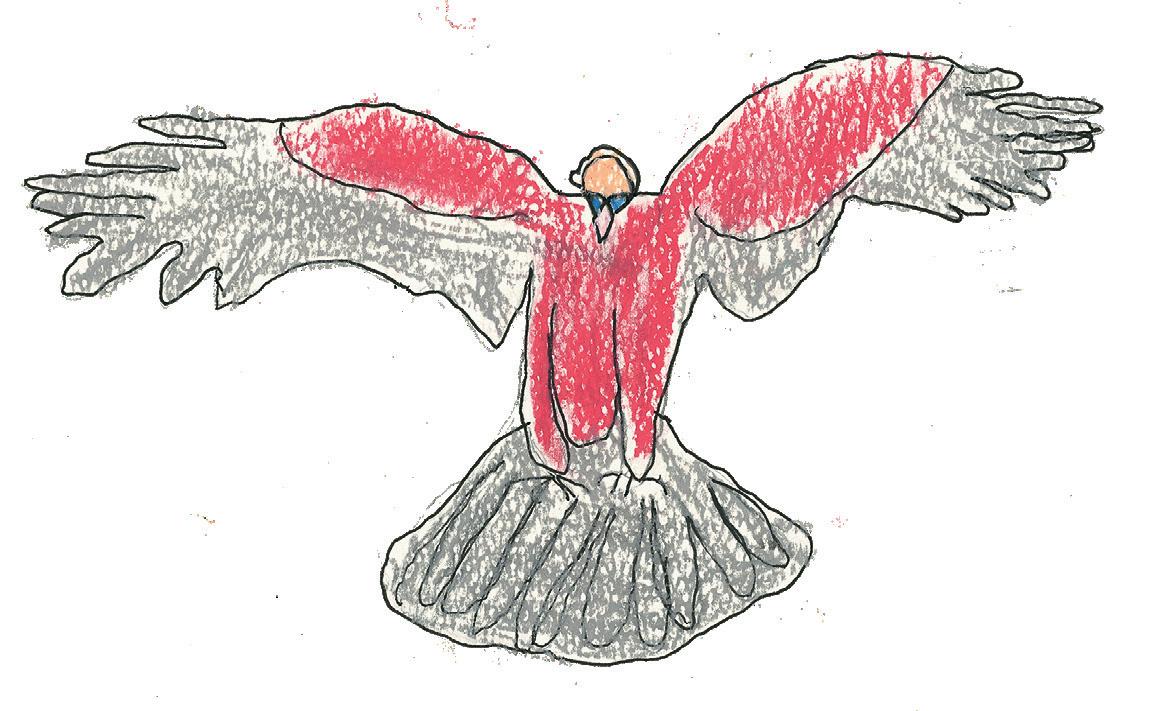


Jirigiyani Counting Song
Bunuba
Words: Susan Hoad
Jirigiyani Counting Song
Music: Patsy Bedford and Gillian Howell
© 2022
Bunuba


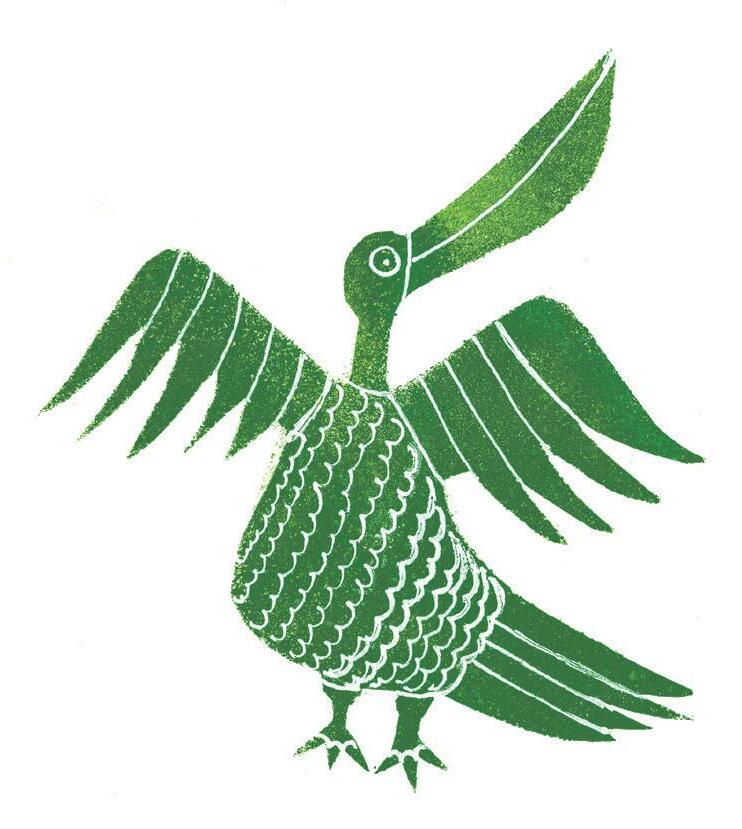
“We made this song so that it was easy for the kids to learn to count in Gooniyandi. We broke it down to be a simple story: the mayarda (pelicans) swim in the goorroorlaya (billabong) and they eat gawi (fish) when they are hungry (ngirrinyjila).” Patricia Cox
[Note: Italics indicate echoes.]
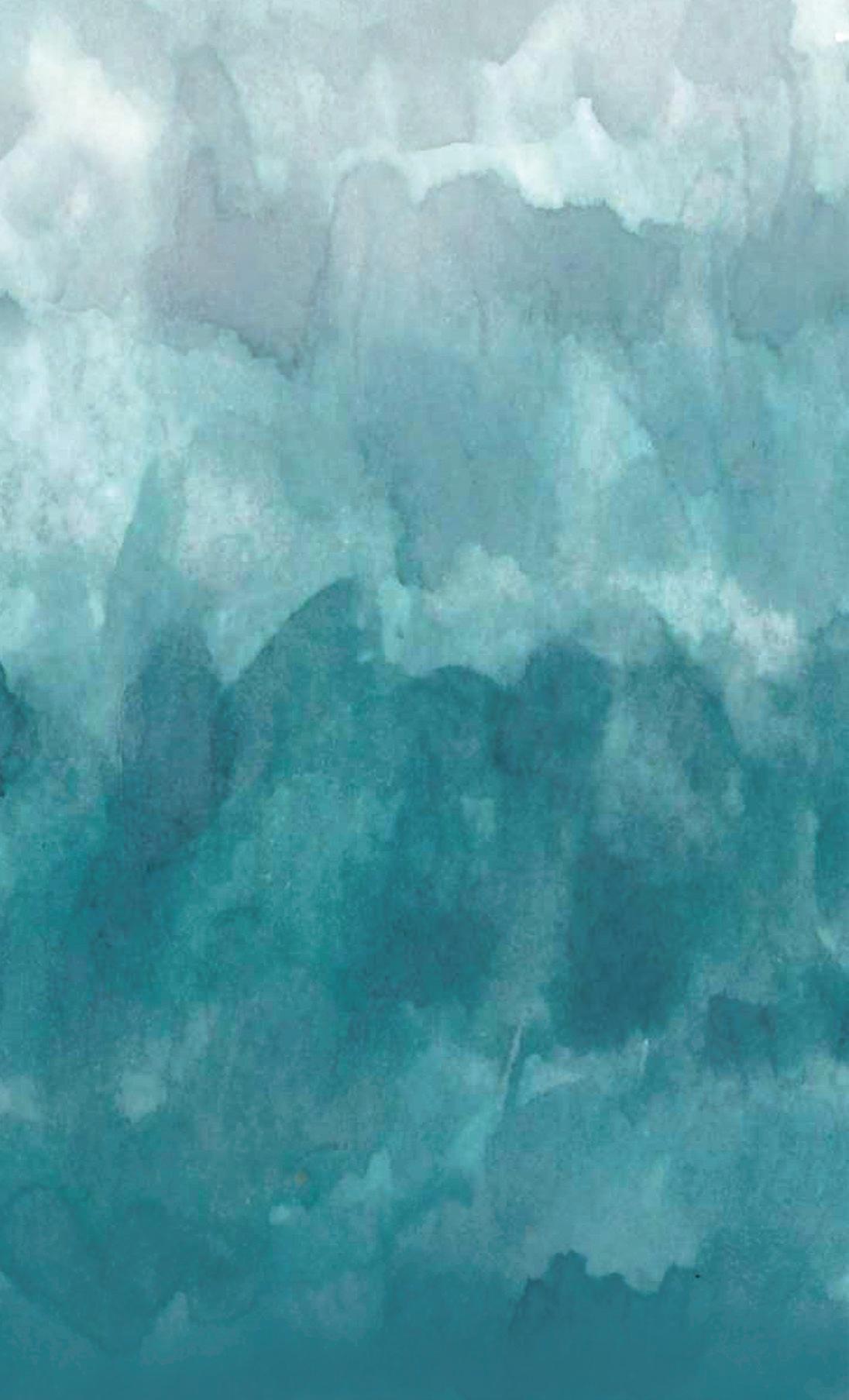
Translation
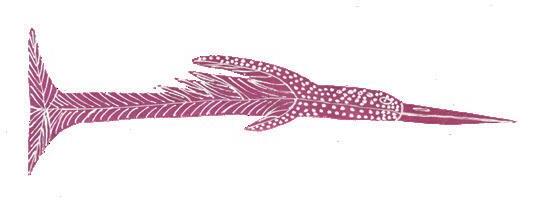
One One Two Two Three Three Pelicans
One One Two Two Three Three Pelicans
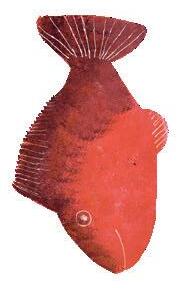
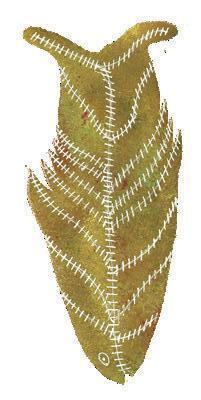
Swimming in the billabong
Swimming in the billabong
Swimming in the billabong Pelicans are hungry.
One One Two Two Three Three Fish
Pelicans eating Pelicans eating Pelicans eating Fish!
Yoowarni Yoowarni
Garndiwirri Garndiwirri
Ngarloodoo Ngarloodoo
Mayarda
Yoowarni Yoowarni
Garndiwirri Garndiwirri
Ngarloodoo Ngarloodoo
Mayarda
Nyoomboorlwoorroo goorroorlaya
Nyoomboorlwoorroo goorroorlaya
Nyoomboorlwoorroo goorroorlaya
Mayarda ngirrinyjila.
Yoowarni Yoowarni
Garndiwirri Garndiwirri
Ngarloodoo Ngarloodoo
Gawi
Mayarda ga ngabgoora
Mayarda ga ngabgoora
Mayarda ga ngabgoora Gawi!
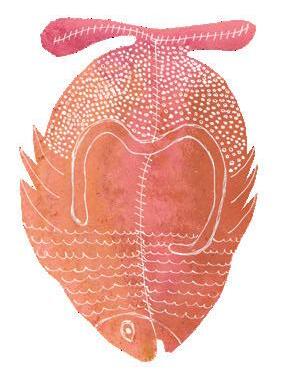





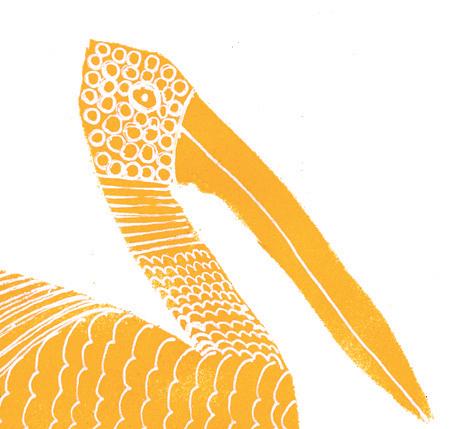
Mayarda Gooniyandi
Patricia Dick and Delphine Shandley withy Gillian Howell

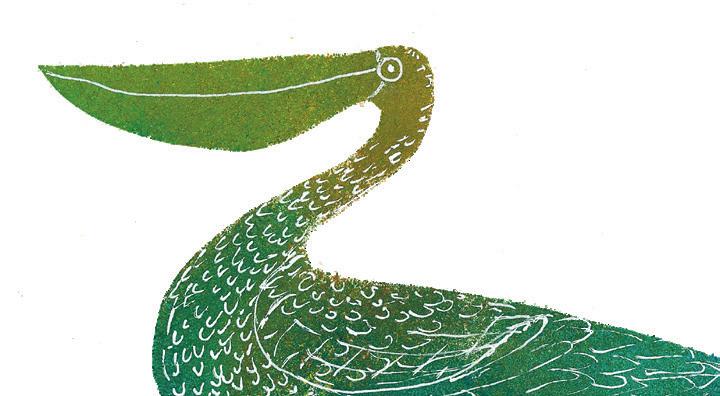
This is a Kimberley Kriol version of the traditional children’s song ‘Five little speckled frogs’. Kimberley Kriol is spoken across the Kimberley and is often used among Aboriginal people from different language groups. It is the home language for many children in the Fitzroy Valley. This translation is from a collection of songs, Kimbali Kid Kriol Songbook published in 1997 by Yiyili Aboriginal Community School, Yiyili Community, Kulkarriya Community School, and Millijidee Community.
It is credited as follows: “Ola wed en myusik: mibala nomo sabi det naim blanga dijan pejin hubin raidim dijan song.” (“Words and music: we no longer say the name of the person who wrote this song.”)
Translation
Five green frogs, sitting on a green log, Eating good food,
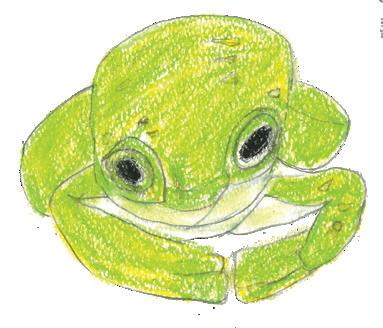
One green frog, jumped into the billabong. And then there were only four frogs.
Four green frogs, sitting on a green log, Eating good food.
One green frog, jumped into the billabong. And then there were only three frogs.
Three green frogs, sitting on a green log, Eating good food.
One green frog, jumped into the billabong. And then there were only two frogs.
Two green frogs, sitting on a green log, Eating good food.
One green frog, jumped into the billabong. And then there was only one frog.
One green frog, sitting on a green log, Eating good food.
One green frog, jumped into the billabong. And then there were no frogs.
Faibala grinwan frog, sidan la grinwan log, Idimbat ola gudwan taga.
Wanbala grinwan frog, jamp langa bilabong
Deya bin dis oni fobala.
Fobala grinwan frog, sidan la grinwan log, Idimbat ola gudwan taga.
Wanbala grinwan frog, jamp langa bilabong. Deya bin dis oni thribala.
Thribala grinwan frog, sidan la grinwan log, Idimbat ola gudwan taga.
Wanbala grinwan frog, jamp langa bilabong.
Deya bin dis oni tubala.
Tubala grinwan frog, sidan la grinwan log, Idimbat ola gudwan taga.
Wanbala grinwan frog, jamp langa bilabong.
Deya bin dis oni wanbala.

Wanbala grinwan frog, sidan la grinwan log, Idimbat ola gudwan taga.
Wanbala grinwan frog, jamp langa bilabong.
Deya bin dis oni najingbala.
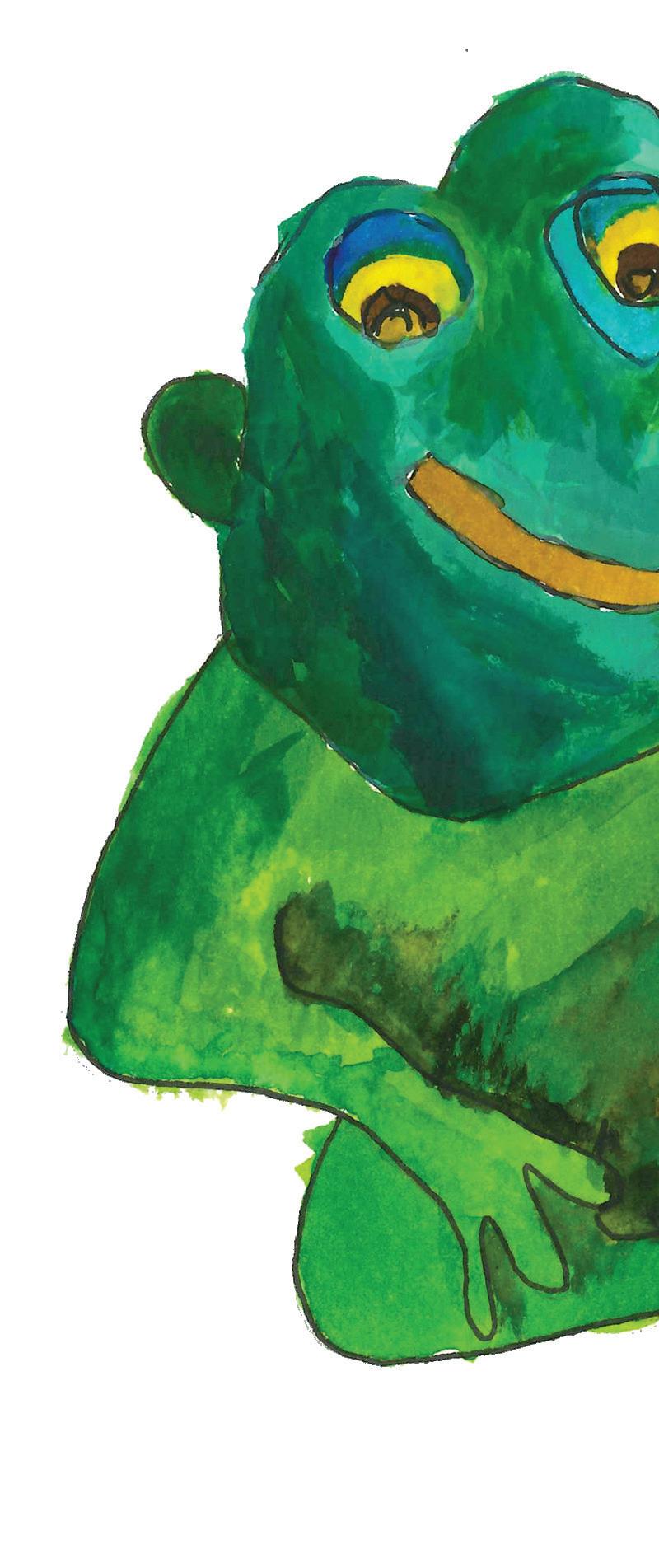

Faibala Grinwan Frog
Faibala Grinwan Frog
Kimberley Kriol
Based on Five Little Speckled Frogs (Traditional)
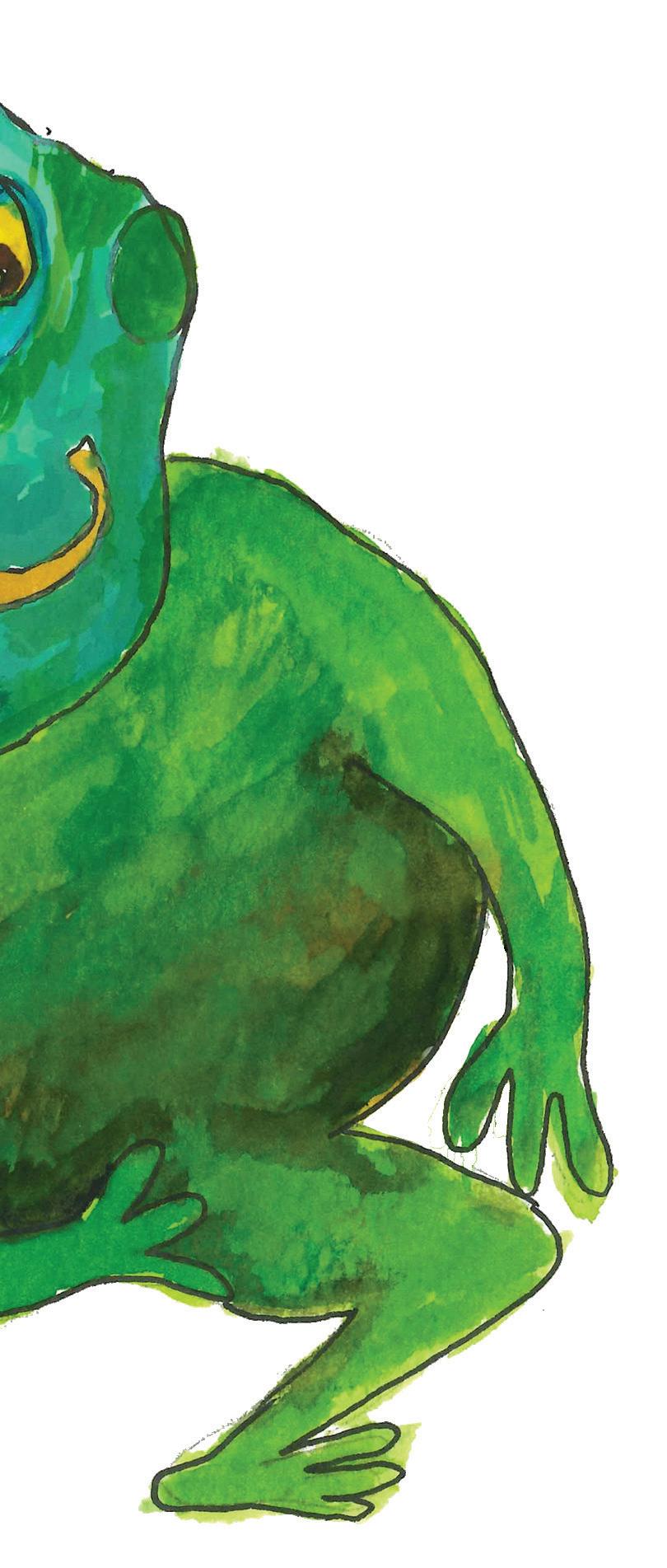

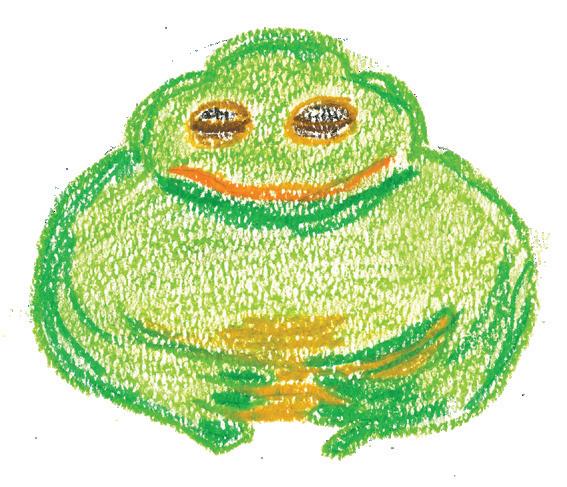

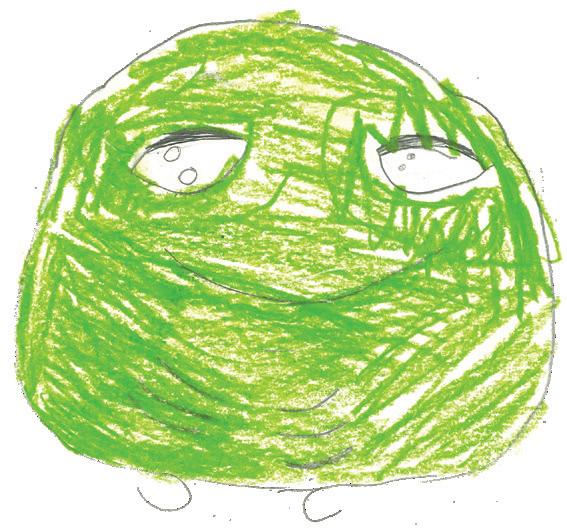

Lullabies
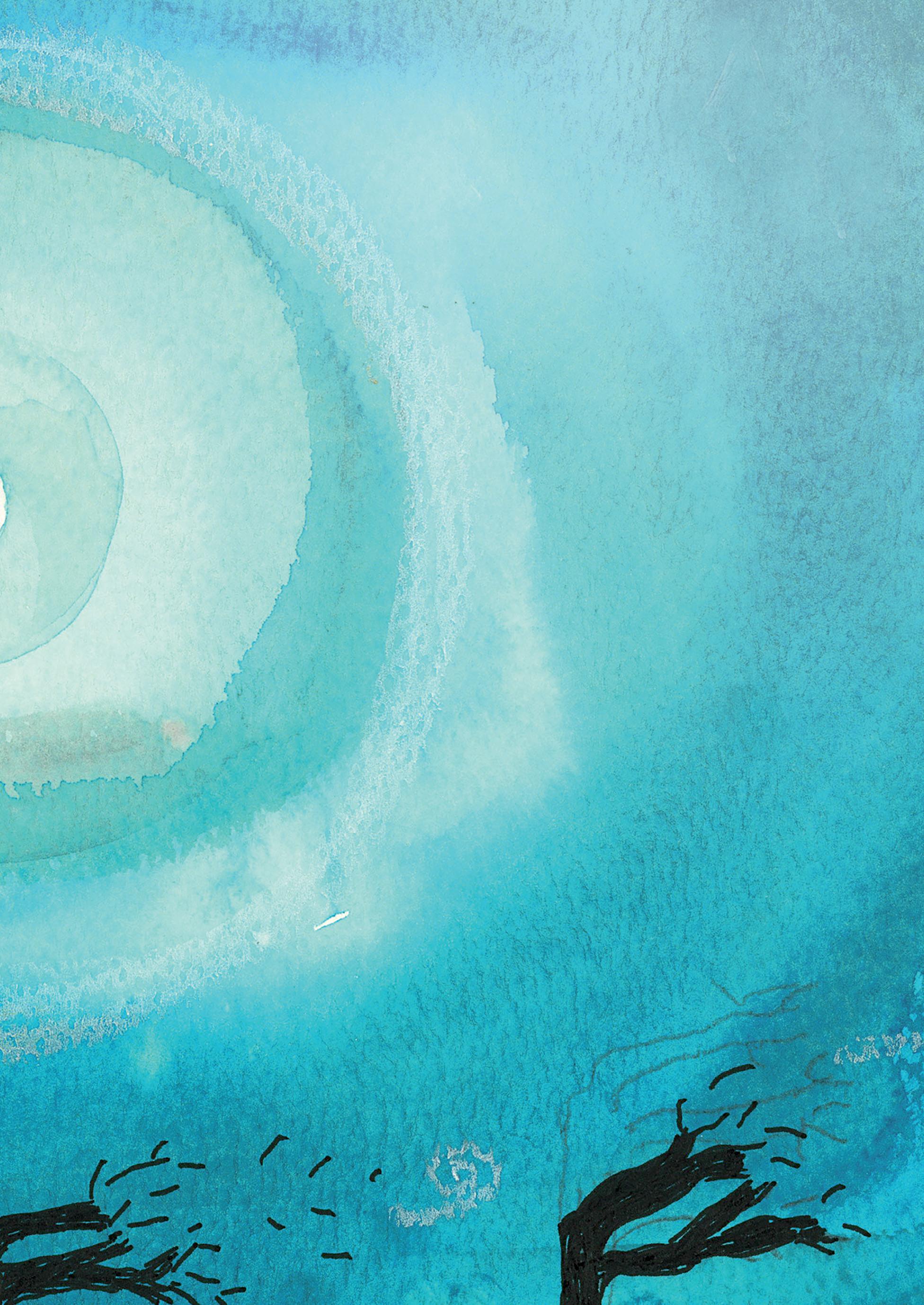
Send your little ones to sleep with these gentle, peaceful lullabies.
“In the early 2000s, when one of our old men who was a language teacher and knowledge holder passed away, we were thinking: how can we explain to the children that he is gone, what do we say? How can we make sure that the children have a role in his farewell?
We will just tell them he’s up in the sky looking at us. The children sang this song at his funeral and at other funerals.”
Patsy Bedford and June Oscar

Translation
Twinkling, twinkling

Star high above
High, high
In the sky
Twinkling, twinkling
Star high above High, high
In the sky
Jalma jalma gira
Wadanyi rawurra
Rawurra, rawurra
Birrinyi yuwa
Jalma jalma gira
Wadanyi rawurra
Rawurra, rawurra
Birrinyi yuwa




Words and Music: Patsy Bedford and June Oscar
Jalma jalma Gira
Bunuba



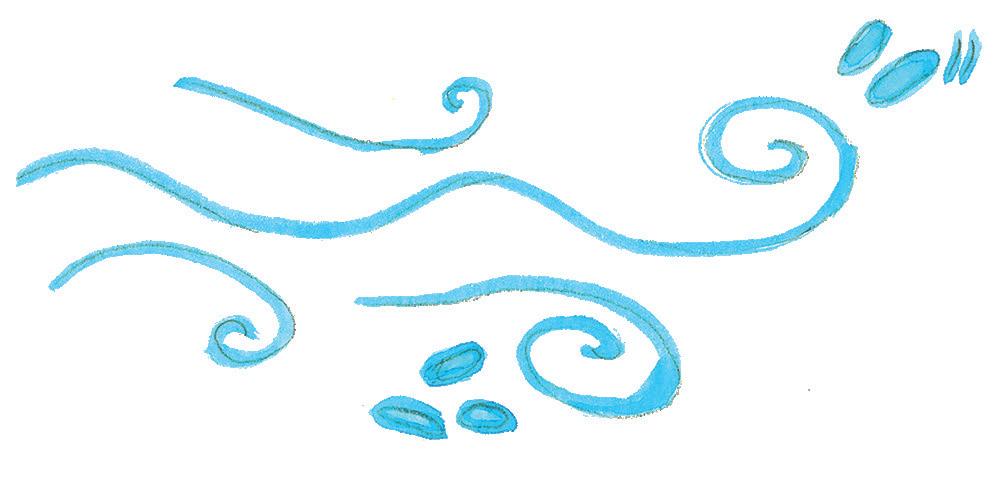
Delphine Shandley wrote this song with Chris Aitken and Stacey Brooking for the seasonal calendar curriculum at Baya Gawiy. It uses Gooniyandi and English language. The three Gooniyandi women who recorded the song (Patricia Cox, Cissy Nuggett, and Brenda Shaw) explained:
“Moonggoowarla is cold time. It’s a good time for bush tucker like yams, and for hunting and fishing. All our bush food is fat and ready for eating. The fish and the animals might be hibernating – the fish stop biting, it’s too cold to open their mouths! –but we know how to hunt them out.”
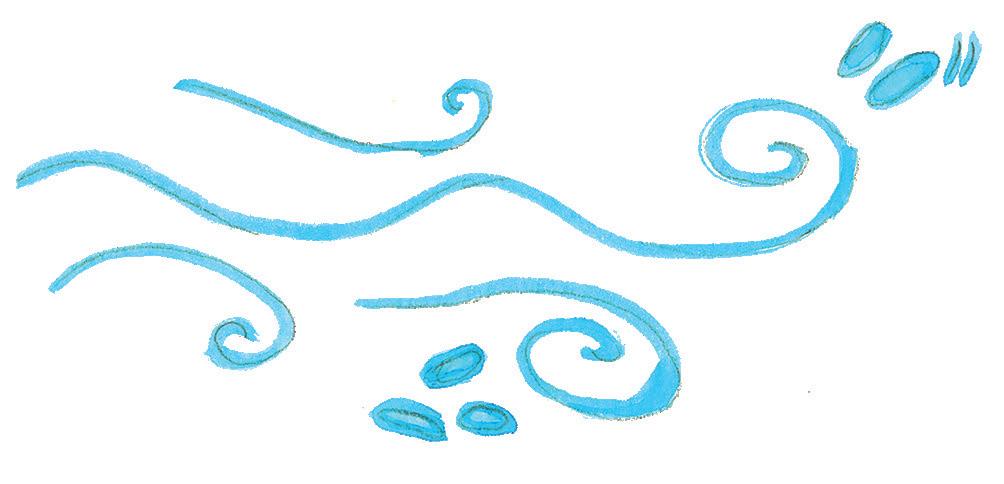
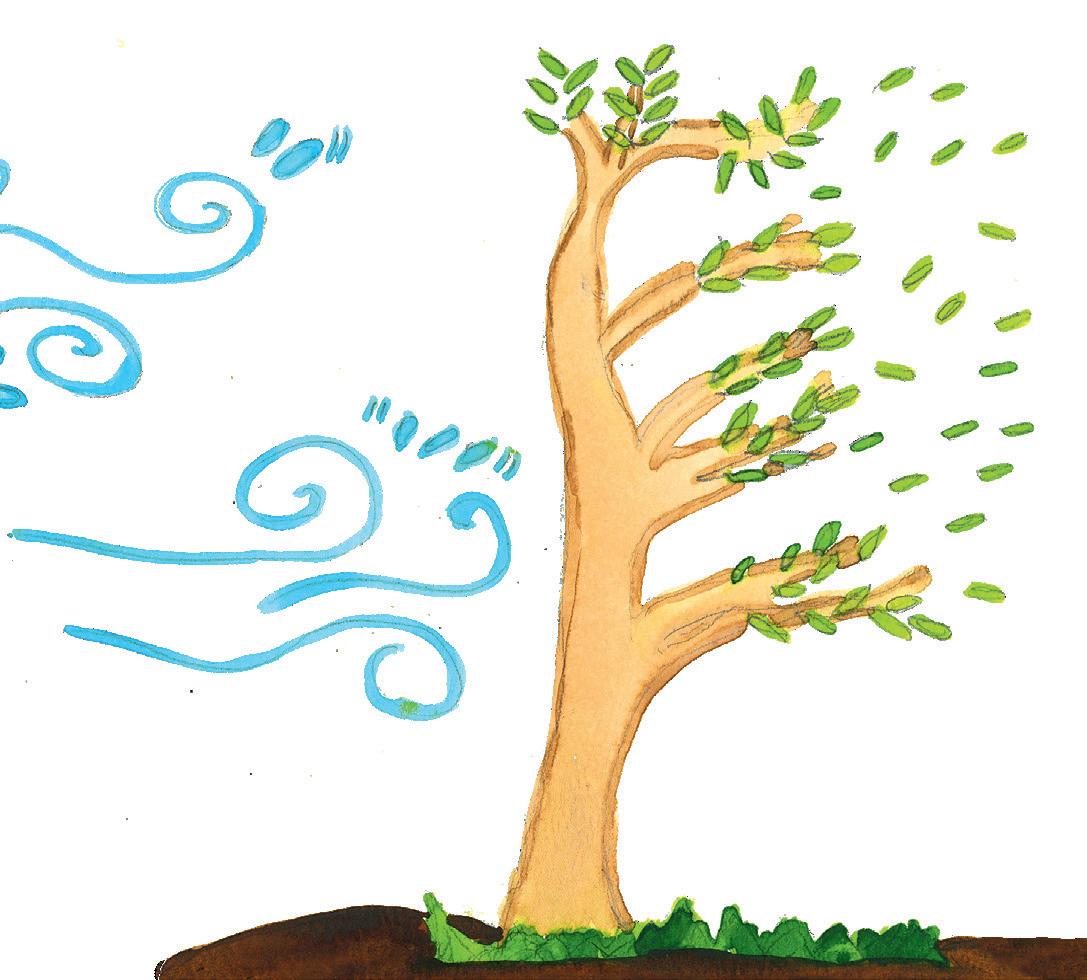
Moonggoowarla gin.garli
Comes from the East
This gin.garli she comes
This is what we know.
Then Jarloomboo
Appears to say Galwanyi min.ga ngarri
Let’s fish today.

Moonggoowarla gin.garli
Laandi birrinyiya Moonggoowarla gin.garli
Does blow away.
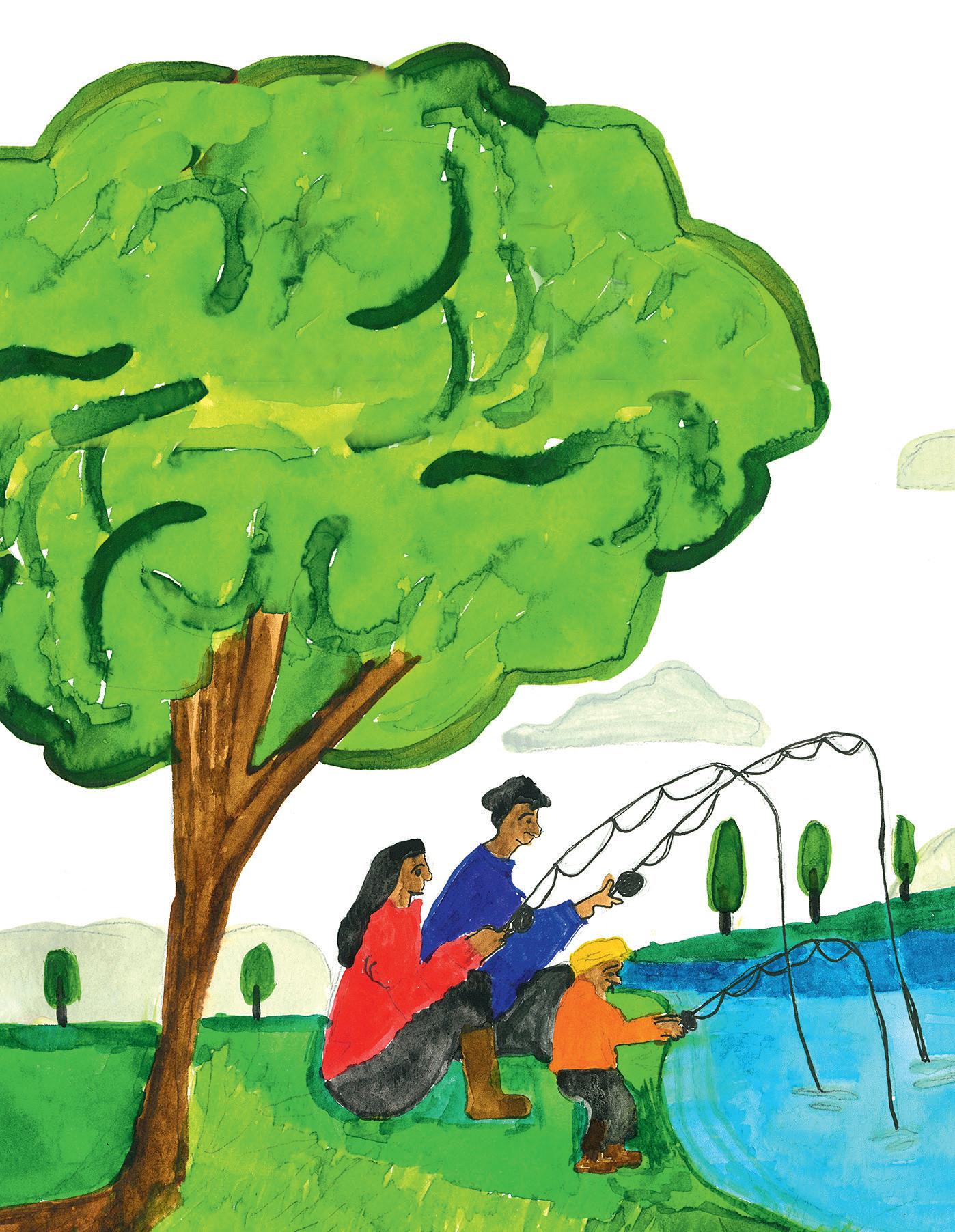
Moonggoowarla Gin.garli
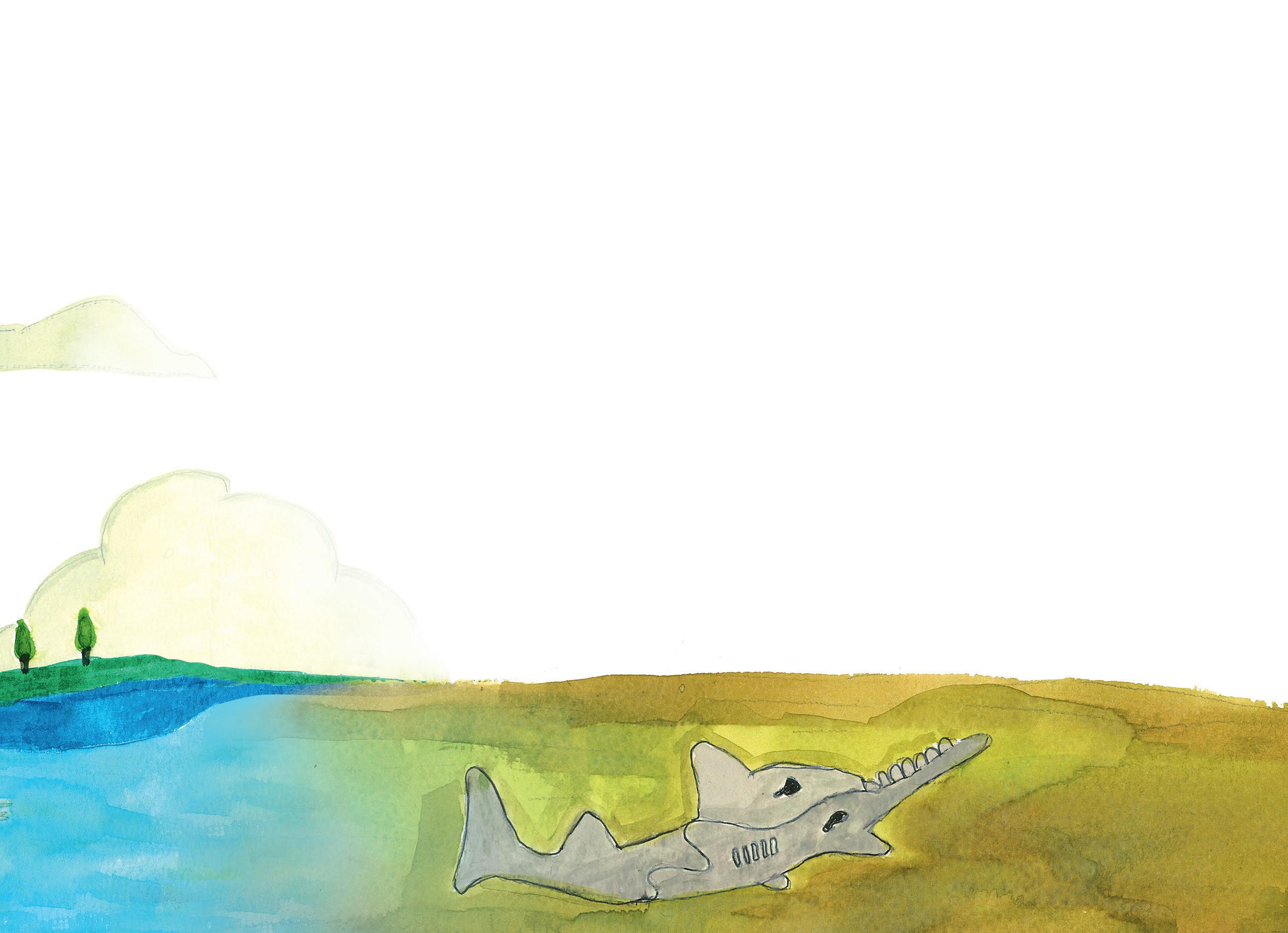
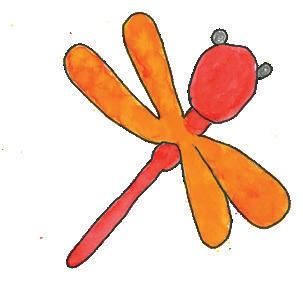
Translation
“The arrival of Jarloomboo, the red dragonfly, is the sign that we are in the cold season. The Moonggoowarla gin.garli (cold time wind) has a different kind of coolness. At this time of year, the sky turns pink in the afternoons and there’s a ring around the moon at nighttime. Moonggoowarla is coldest at the start, we call this ngamari (the female season). Yoowooloowa (male season) is not so cold. When you feel that change, you know that the cold time is coming to an end. That’s why the song says, ‘it comes and goes from ngamari to yoowooloowa’.”
Laandi birrinyiya = up in the sky Galwanyi min.ga ngarri = the freshwater sawfish is fat

Moonggoowarla gin.garli It comes and goes From ngamari to yoowooloowa. From ngamari to yoowooloowa.
Moonggoowarla Gingarli: page 2
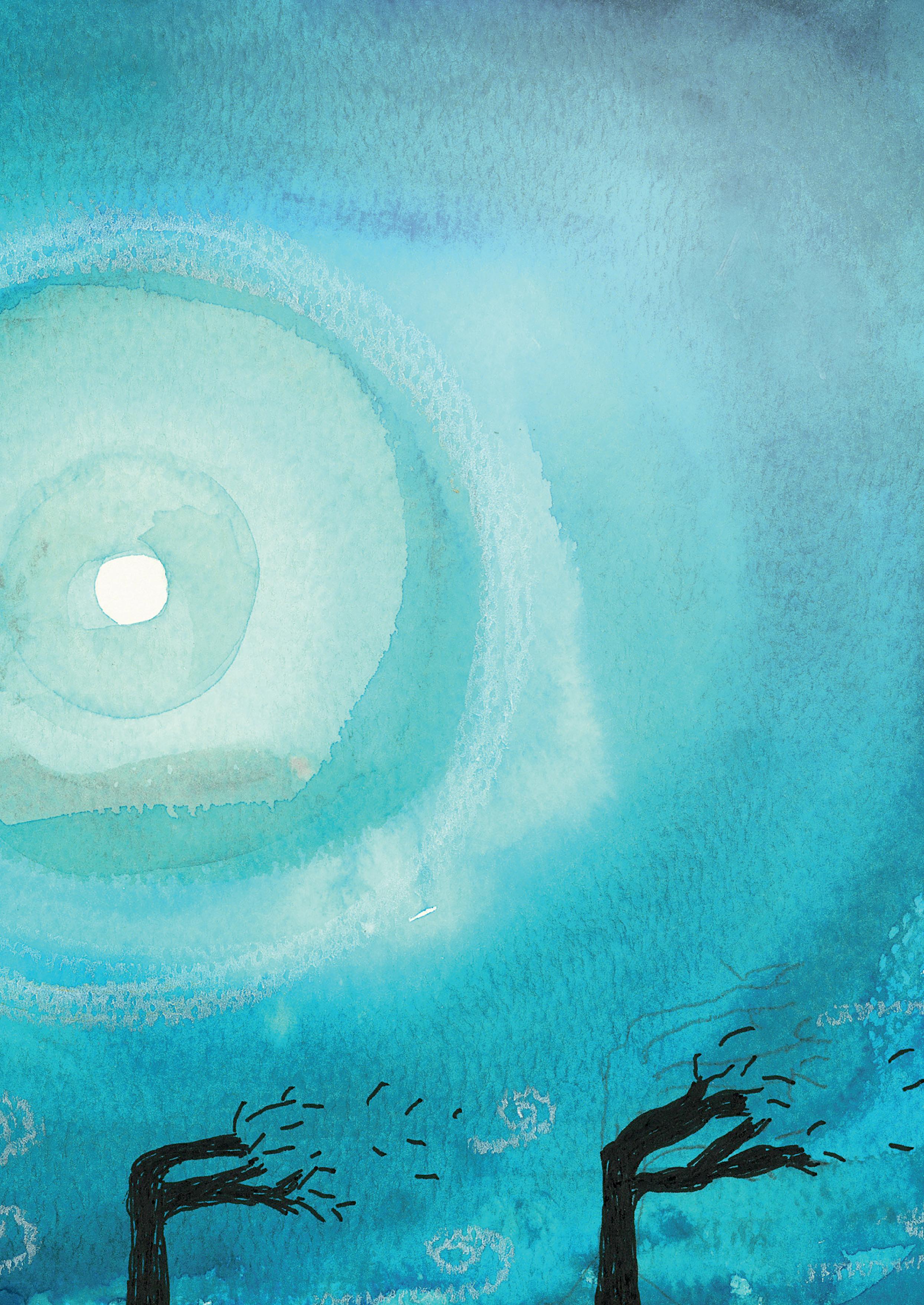
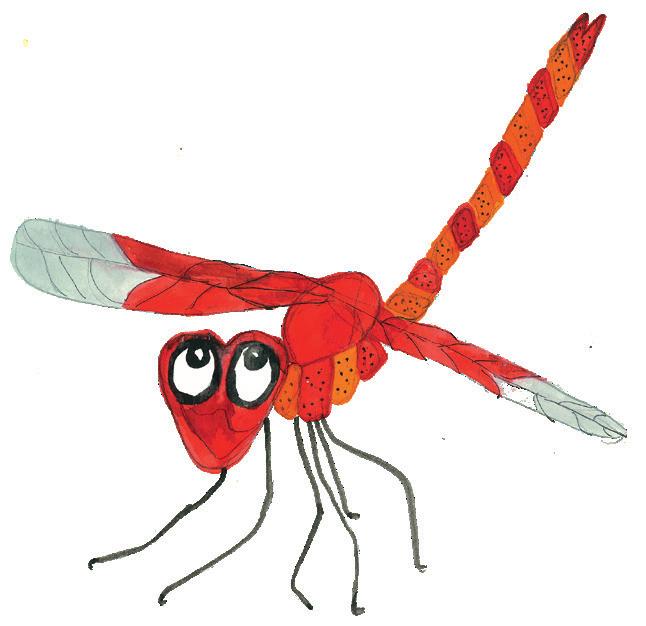
Susan Hoad, Amarillo Nam Oscar, Patsy Bedford and Gillian Howell wrote this Bunuba lullaby in August 2022. They revised it with June Oscar and Selina Middleton in September 2024 and recorded it under the trees at Yiramalay. Wininy (baby emu), udu-uduk (baby white-faced wallaby), and jambila (baby barramundi) are the names of the three age groups and their playrooms at Baya Gawiy.
This Bunuba lullaby uses language recalled by the songwriters from their childhood. Their old people would sing ‘waa waa waa’ to hush a baby to sleep on their chest and repeat quietly ‘muwayi digawu’ meaning ‘go to sleep’. June remembers parents and grandparents telling their little ones to go to sleep so that they are rested for all of tomorrow’s activities: going to the river, fishing, playing, hunting. The women laughed thinking about all the little animals going to sleep. Everybody is sleeping except the baby!

Translation
Waa waa waa
Go to sleep
Waa waa waa
Go to sleep
The baby barramundi are sleeping
The baby white-faced wallabies are sleeping
The baby emus are sleeping
Everybody is sleeping
Waa waa waa
Muwayi digawu
Waa waa waa Muwayi digawu
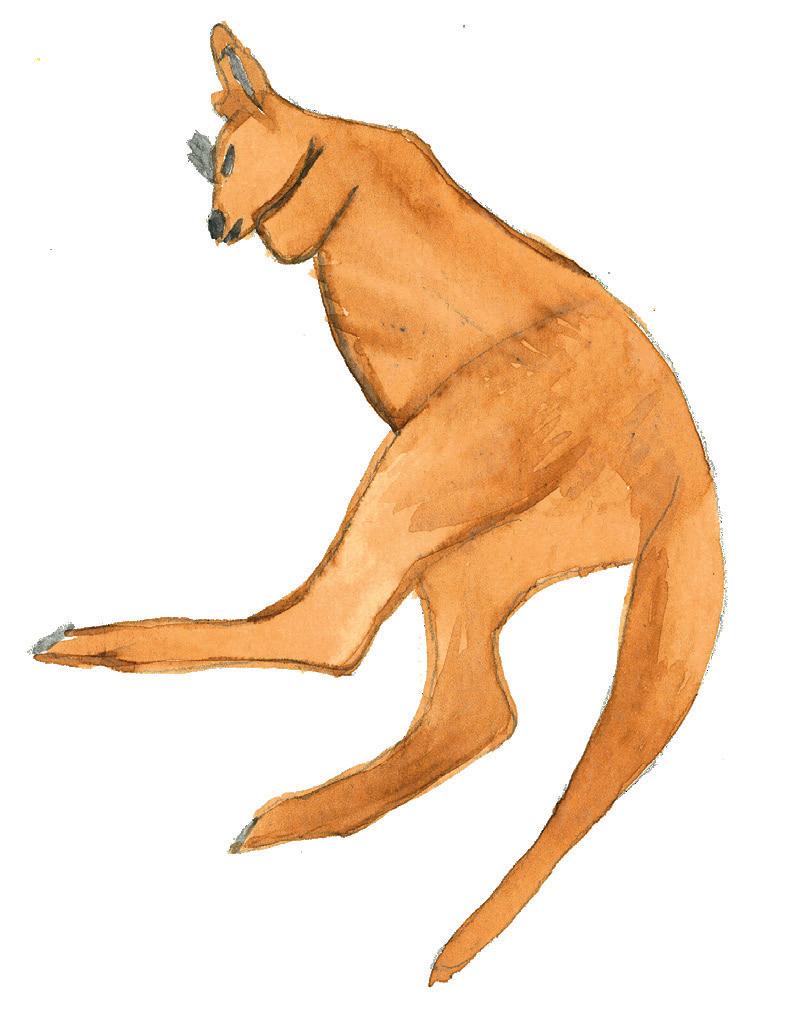
Jambila digawani Udu-uduk digawani
Wininy digawani Muwayi digawarra
(Performance note: a small group can vocalise “Shh... Shh...”
over the words “Muwayi digawarra")
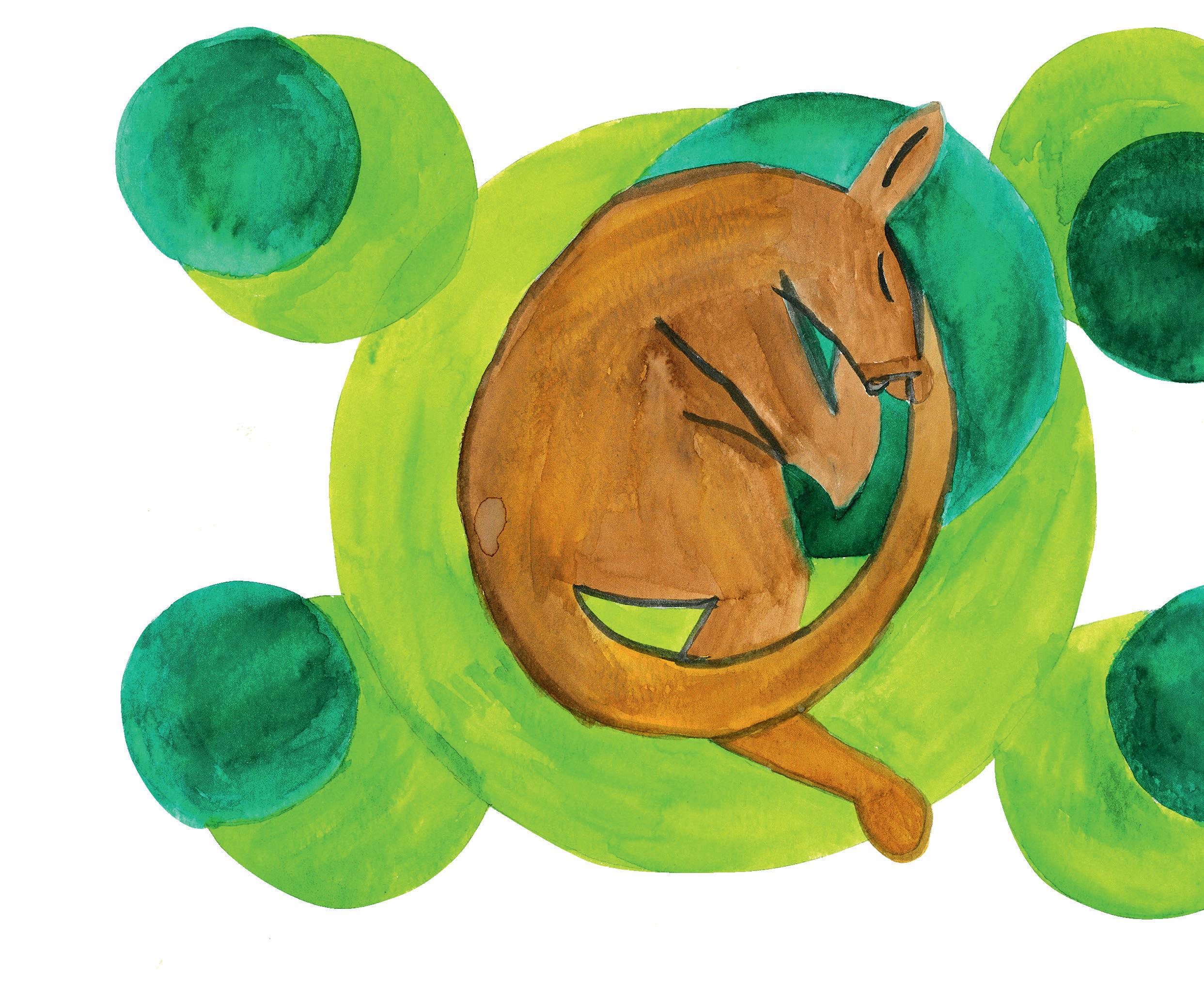

Muwayi Digawu
Bunuba
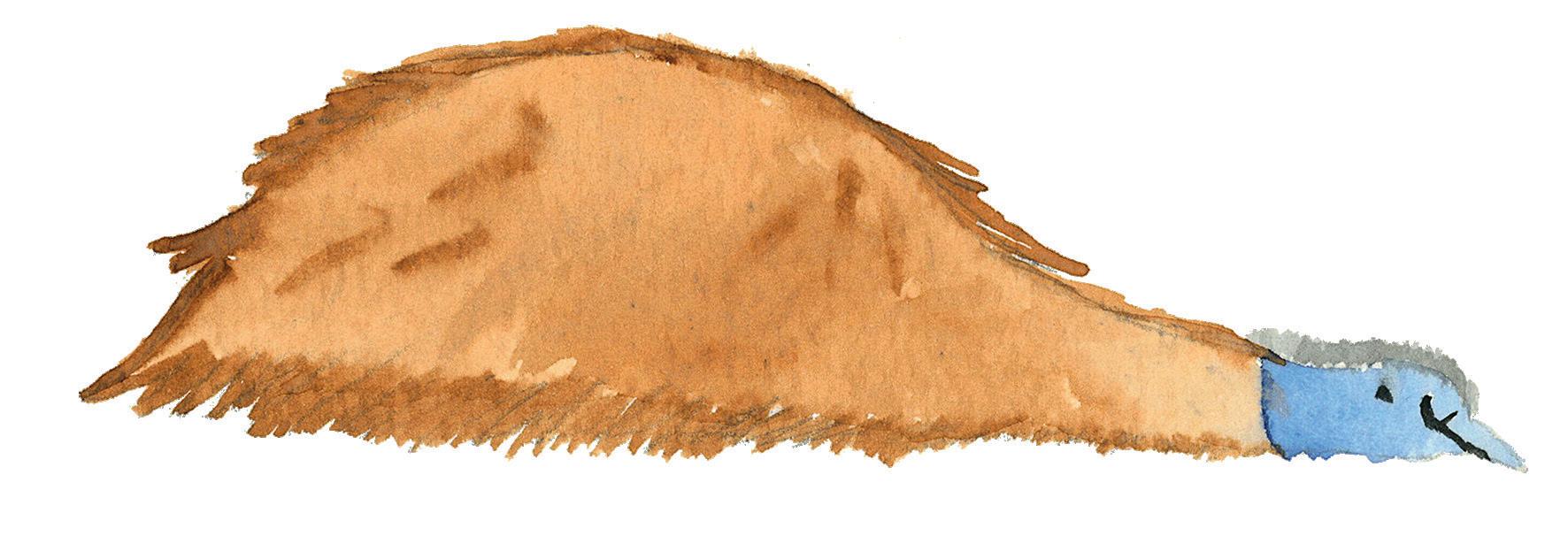

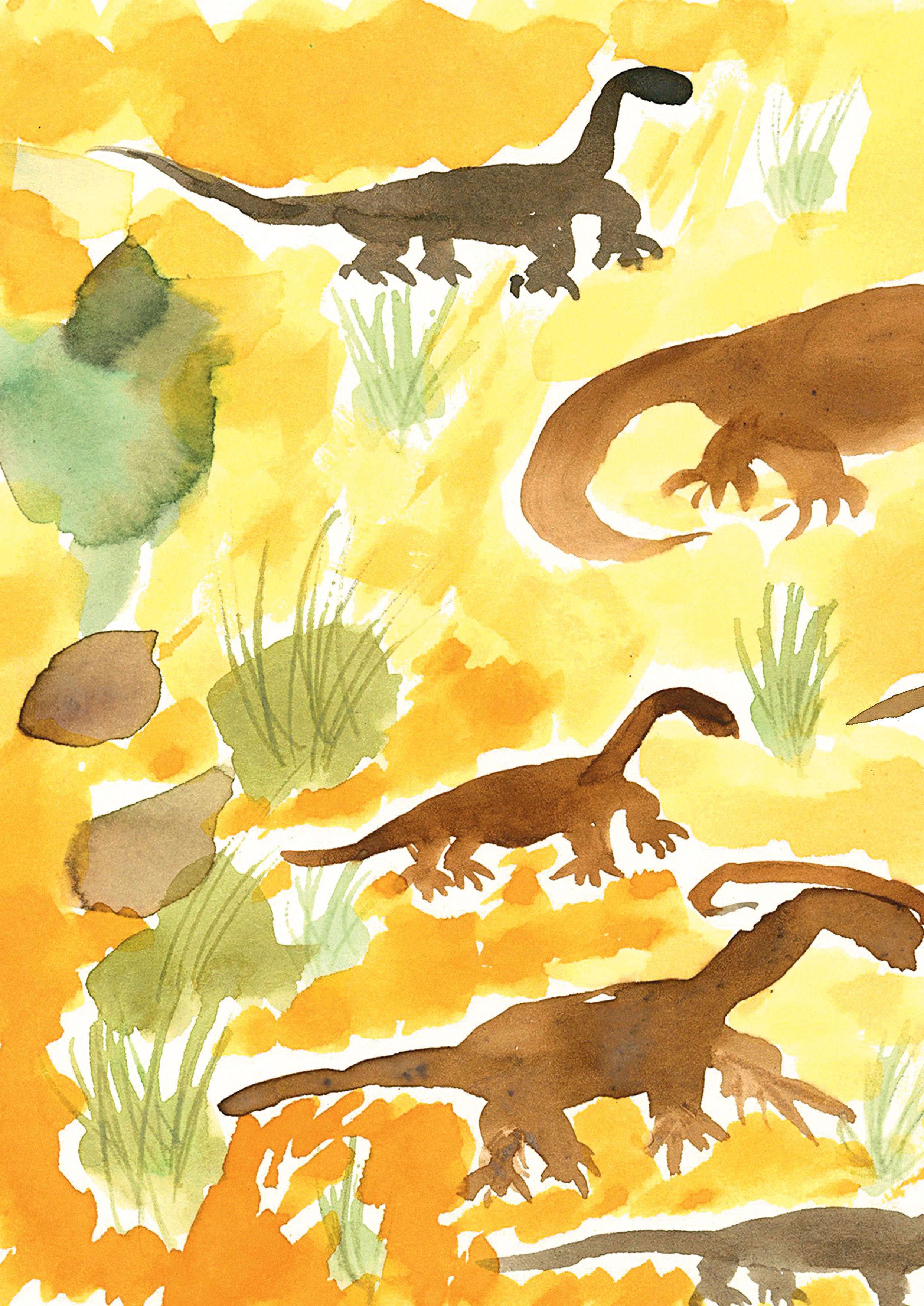
Kimberley Life

These songs are all about life as a Kimberley kid -—spending time on Country with family, going hunting and fishing, knowing the birds, and spotting bush tucker when it appears.
This song helps us learn all the different birds (jirigi-yani) that live on Bunuba Country, Bunuba-yuwa muwayi.
Giliny-giliny is the pink and grey galah, dirrari is the black cockatoo, laaba is the white cockatoo, and diya-diya is the mudlark. Noticing where the birds live, what they do and what sounds they make are an important part of living on Bunuba Country.
This song has lots of repetition, making it easier to learn. But watch out for the last line in each chorus – it changes each time.

[CHORUS]
Jirigi-yani Bunuba-yuwa muwayi
Jirigi-yani Bunuba-yuwa muwayi
Jirigi-yani Bunuba-yuwa muwayi
Jirigi-yani Bunuba-yuwa muwayi

Translation [Chorus]
Birds live in Bunuba Country

Birds live in Bunuba Country
Birds live in Bunuba Country
Birds live in Bunuba Country
Pink and grey galahs live in Bunuba Country [x4]
Birds live in Bunuba Country [x3]
Pink and grey galahs live in Bunuba Country
Black cockatoos live in Bunuba Country [x4]
Birds live in Bunuba Country [x3]
Black cockatoos live in Bunuba Country
White cockatoos live in Bunuba Country [x4]
Birds live in Bunuba Country [x3]
White cockatoos live in Bunuba Country
Mudlarks live in Bunuba Country [x4]
Birds live in Bunuba Country [x3]
Mudlarks live in Bunuba Country
Giliny-giliny-yani Bunuba-yuwa muwayi [x4]
Jirigi-yani Bunuba-yuwa muwayi [x3]
Giliny-giliny-yani Bunuba-yuwa muwayi
Dirrari-yani Bunuba-yuwa muwayi [x4]
Jirigi-yani Bunuba-yuwa muwayi [x3]
Dirrari-yani Bunuba-yuwa muwayi
Laaba-yani Bunuba-yuwa muwayi [x4]

Jirigi-yani Bunuba-yuwa muwayi [x3]
Laaba-yani Bunuba-yuwa muwayi
Diya-diya-yani Bunuba-yuwa muwayi [x4]
Jirigi-yani Bunuba-yuwa muwayi [x3]
Diya-diya-yani Bunuba-yuwa muwayi

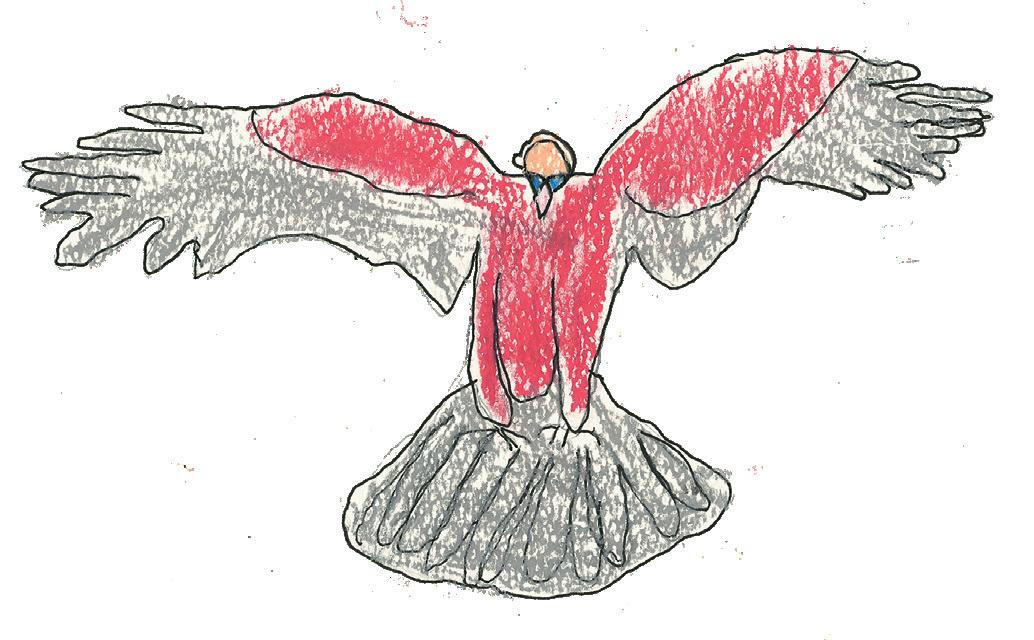
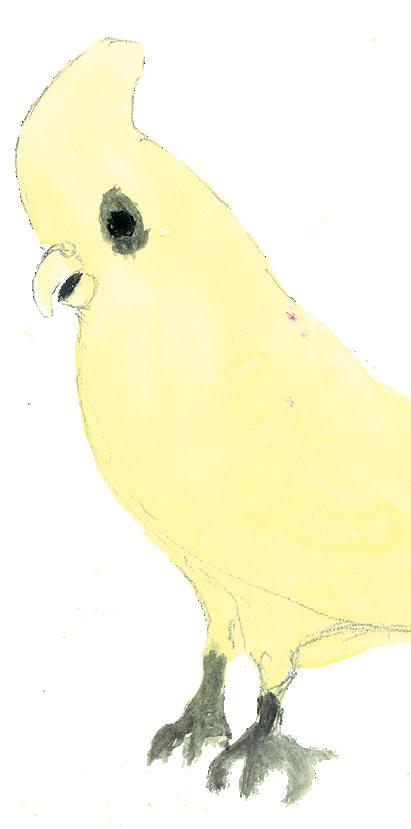

Jirigi-Yani Bunuba-Yuwa Muwayi
Susan Hoad and Patsy Bedford with Gillian Howell
Bunuba




This song accompanies June Nixon’s book Kurrartuwarnti . June says, “We see brolgas (kurrartuwarnti) all the time in Wet Season. They live in the plains and near billabongs and the river. We always see them in groups when we go fishing or hunting. When the sun goes down, they start poking around (yingkilanu) for food (miyi) and dancing (we say ‘yupyupparnu’ to mean the dance they do, when they bob up and down and flap their wings).
This song talks about when a dingo (marrany) tries to grab or steal (kulmanta) the brolgas and they frighten him away by flapping their wings (wirrpparnu). They
tell him, ‘Go away, we are not afraid of you’ (‘Wurna yanta, ngajirta parliparla rayinji’). Then it says, ‘They got very sad for him, and sent him back to his camp’ (‘Yawiyimarnu nyuntu marrany tikirr yanta, wurna yanta ngurrakarti’). This is just a little story that I wrote for the children.”
Translation
Brolgas
They are making their big nest In the long grass
They live together.
They are poking around for food near the eggs, They are poking around for food near the eggs.
The brolgas are dancing/bobbing their heads up and down
Dingo tried to steal them
The brolgas flap their wings
“Go away, go away
We are not afraid of you.”
“Go away, go away
We are not afraid of you.”
They got very sad for him
Dingo, go back
Go back to your camp
You go back.
“Go back, go back
We’re sorry for you.”
“Go back, go back
We’re sorry for you.”
Kurrartuwarnti palu
Pirtimanu nyantuwarnti puru
Puru juwal yukanga
Nyantuwarnti nguniny mapirri.

Nyantuwarntila
Kampinywarntila
Yingkilanu miyi, Nyantuwarntila
Kampinywarntila Yingkilanu miyi.
Kurrartuwarnti palu
Yupyupparnu
Marranyngu manya kulmantarla
Kurrartuwarnti wirrparnu
“Wurna yanta, wurna yanta
Ngajirta parliparla rayinji.”
“Wurna yanta, wurna yanta
Ngajirta parliparla rayinji.”
Yawiyimarnu nyuntu
Marrany tikirr yanta
Wurna yanta ngurrakarti Nyuntu tikirr yanta.
“Tikirr yanta, tikirr yanta
Yawiyimarnu nyuntu.”
“Tikirr yanta, tikirr yanta Yawiyimarnu nyuntu.”

Kurrartuwarnti Song
June Nixon and Gillian Howell
Copyright © 2023
Walmajarri


“This is a hunting song that includes the names of animals we are hunting around the desert and river area, and the environments where they are found.
Our theme at the school was about hunting, so I made up a song for this.”
Irene Bent
This song has three verses and a chorus, and this structure is repeated three times. Each time through, it tells the story of hunting a different animal. First: pinkirrjarti (bush turkey); then kakaji (goanna); and finally marlu (kangaroo)
Keep an ear out for the last line of each chorus — it changes depending on which animal is being hunted!
Translation
They went hunting
Looking for bush turkey
At the river
Standing in the plain
Lots of bush turkey
[Chorus 1] We’ll go hunting
We’ll go hunting
We’ll go hunting
For bush turkey, for bush turkey
Get the bush turkey
Take it back to camp/home
Give it to our families
[Chorus 1] We’ll go hunting [x3]
For bush turkey, for bush turkey
We’ll be happy [x3]
[Chorus 1] We’ll go hunting [x3]
For bush turkey, for bush turkey
They went hunting
Looking for goanna
In the sandhills
Living on the plain
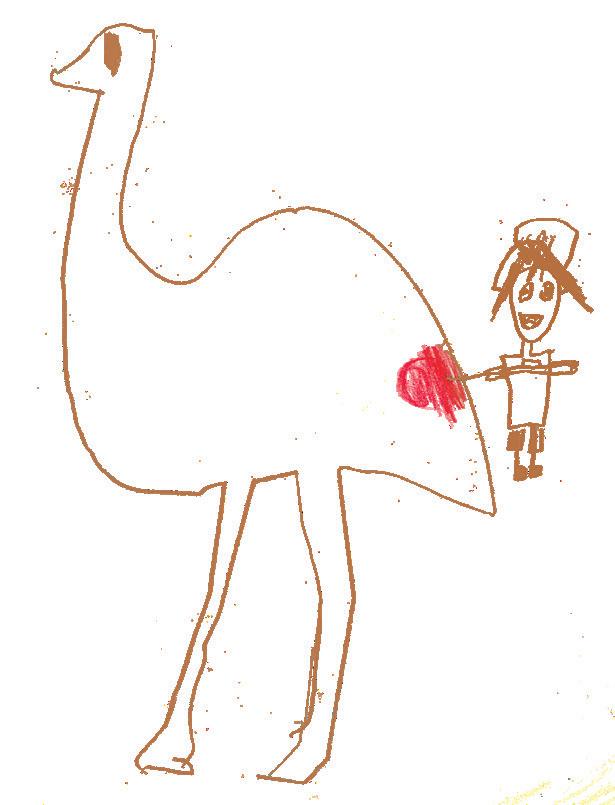
Lots of goannas
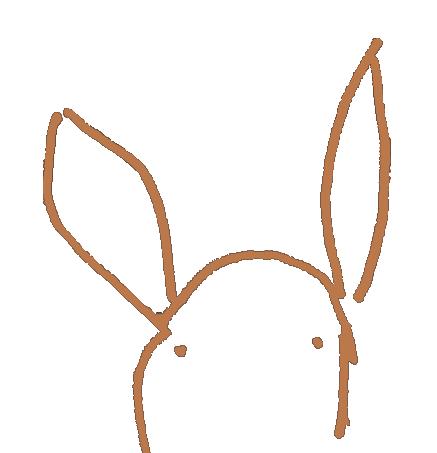

Ruwa parlipa yani
Pinkirrjartikarti
Martuwarrakarti
Karrinyana palu pirntirrirla
Pinkirrjarti warnti
[Chorus 1] Ruwa parlipa yanku
Ruwa parlipa yanku
Ruwa parlipa yanku
Pinkirrjartikartipurru, pinkirrjartikartipurru
Pinkirrjarti parlipa wantawu
Tikirr kangku parlipa ngurrakarti
Yungku parlipa jarntuwarnti
[Chorus 1] Ruwa parlipa yanku [x3]
Pinkirrjartikartipurru, pinkirrjartikartipurru
Wirriya parlipa ngunawu [x3]
[Chorus 1] Ruwa parlipa yanku [x3]
Pinkirrjartikartipurru, pinkirrjartikartipurru
Ruwa parlipa yani
Kakajikarti
Jiljikarti
Nguniny palu pirntirrirla
Kakajiwarnti
[Chorus 2] Ruwa parlipa yanku [x3]
Kakajikartipurru, kakajikartipurru
Kakaji parlipa wantawu
Tikirr kangku parlipa ngurrakarti
Yungku parlipa jarntuwarnti
[Chorus 2] Ruwa parlipa yanku [x3]
Kakajikartipurru, kakajikartipurru
Wirriya parlipa ngunawu [x3]
[Chorus 2] Ruwa parlipa yanku [x3]
Kakajikartipurru, kakajikartipurru
Ruwa Parlipa Yani
Ruwa Parlipa Yani
Irene Bent and Gillian Howell
Additional verses: Marmingee Hand
Walmajarri
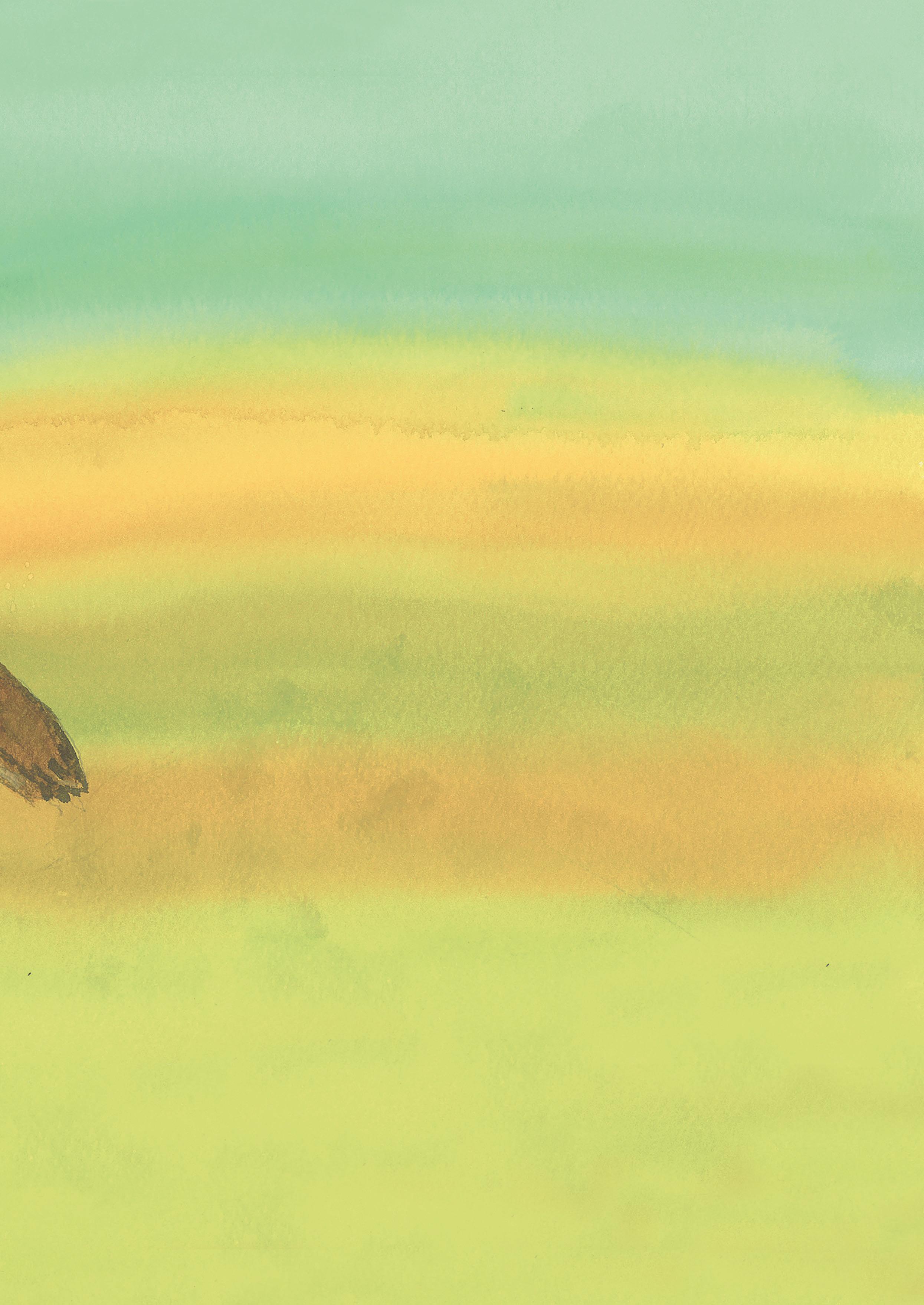
)
kirr) ja) rti) ka) rti) puC 2 ) ) ! rru. ( ⁄ C Verse 21 ) 2. Pin) kirr) ja) rti ) pa) rli) pa ) wan2 ) ) ! tawu,
rru,
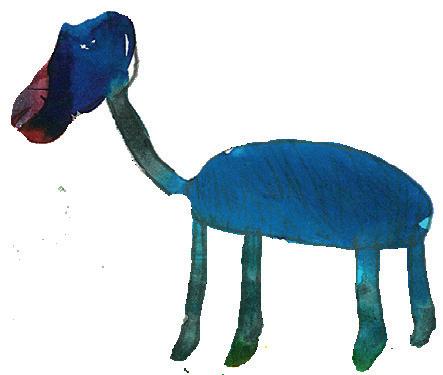
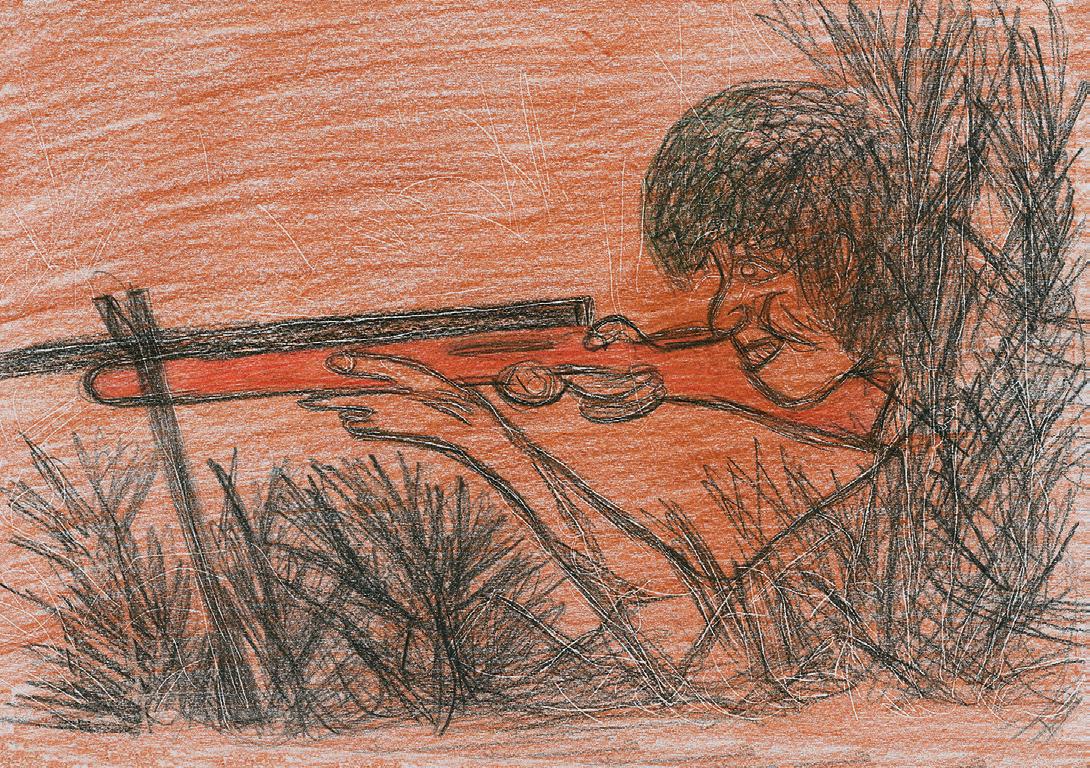
[Chorus 2] We’ll go hunting [x3]
For goanna, for goanna
Get the goanna
Take it back to camp/home
Give it to our families
We’ll go hunting [x3]
For goanna, for goanna
We’ll be happy [x3]
[Chorus 2] We’ll go hunting [x3]
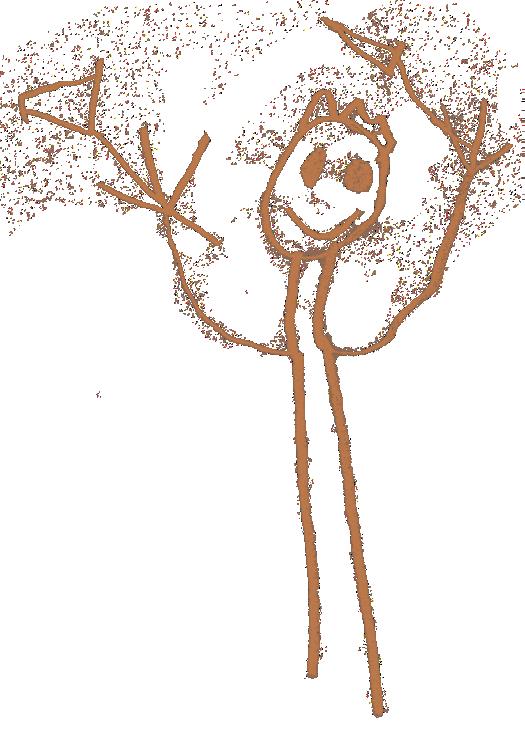
For goanna, for goanna
They went hunting
Looking for kangaroos
In the soak water
Living on the plain Lots of kangaroos
[Chorus 3] We’ll go hunting [x3]
For kangaroos, for kangaroos
Get the kangaroo
Take it back to camp/home
Give it to our families
[Chorus 3] We’ll go hunting [x3]
For kangaroos, for kangaroos
We’ll be happy [x3]
[Chorus 3 + Coda] We’ll go hunting [x3]
For kangaroos, for kangaroos
For goanna
For bush turkey
Ruwa parlipa yani
Marlukarti
Jumukarti
Nguniny palu pirntirrirla
Marluwarnti
[Chorus 3] Ruwa parlipa yanku [x3] Marlukartipurru, marlukartipurru
Marlu parlipa wantawu
Tikirr kangku parlipa ngurrakarti
Yungku parlipa jarntuwarnti
[Chorus 3] Ruwa parlipa yanku [x3]
Marlukartipurru, marlukartipurru
Wirriya parlipa ngunawu [x3]
[Chorus 3 + Coda] Ruwa parlipa yanku [x3]
Marlukartipurru, marlukartipurru
Kakajikartipurru
Pinkirrjartikartipurru
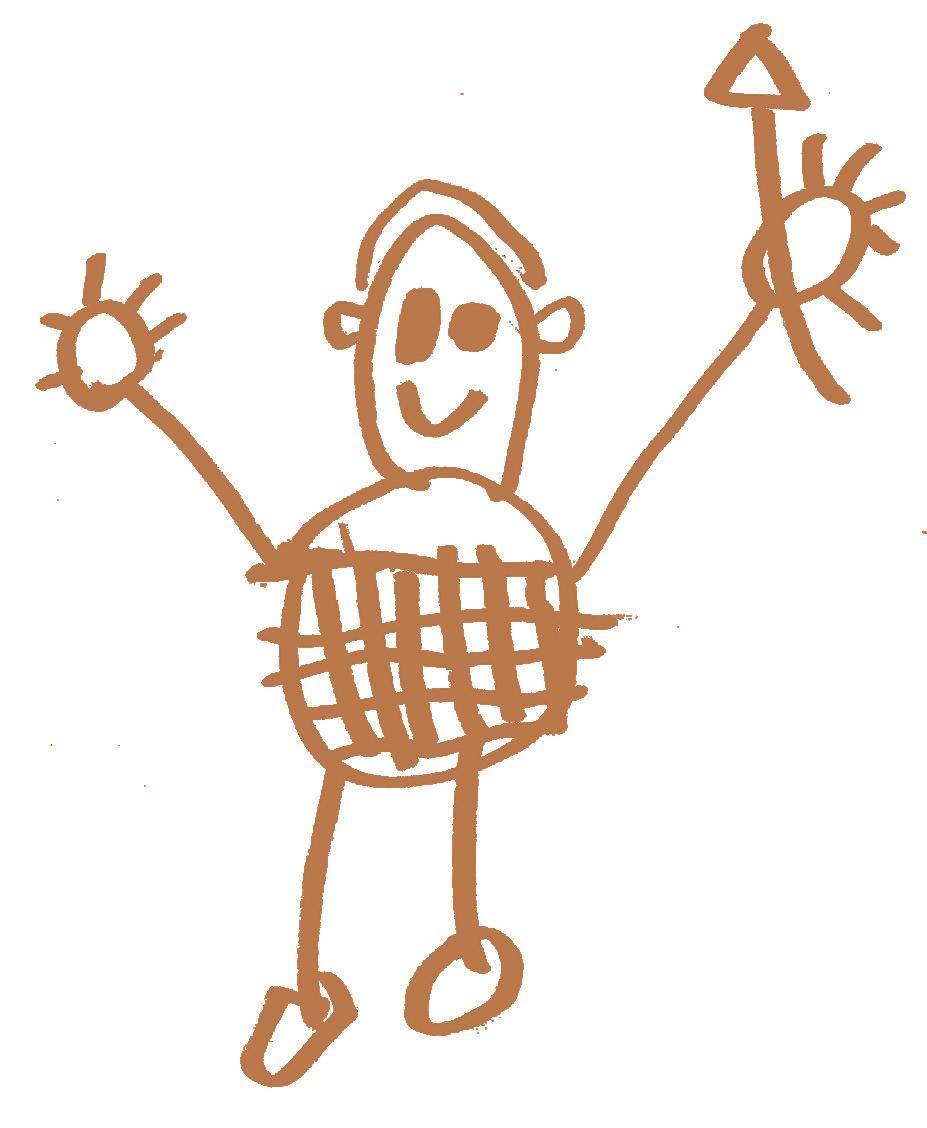
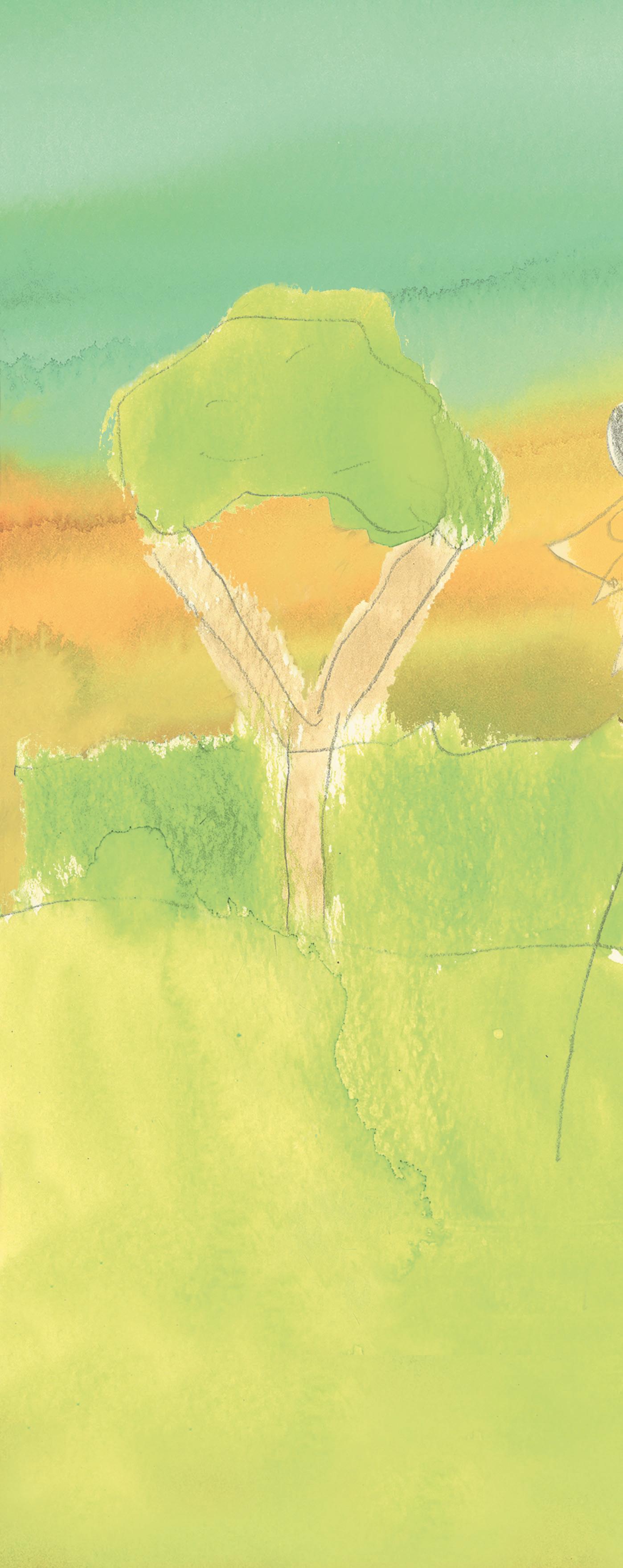
Verse 37 ) 3. WiC ) rri) ya ) pa) rli) pa ) ngu -
Chorus 1
Ruwa Parlipa Yani: page 2 2 ) ) ! nawu, (
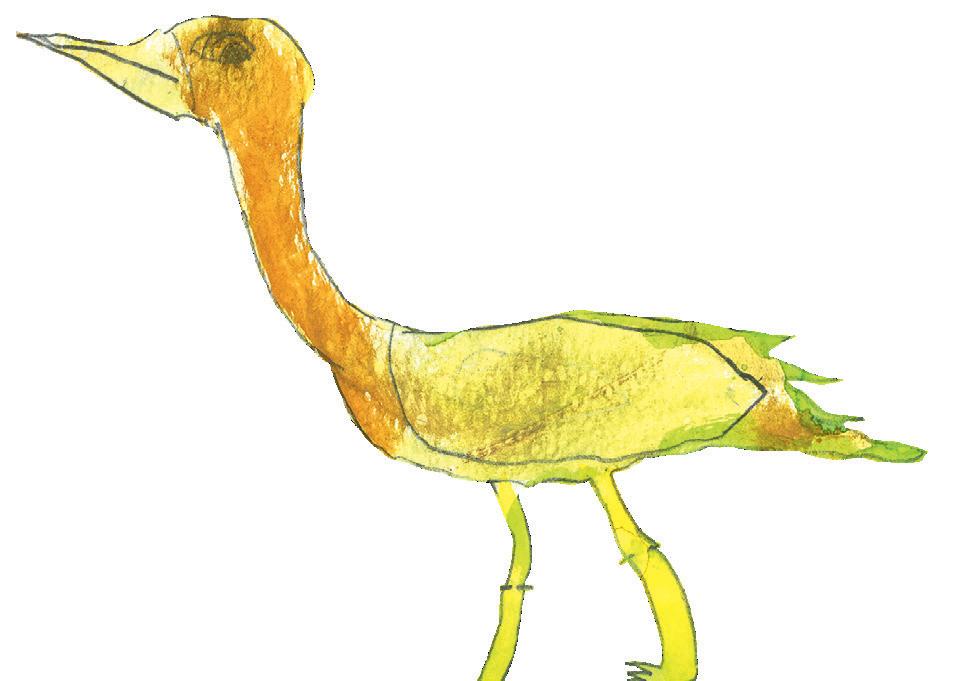

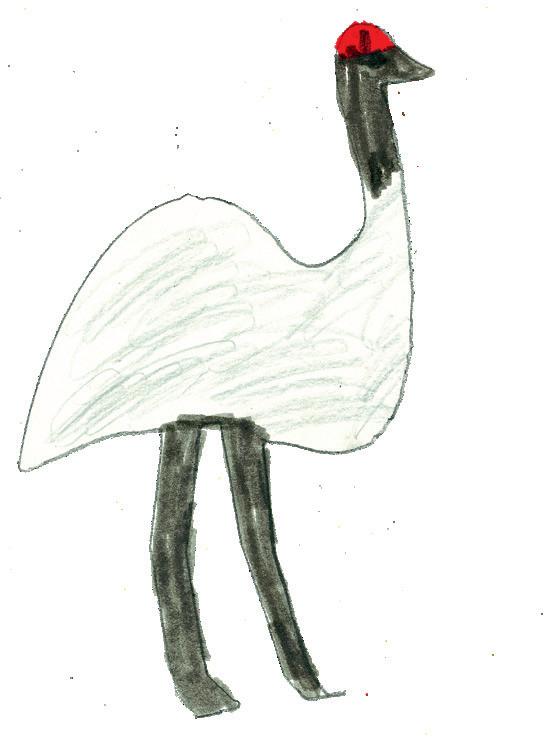

Bullen (David Rogers) wrote Wirli Wirli (a fishing song) for his mother, Wipi (Nancy Rogers), who loved fishing more than anything else. “My mother used to drag us to the river every chance she got. She would have used her fishing lines as a pillow so she could dream fish… My mother was a great fisherwoman and would always bring fish back to eat. She was a Danggu girl (Danggu is the waterhole our clan is named after, and the name of the national park also known as Geikie Gorge).” David Bullen Rogers
Translation
Get your fishing line ready
In the big billy can, for fishing by the river
Dad will go in front
And he’ll get the bait fish with the nets.
The women come behind
And throw their fishing lines out.
They got fish, they got ‘em
And they put ‘em in the fire.
They cooked them and they ate
Down at the river
Down at the river.
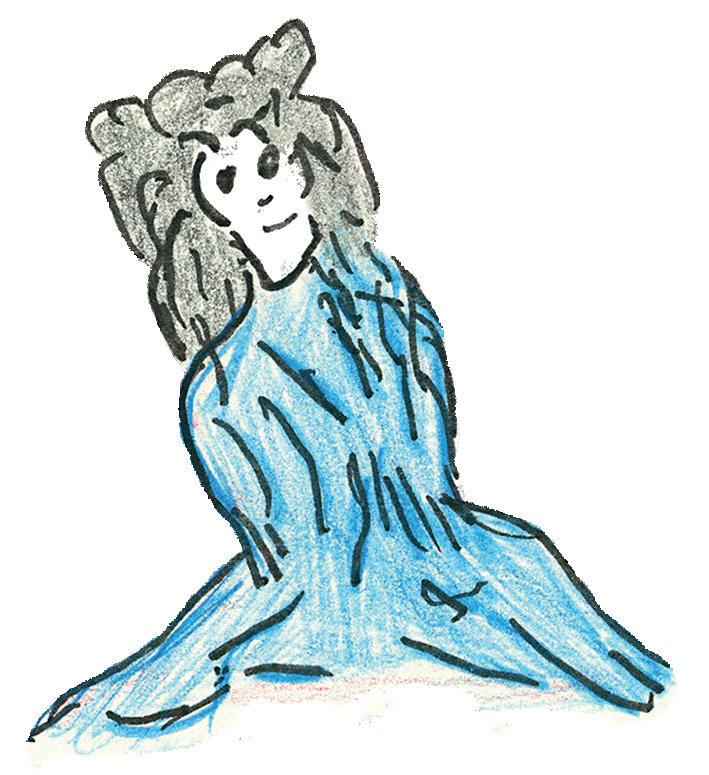
Wirli Wirli palu yutukarni
A billy-can la ruwa martuwarraku
Kajarlu purrunga warntani
Lakarrwarnti rumpurrajarti.
Watagurni marnin palu pirriyarni
Tarra pinya palu wirli wirli.
Warntani kapi palu warntani
Warlunga palu yutu karni.
Pukarr warnti kapi palu Ngarni pukarr
Kaniny Martuwarrarla
Kaniny Martuwarrarla.


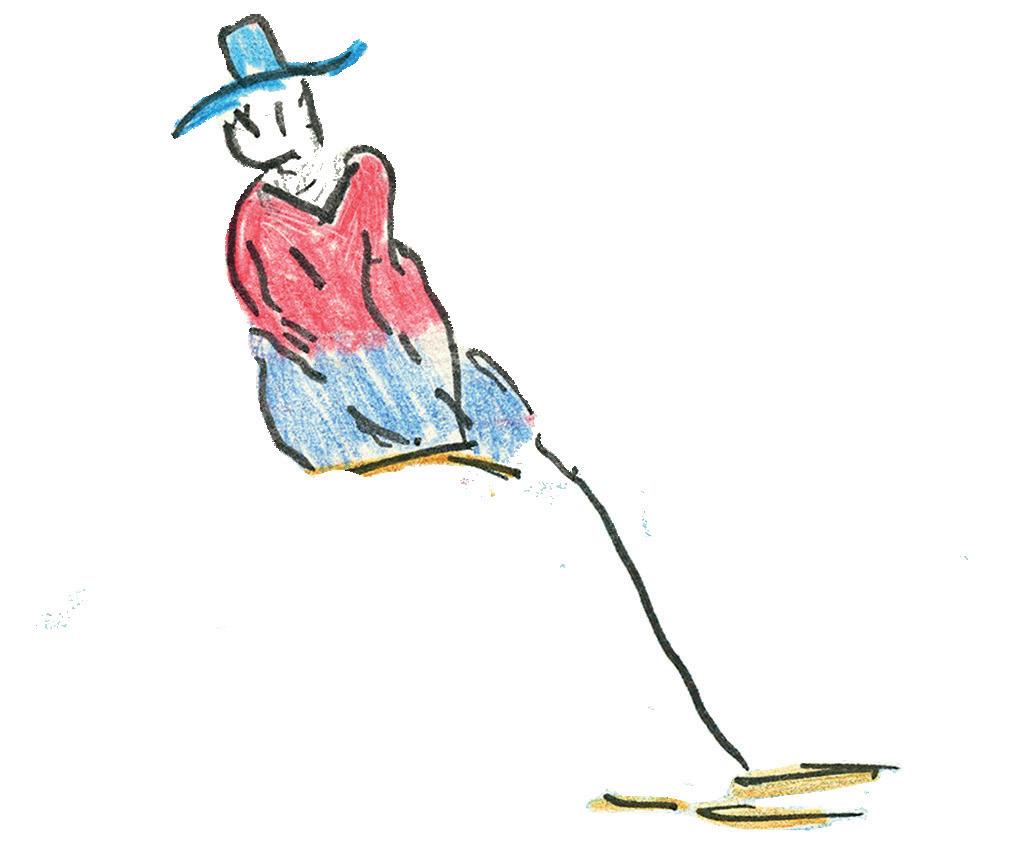



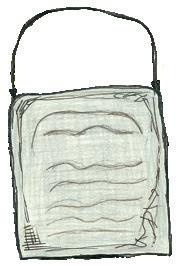

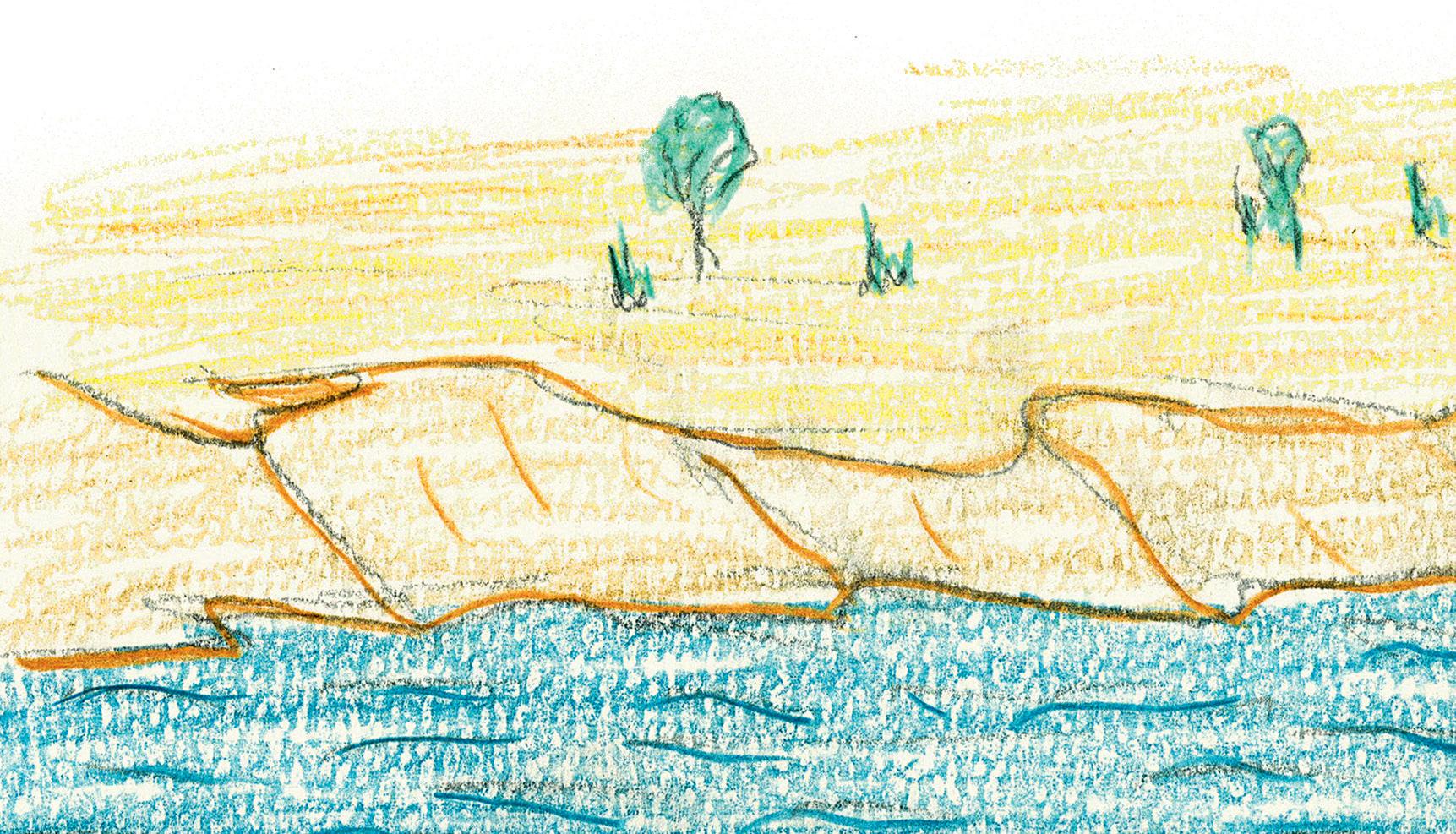
Wirli Wirli
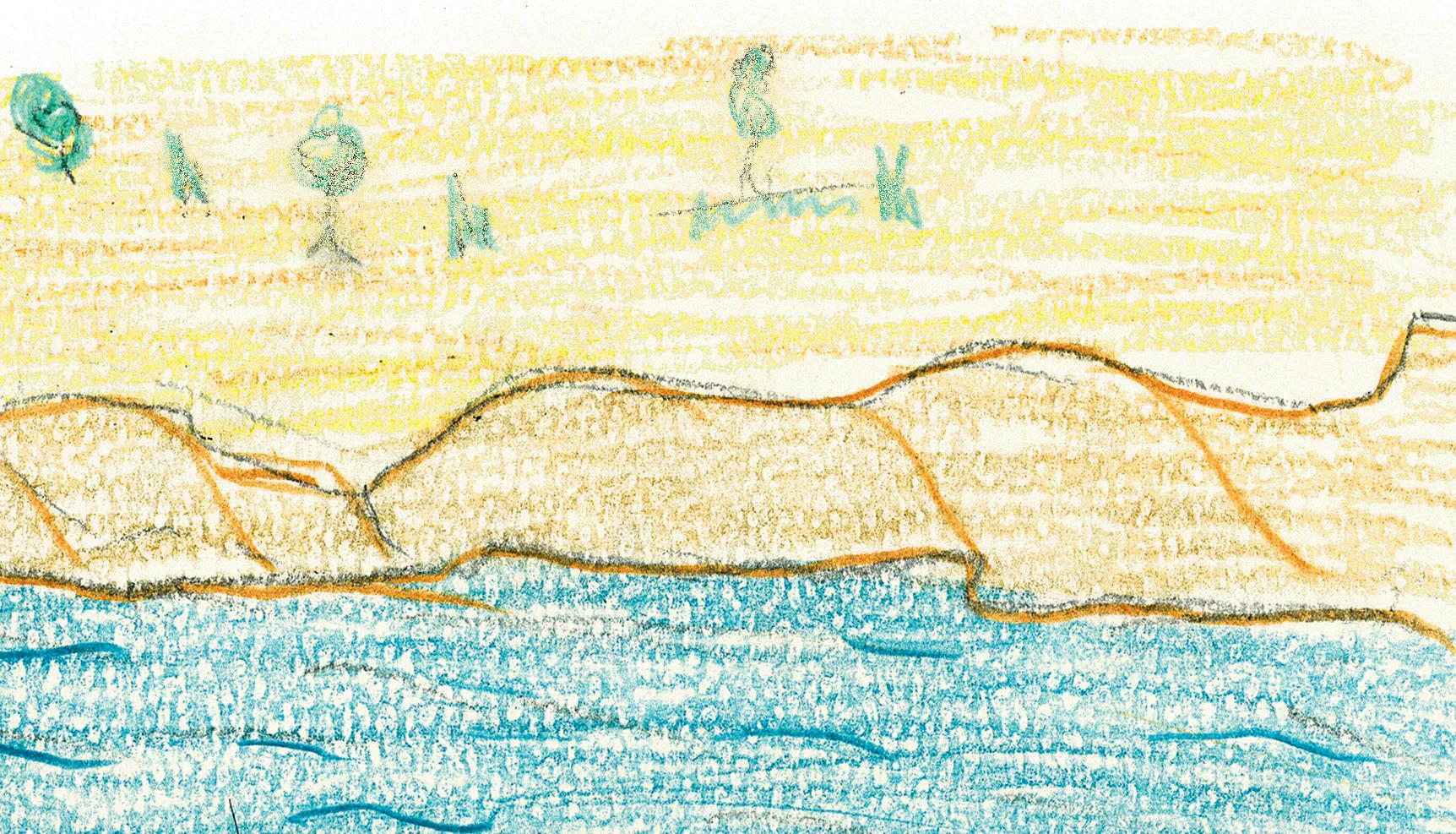
“This song is about finding a blackheaded python (yilimi) when we were out one day and killing it, because it was the right season for good, fat, tasty yilimi. We wrote it in August and September 2022 as a family – with my mum, Anna, and my sisters, Roberta and Sarah. My granddaughters sing on the recording. My niece, Brenda Shaw, helped us with the Gooniyandi words. The word ‘joornanygarra’ has two different meanings in this song. It means ‘happy’ and it also means ‘good, fat and delicious’.” Patricia Cox

Translation
Black-headed python went slowly
Down to the river.
Black-headed python went slowly
Down to the river.
One happy/fat black-headed python
One happy/fat black-headed python
One happy/fat black-headed python
Down to the river.
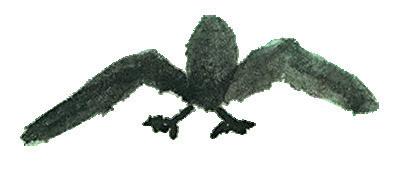
Yilimi thithi janggoo wardgiri
Barboorroonggoo warlibirriya.
Yilimi thithi janggoo wardgiri
Barboorroonggoo warlibirriya.
Yoowarni joornanygarra yilimi
Yoowarni joornanygarra yilimi
Yoowarni joornanygarra yilimi
Barboorroonggoo warlibirriya.
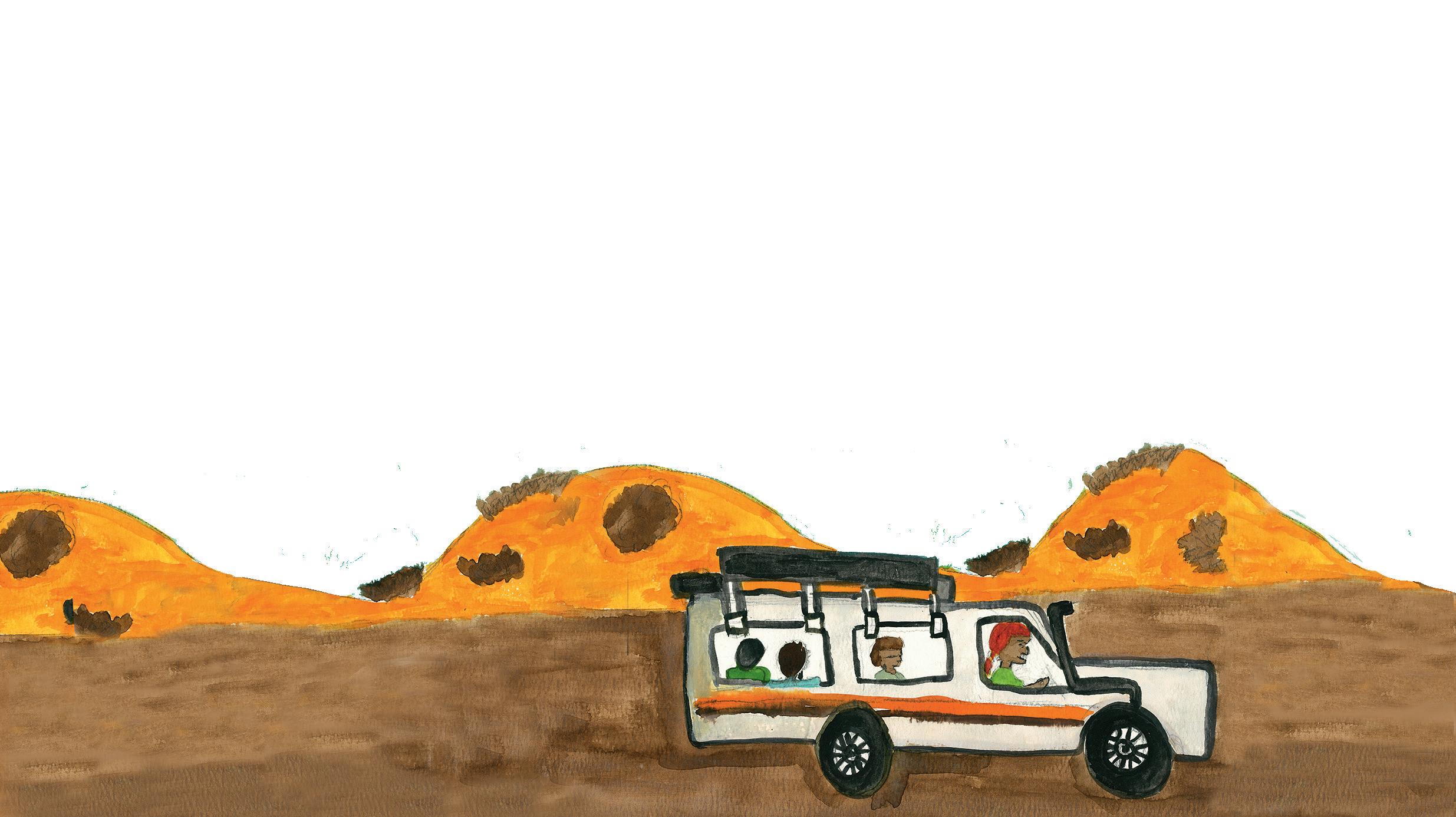
Song (Gooniyandi)
Patricia Cox, mum Anna, sister Roberta, sister Sarah,
Brenda Shaw and Gillian Howell
Yilimi
Gooniyandi
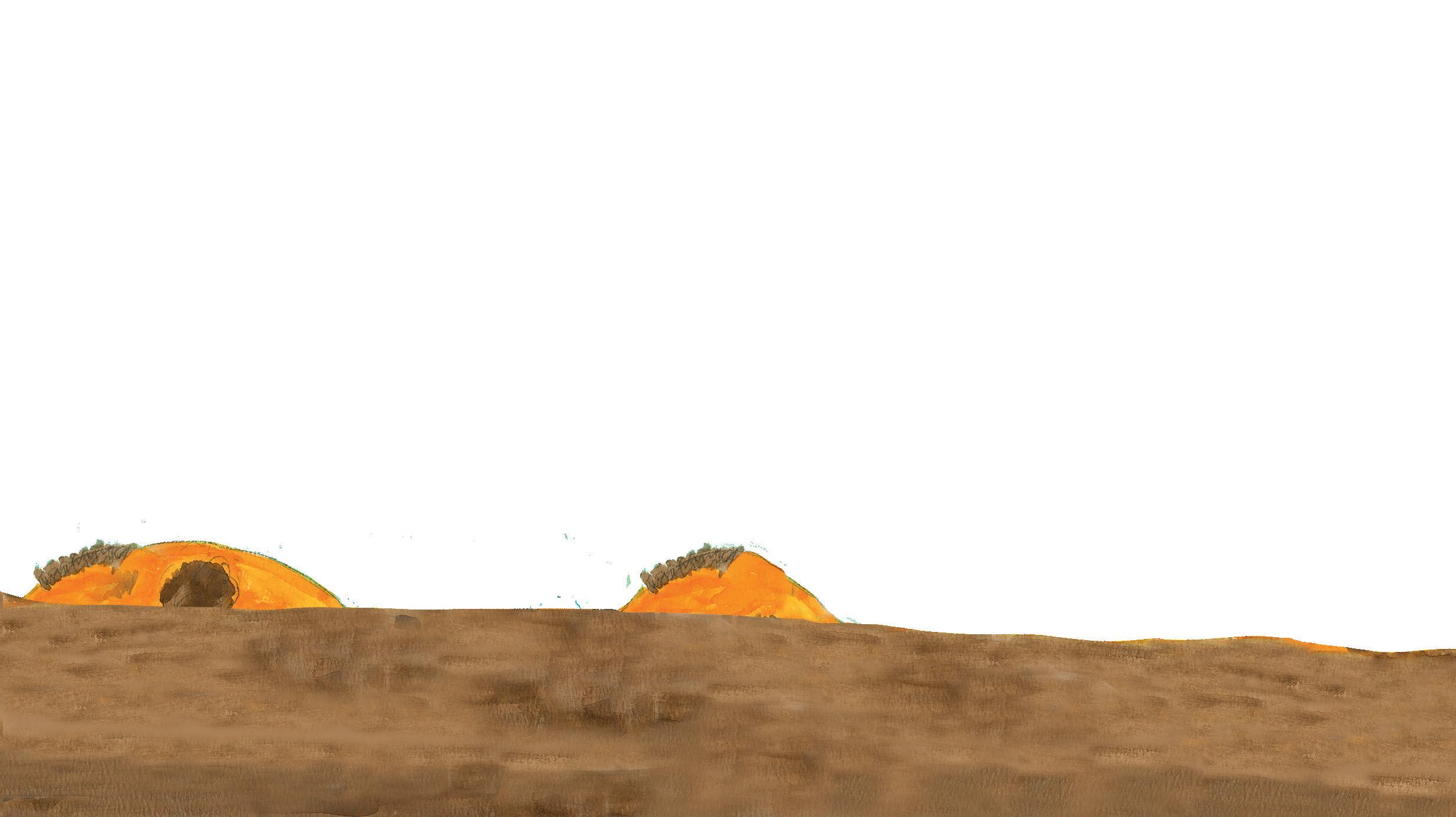
Women in a troopy
Saw that black-headed python.
One woman hit him on the head
Because that black-headed python was good and fat.
Poor dead black-headed python
Poor dead black-headed python
Poor dead black-headed python
It’s a good time (i.e. right season)
to be eating black-headed python!
Goornbooyarndi yamadiya
Milayirra yilimi.
Goornbooga gardnga mirraya
Yilimi min.ga ngarri
Boogalangi ngawoorngga yilimi
Boogalangi ngawoorngga yilimi
Boogalangi ngawoorngga yilimi
Joornanygarra ngabgoo yilimi! [BANG!]

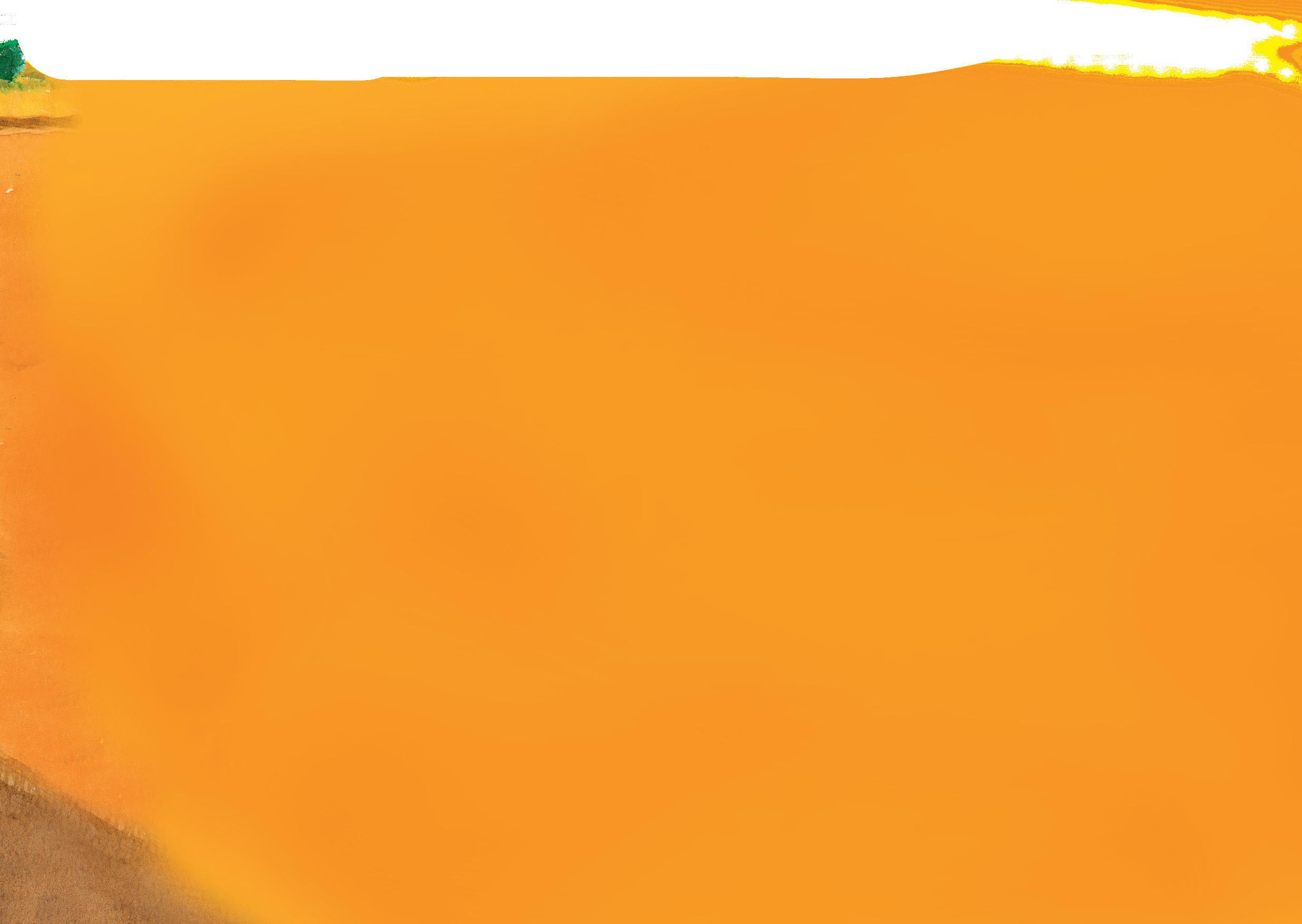


Stories from the Past
The songs in this section were written to teach children about the local history and to celebrate the knowledge, courage, and ingenuity of their ancestors.

Bullen (David Rogers) wrote this song for his father, Lanyi (Alec Rogers), who walked out of the Great Sandy Desert into Fitzroy Crossing township in the late 1930s. Lanyi walked with three dingos that helped him with hunting. He had never met white people or seen a river before he walked in from the desert. Lanyi’s old people taught him all the skills he needed to survive living in the desert and for his journey into town.

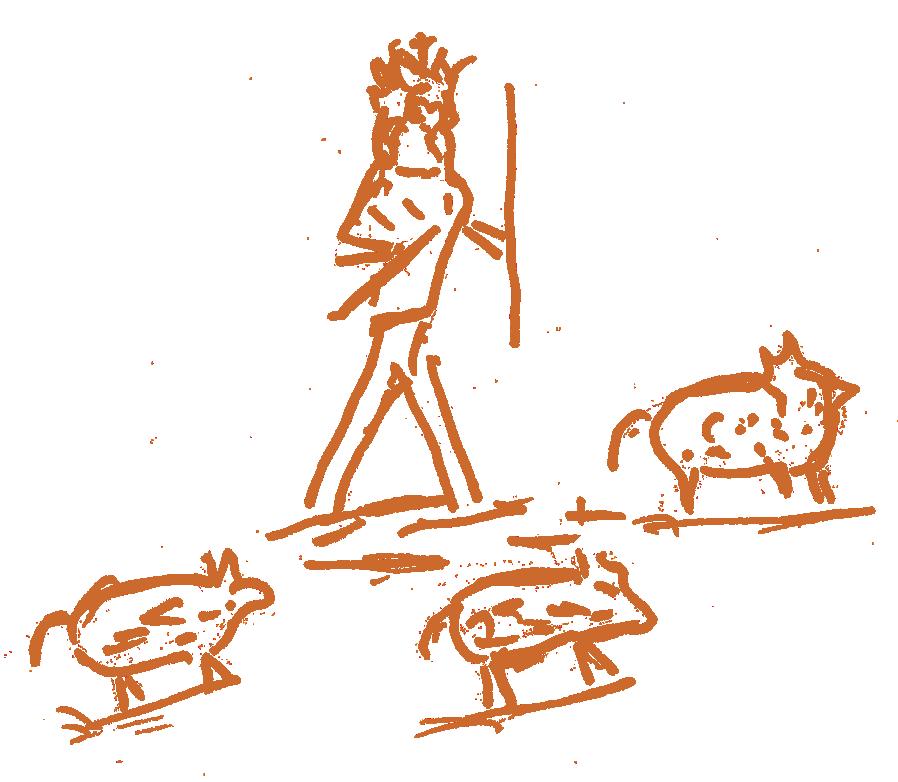
My father walked the desert land He had no shoes at all He climbed and climbed the sandhills Way bigger than a house
[CHORUS]

They taught him well That desert man They taught him well To live out there
He had to hunt and dig for food To live another day They tracked and tracked The animals to find their water supply
[CHORUS]
Boomerangs and spears
He had a good supply He never needed anything To live his way of life
[CHORUS]

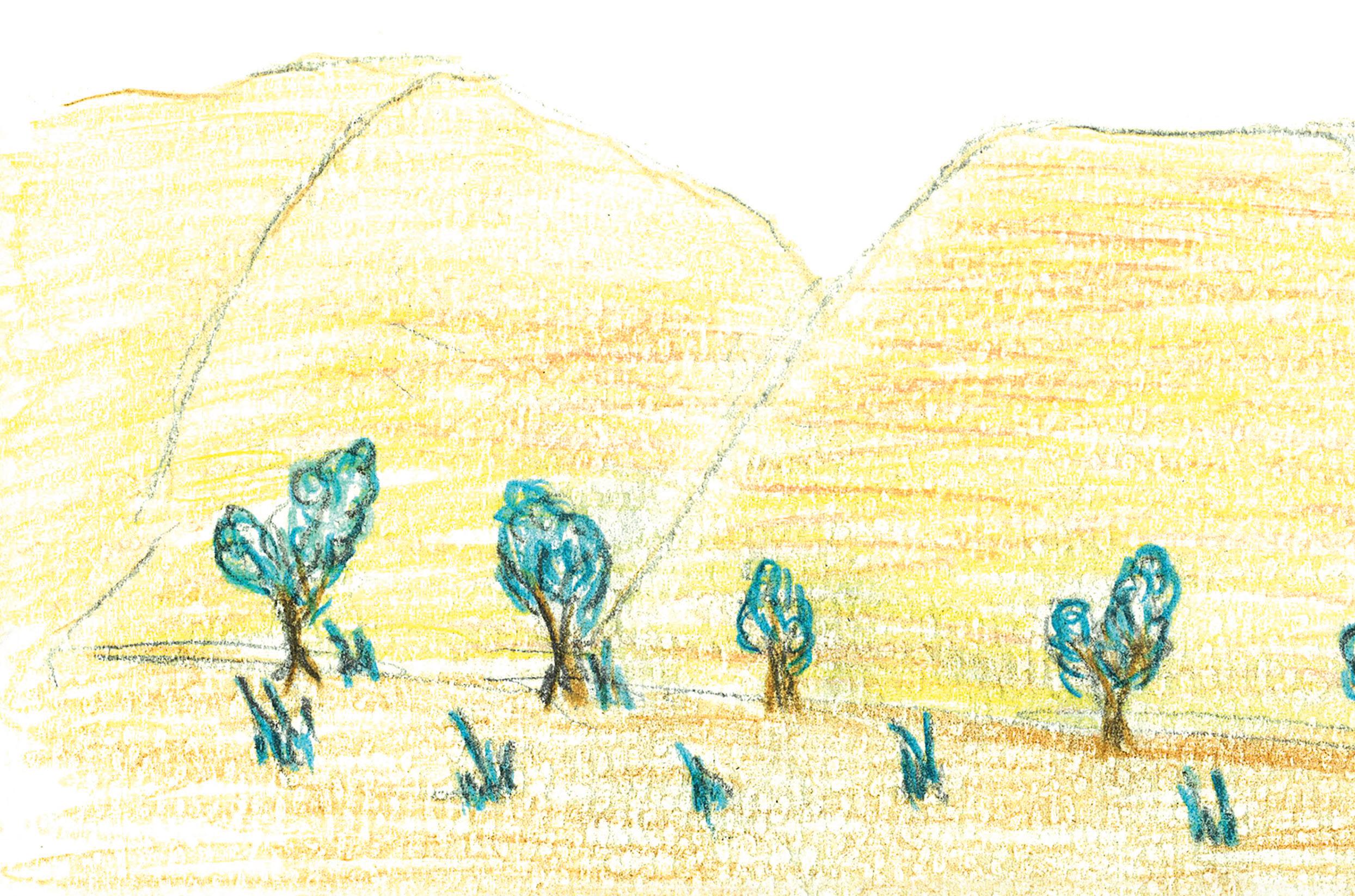



Jandamarra is an important person in Bunuba history. He was born on Lennard River Station in the late 1800s during a time of frontier violence. He was a skilled horseman and worked as a tracker for the police as a young man. One time he was ordered to track and capture a group of Bunuba men, including his uncle Ellemarra. Held captive in a police cell, Ellemarra told Jandamarra to fight for his people and help defend their lands. That night, Jandamarra chose to return to Bunuba. He killed his police sergeant, freed the prisoners, and began leading an armed resistance against the pastoralists and police. His success at evading capture led people to believe he had magical powers and could disappear, reappear, and fly like a bird. He was killed at Tunnel Creek in 1897.
Bunuba country is in the central-western Kimberley in the far north of the state of Western Australia. It stretches from Fitzroy Crossing along the Martuwarra Fitzroy River to Jijidu (Dimond Gorge) and Wunaamin Miliwundi Ranges (formerly King Leopold Ranges) to Napier Range in the west, and from Malarabah (Erskine Range) to Dawadiya (Trig Hill) near Fitzroy Crossing on its southern boundary. It includes Bandilngan (Windjana Gorge) and Tunnel Creek national parks, and Danggu (Geike Gorge).
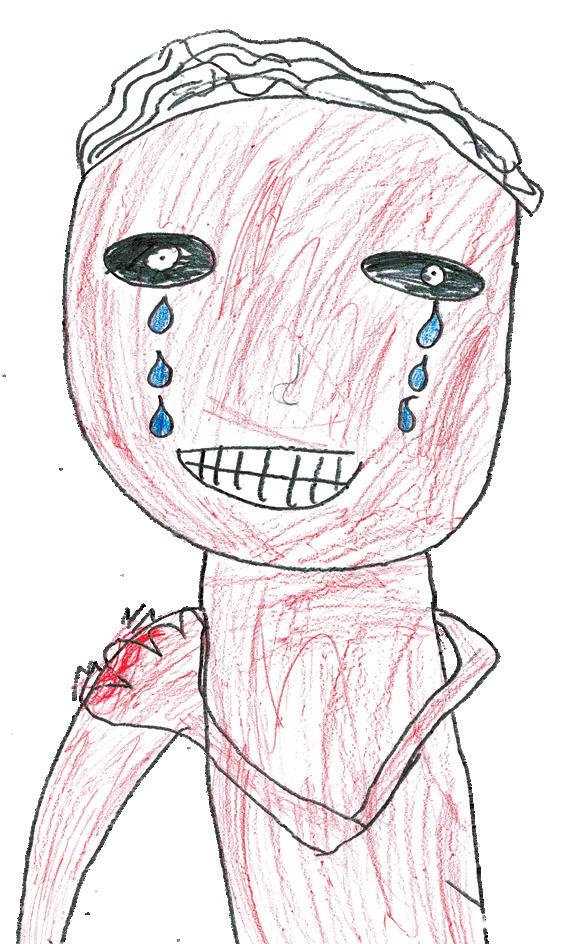

[CHORUS]
Jandamarra, Bunuba warrior, hero of the Kimberley He fought for the rights of the Bunuba people, leading them to victory.
He learned to shoot from a galloping horse, Boss Lukin called him Pigeon. But the station’s fences stopped his people hunting, fishing, living.
[CHORUS]
He charmed police with his cheeky grin and helped them catch his uncle.
But Ellemarra fixed his eye on him: “Remember who you are.”
[CHORUS]
Pigeon planned a mighty ambush at Windjana Gorge. His flesh came off with a ricochet and into the cave he crawled away.
[CHORUS]
He came out of the cave with his bullet wounds healed, as a man of magic power. He could fly like a bird and disappear like a shadow or a ghost, and he had no fear.
[CHORUS]
That maparn man from the Pilbara helped the police to track him. He was crying as he took aim.
Jandamarra died in his own creation place.
[CHORUS]
Right throughout the warrior’s life women were always there. Mother, sisters, daughters, wives, helping him fight so the country could be theirs, again.
[CHORUS]
Jandamarra
English
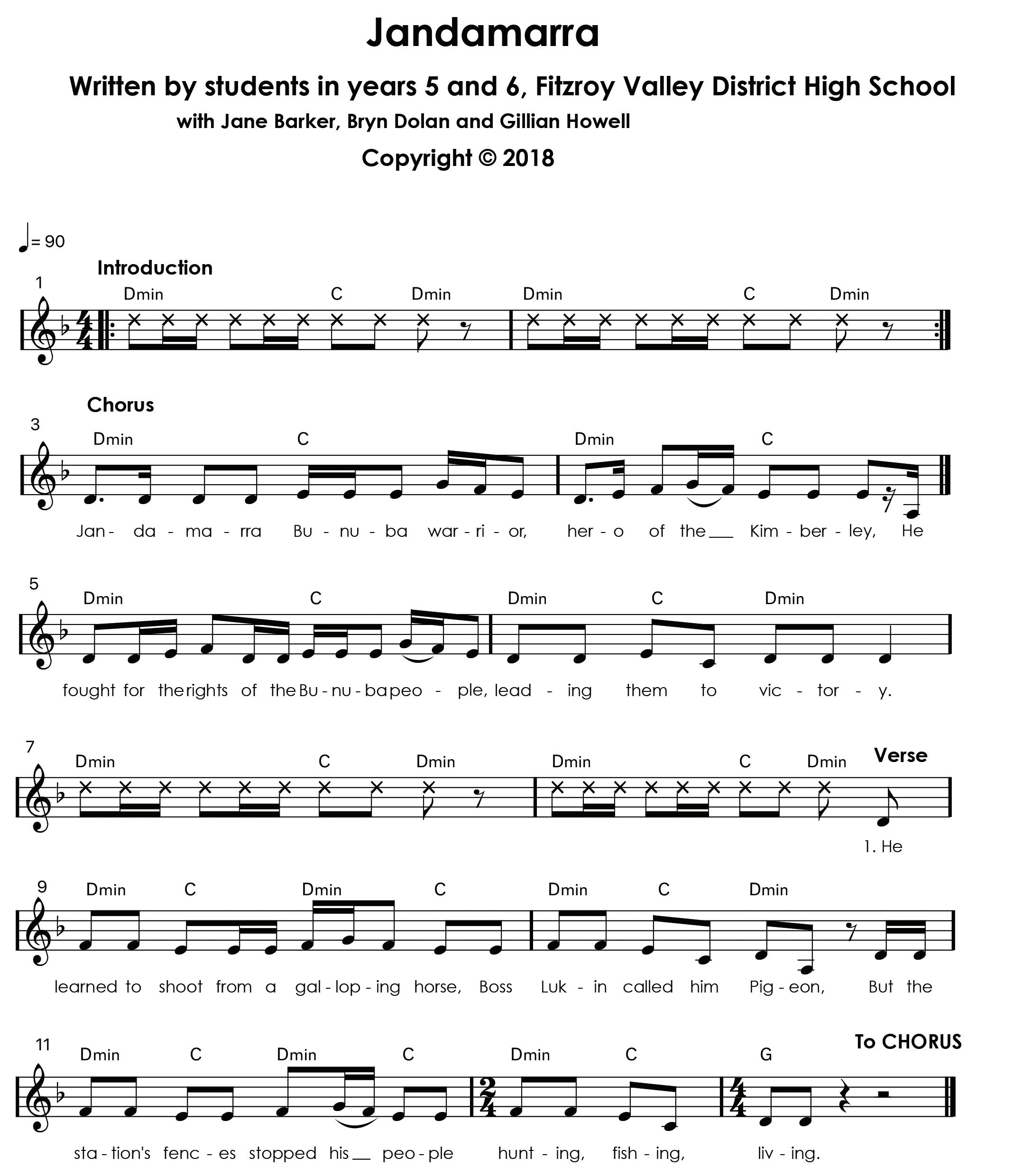
Translation
‘Maparn’ means healer in Walmajarri. A maparn is a medicine man or woman, with magical knowledge and powers to heal or harm. The Bunuba word for a person with this knowledge is Jalngangurru. Many people believed Jandamarra to be a Jalngangurru, and therefore it required another person with similar knowledge (Micki, an Aboriginal tracker from the Pilbara) to track and catch him.



In this song, Irene is singing about her parents and other jarntuwarnti (family) coming out from the desert, about fifty years ago. “I teach language so the kids can know where their parents and grannies and great-great grannies are from. Most of the kids I was teaching were part of Ngurrara (desert people) too. Their families came from there. From their homeland Ngurrara Country in the Great Sandy Desert.” Irene Bent

Oh, Ngurrara People Coming out of the desert. Ngajukura jarntuwarnti Passing by jilas and jumus. [Hey!] Jina palu yanani Kayili onto the station No matter what Always keeping the old ways.
[CHORUS]
They never knew they’d be gone so long But they never forgot the way back home They knew the track To take them back To their Ngurrara Country. Homeland Ngurrara Country.
(English and Walmajarri)
Ngurrara People
and English

Translation
Ngurrara = home, where you belong
Ngajakura jarntuwarnti = our family
Jilas = waterholes
Jumu = soak water (a source of fresh water in the Australian desert that soaks through the top layer of sand and is stored below, dug out with a coolamon)
Jina palu yanani = they are walking
Kayili = north
Paja nyangu palu yani Martuwarra
Kartirla = many went to the river area
Kanarlany warnti palu yani = other people, other family members were walking
Kayili, kakarra, kurlirra, karla = north, east, south, west
Layi wangki palu marnani = they were all speaking one language
Purku, parnany = grandfather, older man grandmother, older woman
Oh, Ngurrara People
Split up in the desert
Paja nyangu palu yani, Martuwarra kartirla
Kanarlany warnti
Palu yani
Kayili, kakarra, kurlirra, karla
Layi wangki palu marnani.
[CHORUS]
They never knew they’d be gone so long But they never forgot the way back home They knew the track To take them back To their Ngurrara Country. Homeland Ngurrara Country.
Oh, Ngurrara People
Came back to the desert They wanted their children To know the land where they came from. Now the door has been opened And the families are growing. Purku, parnany, tellin’ the stories To the next generation.
[CHORUS]

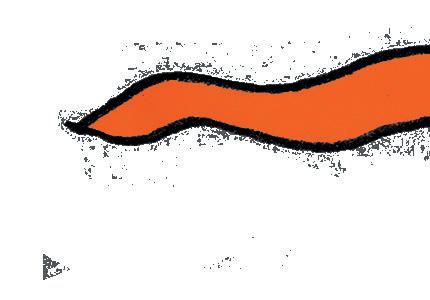

“This song is about pujurl, the desert sand frog. Our grandmothers used to go out and look for the purrij (the rippled marking of disturbed sand where the pujurl has burrowed) and pick a place where they can sit and dig with the makura (hard metal coolamon), going right down. Then you cook ‘em in shallow hot sand and rub that oil on your skin like a lotion. People who are grieving eat pujurl because they are white meat.
I remember all that from when I was little, 9 years old. I used to go out with my grandfather and two grandmothers.”
Eva Nargoodah
[Note: Italics indicate echoes.]

Translation [Chorus]
The frog lives deep down in the sand hills
The frog lives deep down in the sand hills
Look out for the ripples
They (the frogs) will be close by. Look out for the ripples
They (the frogs) will be close by.
[Chorus]
Use the makura to dig the sand
Scoop it out with the makura.
[Chorus]
We are sitting deep in the hole
Deep, deep in the sand
Scooping from the sides of the hole, heaping up frogs!
[CHORUS]
Pujurl nguniny marri kaniny
jiljinga nguwanga [rhythm: x-x-x]
Pujurl nguniny marri kaniny
jiljinga nguwanga [rhythm: x-x-x]
Nyakala purrijku, nyakala purrijku
Marnpa marnpa palu nguniny
Nyakala purrijku, nyakala purrijku
Marnpa marnpa palu nguniny
[CHORUS]
Makurajawulu marnalu karlarlany nguwa pujurlku
Purlpungan marnalu [rhythm: x-x-x]
makura jawulu [rhythm: x-x-x]
[CHORUS]
Kurrkunga manalu kirralany kaniny
Kaniny kaniny nguwanga Rirringkijangka marnalu, japulany pujurl!
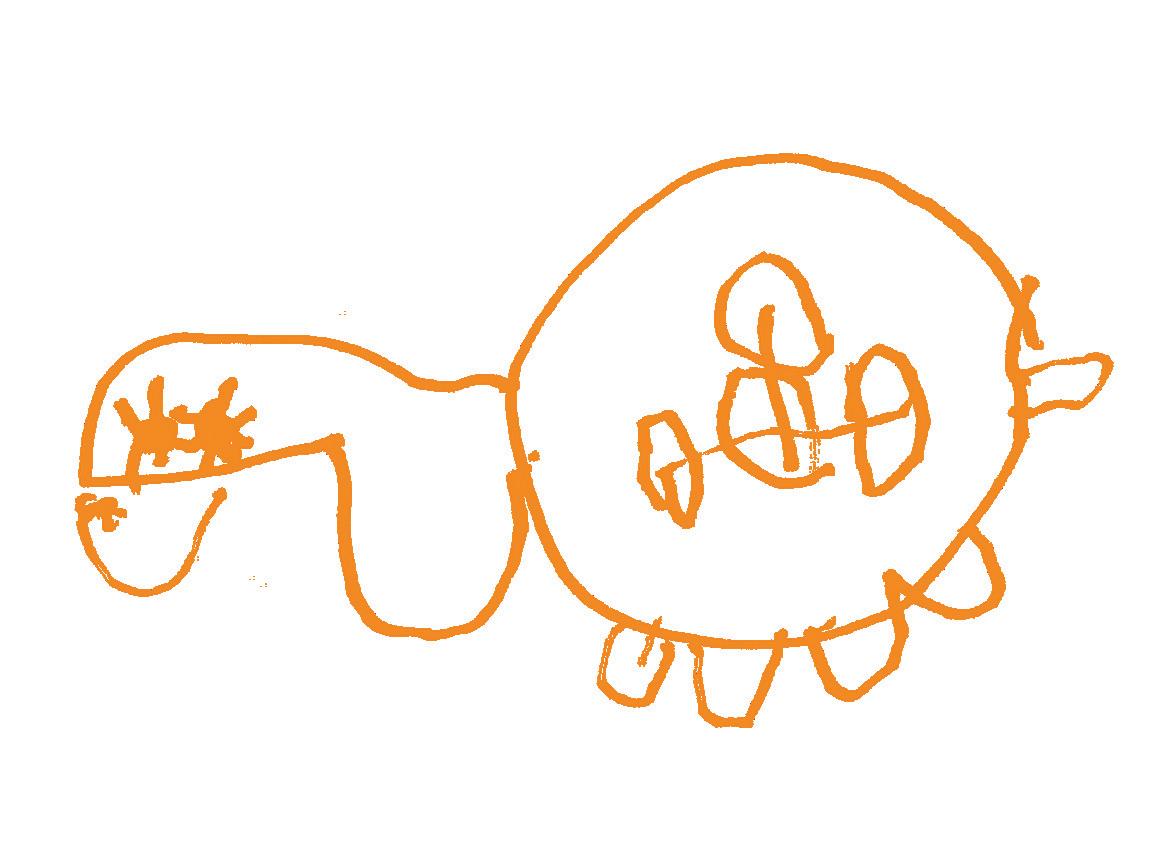
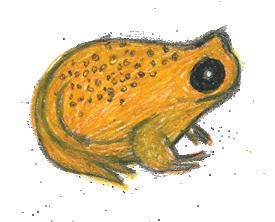


CHORUS
í = 124 1 ) PuC ) jurl ) ngu -
Verse
Pujurl Song (Walmajarri)
Eva Nargoodah with Annika Moses
Pujurl Walmajarri
&
Gillian Howell
NyaA min ) ka) la ) pu) rrij) ku, ) nya) ka) la ) pu) rrij) ku, ) marn) pa ) marn) pa E min ) pa) lu ) nguG ) niny. ,
Verse 2 17 ) Mak) u) ra ) jawu) lu ) ma) rna) lu ) ka) rla) lany ) ngu) wa E min ) pu) jurl) ku. E7 ,
A min
21 ) PurlA min ) pung) an ) ma) rna) lu m m m , ) maE min ) ku) ra ) jawu) lu m G m To CHORUS m ,
Verse 3 A min 25 ) Kurr) ku) nga ) ma) rna) lu ) kirr) a) lany ) ka) niny , E min
Spoken but glissing downwards m kam niny m kam niny m ngum wam nga
29 ) RiA min ) rring) ki) jang) ka ) ma) rna) lu E min ) ja) pu) lany , Rit.......... m pum jurl! ] G , To CHORUS
[Chorus]
The frog lives deep down in the sand hills
The frog lives deep down in the sand hills
Children are crowding
Children are crowding
Around for the frogs
Playing around and throwing them
Playing around and throwing them heaping up the frogs.
[Chant and percussion]
Not just one, big mob!
Not just one, big mob!
Not just one, big mob!
Not just one, big mob!
[Chorus]
[Called]
“Gotta cook that meat in the fire!”
[CHORUS]
Pujurl nguniny marri kaniny jiljinga nguwanga [rhythm: x-x-x]
Pujurl nguniny marri kaniny jiljinga nguwanga [rhythm: x-x-x]
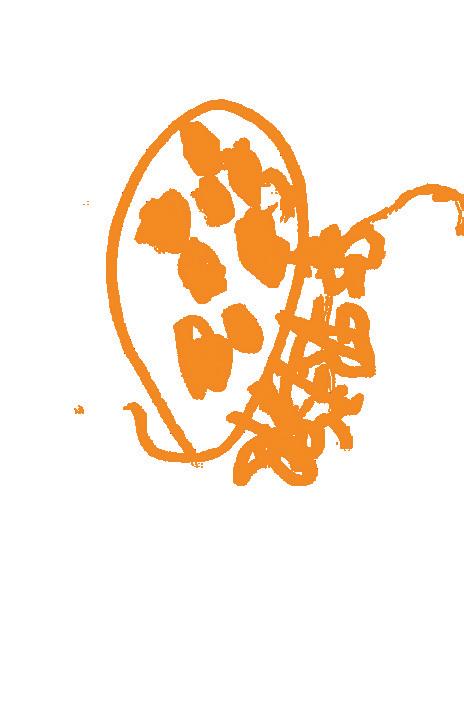
Yapa yapa palu Yapayapapalu!
Warr lapalany pujurlku
Rijirijikarra rijirijikarra!
Pujurl palu japulany.
[Chant and percussion]
Ngayirta kayan, pajanyangu wali!
Ngayirta kayan, pajanyangu wali!
Ngayirta kayan, pajanyangu wali!
Ngayirta kayan, pajanyangu wali!
[CHORUS]
[Called]
“Kuyi parlipa kampawu warlunga!”
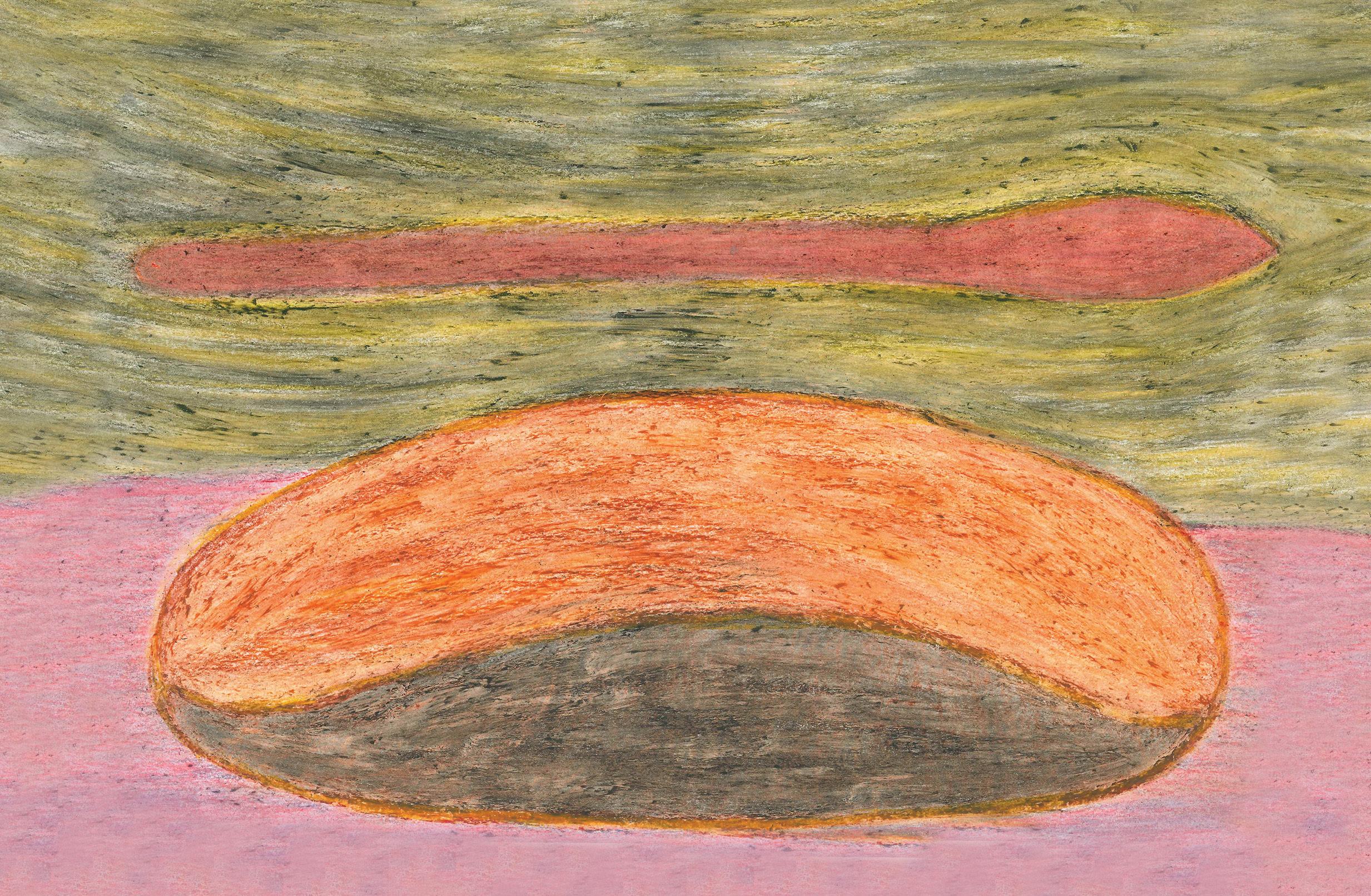
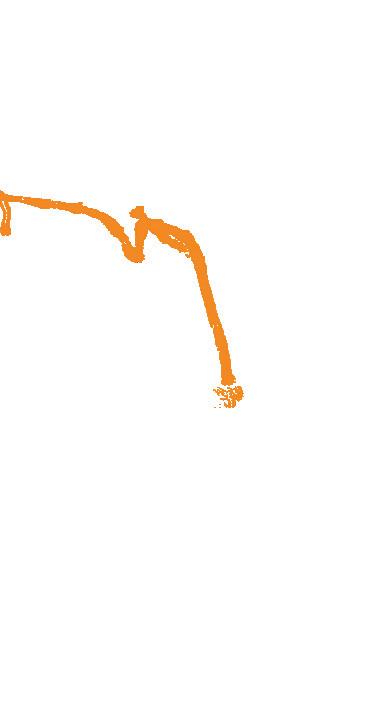
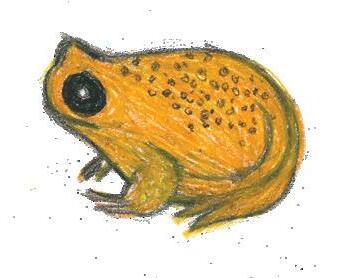





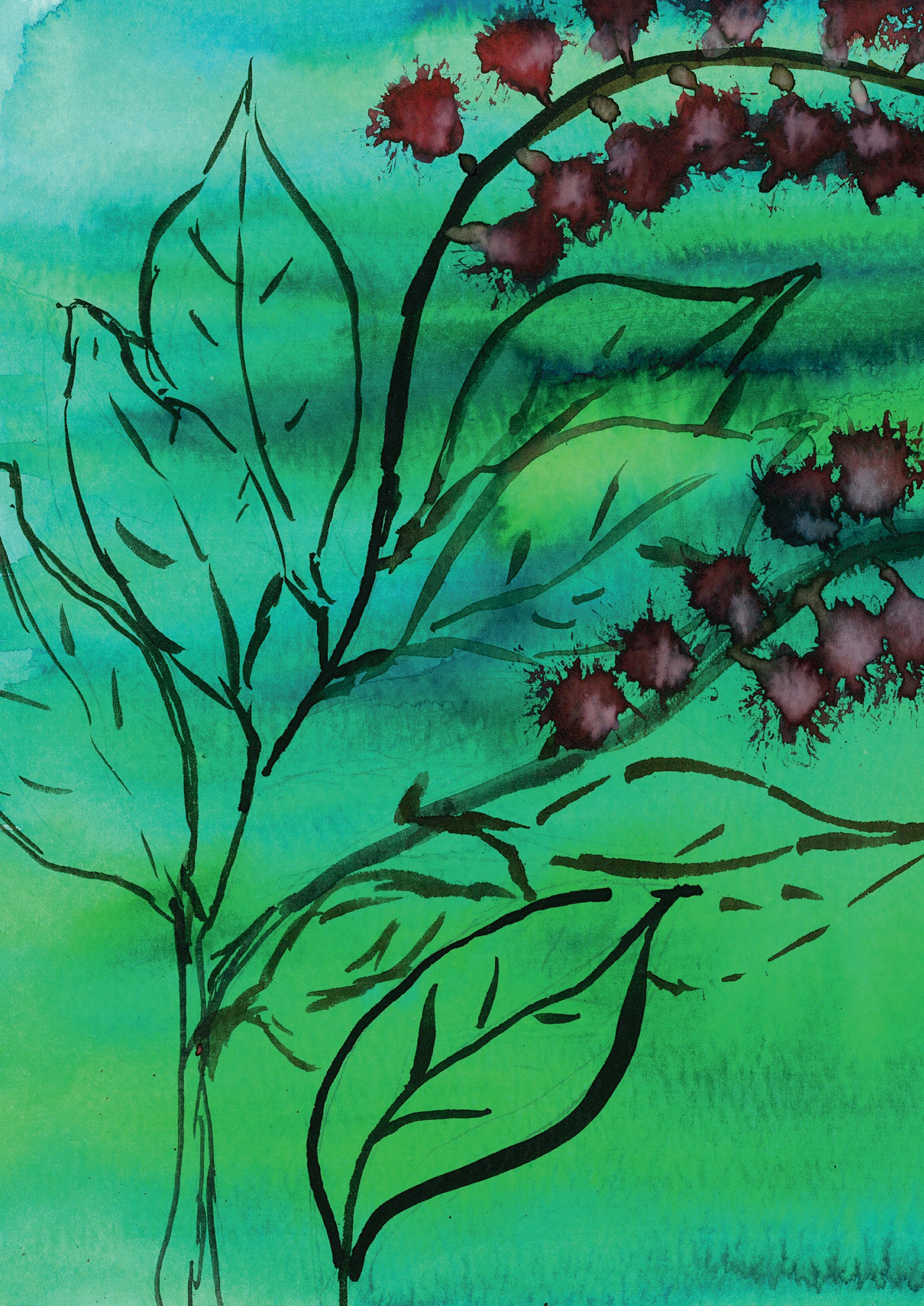
Caring for Country
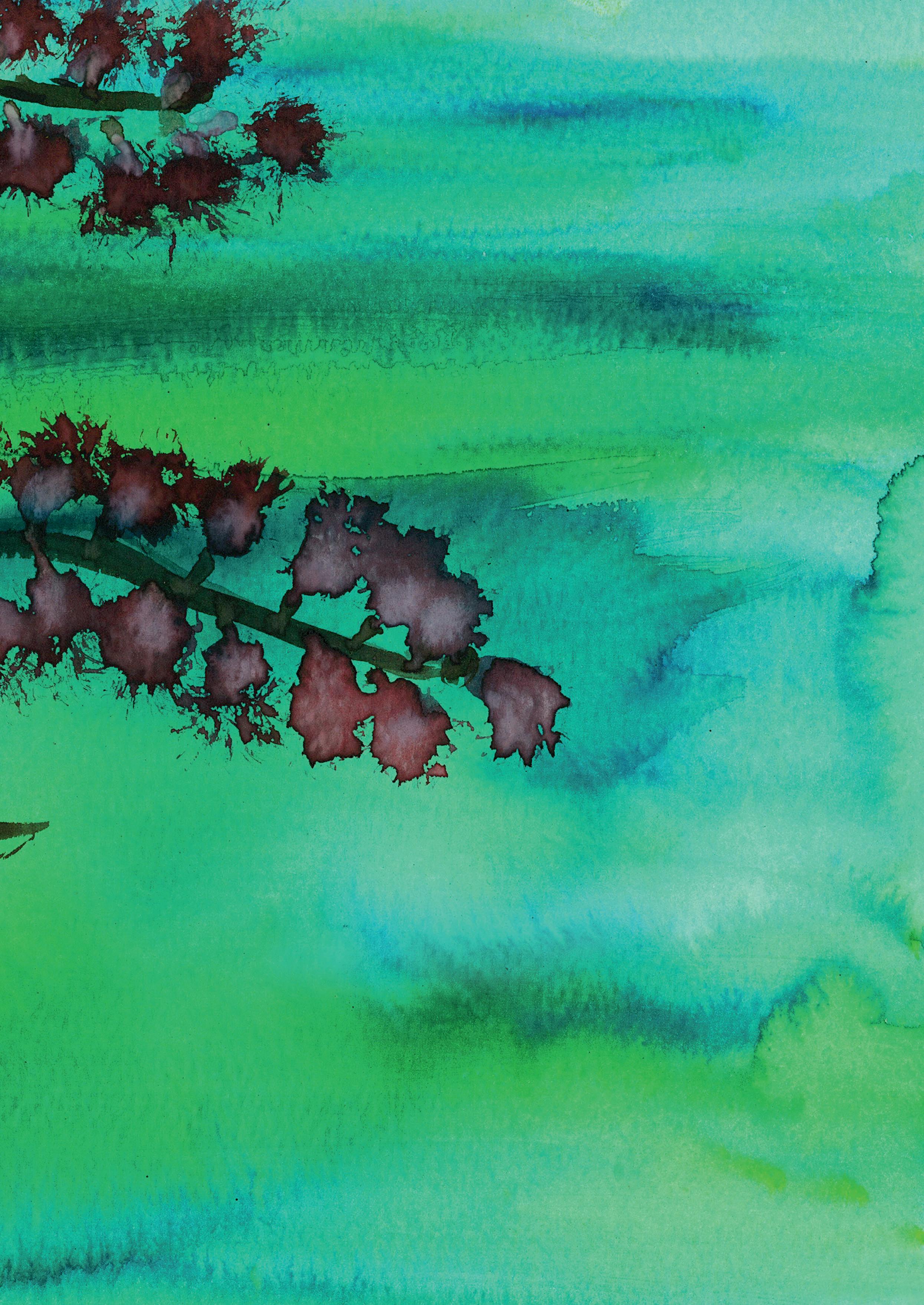
The songs in this section express the importance of caring for Country and living sustainably with the world around us. They explain how to live with respect and responsibility, guided by the knowledge passed down through generations by Elders.
The Martuwarra (Fitzroy River) is one of the world’s last wild, free-flowing river systems. It is a life force and life source of the Kimberley, a living ancestral being with unique cultural, environmental and heritage value. This song depicts children’s perspectives on the cultural value of the Martuwarra and the different ways it supports everyone’s wellbeing. The chorus is sung four times, and only the last time is in English. The Bunuba, Gooniyandi and Walmajarri language teachers translated the words of the chorus into their languages. These are the Aboriginal languages taught in Fitzroy Valley District High School and spoken at Baya Gawiy. The choruses are not word-for-word translations; they capture the same sentiment as the English chorus in a personal way for each linguist.
Hello River, we’ve been driving a long way
Hello River, gonna catch a fish today
Got a net to get big mob
And we can swim in your brown water.
Giliy lurru’ra nganthi yuwa
Jarrwadga-ma muwayi yuwa
Thalya thalya banda Garuwa lurru’ra, lurru’ra, lurru’ra.
If I’m bored or feeling bad
You calm down my head. I just sit down and breathe You will take away my stress.
Ngarragi, waarrijangi
Wanga ngaangjandi
Ngarragi, birlirri, ringiri
Loorr, loorr, loorriri.
Loorr, loorr, loorriri.
The spring is like the heart
Pumping water to the creeks It can heal all your sores
It’s cold and clear and very deep.
Nungu-jiliny man jiluwarla
Ngurra-man wanji inya
Ngajikura pirlurr
Lirrulany, lirrulany, lirrulany, lirrulany.
Like the blood in my veins, you bring life to our country
You’re gliding through the ground. And like your flowing waters, my spirit flows free.
Flow flow flow flow, Flow flow flow flow.
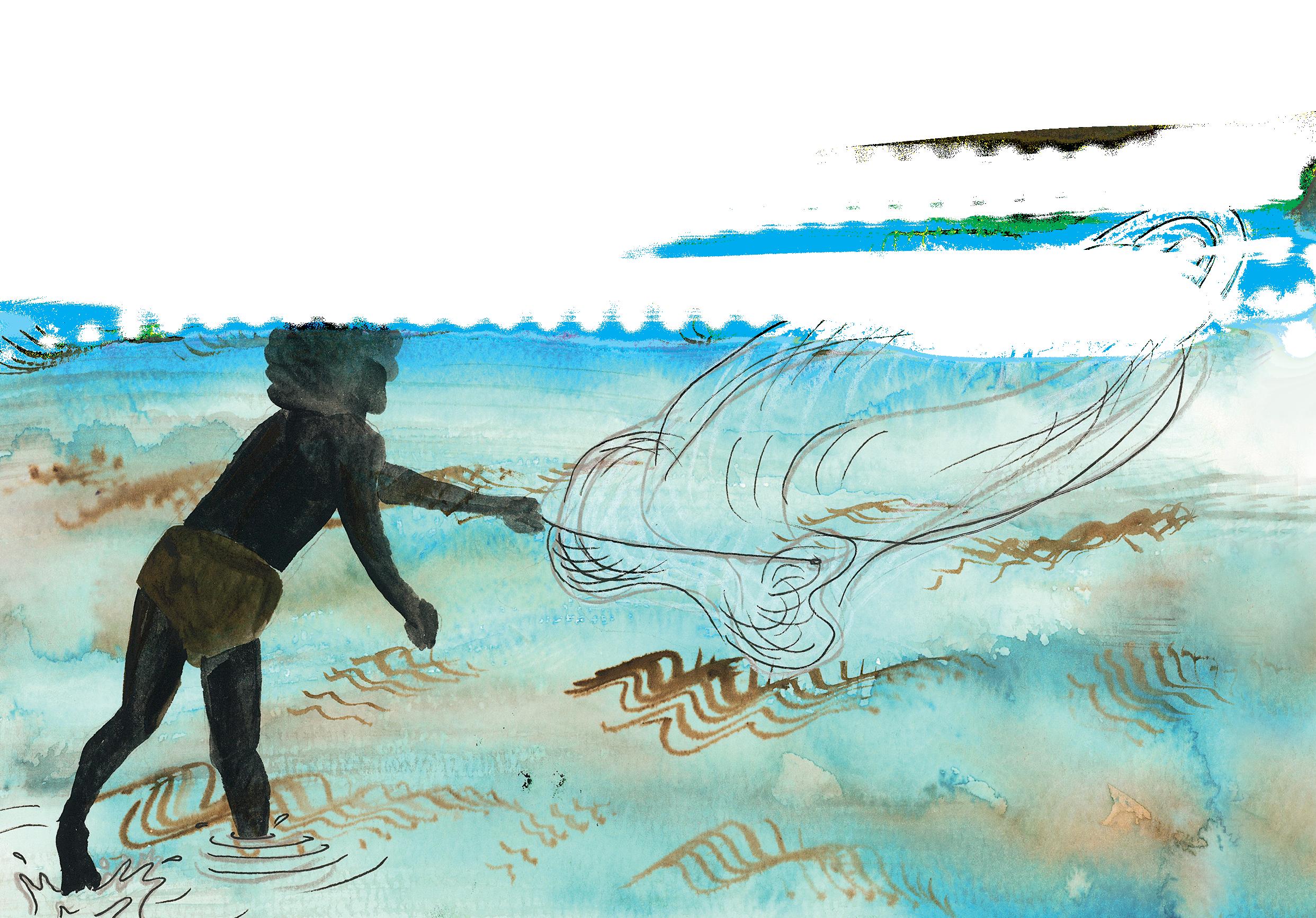
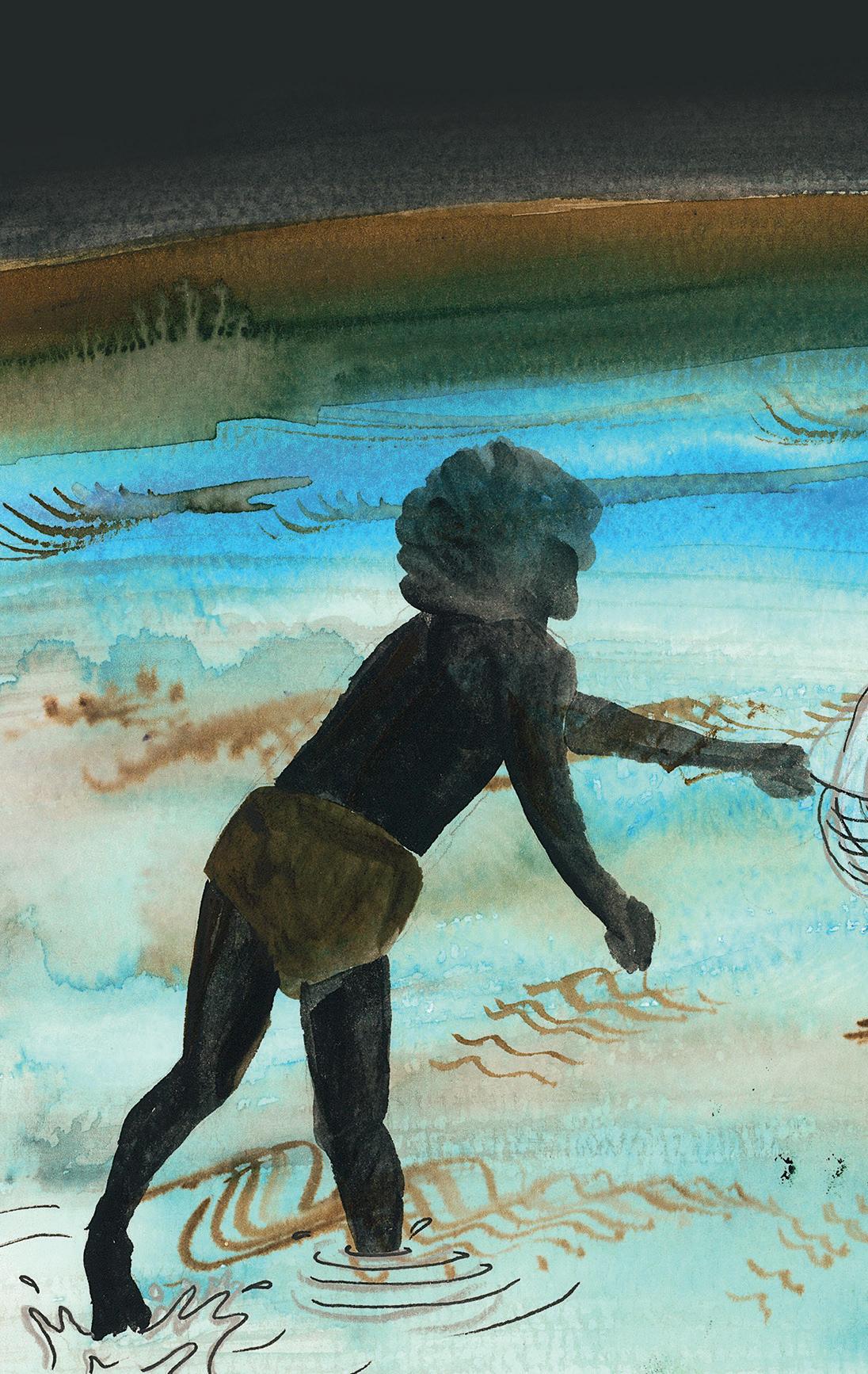
Written by students in years 5, 6 and pre-Primary
í = 108 with Gillian Howell and teachers Jane Barker, Bryn Dolan and Shay Stamp. Standard Australian English, Bunuba, Gooniyandi and Walmajarri
Bunuba, Gooniyandi, Walmajarri and English
A min 30 ) NgaChorus 2 ) rra) gi )! waa G 2 ) rri) jan C ) ) ) ) gi. F ) , A min ) Wan) ga )! ngaangG 2 ) jan( di.
A min 38 ) Loorr, ) loorr, )! looG 2 ) rri( ri,
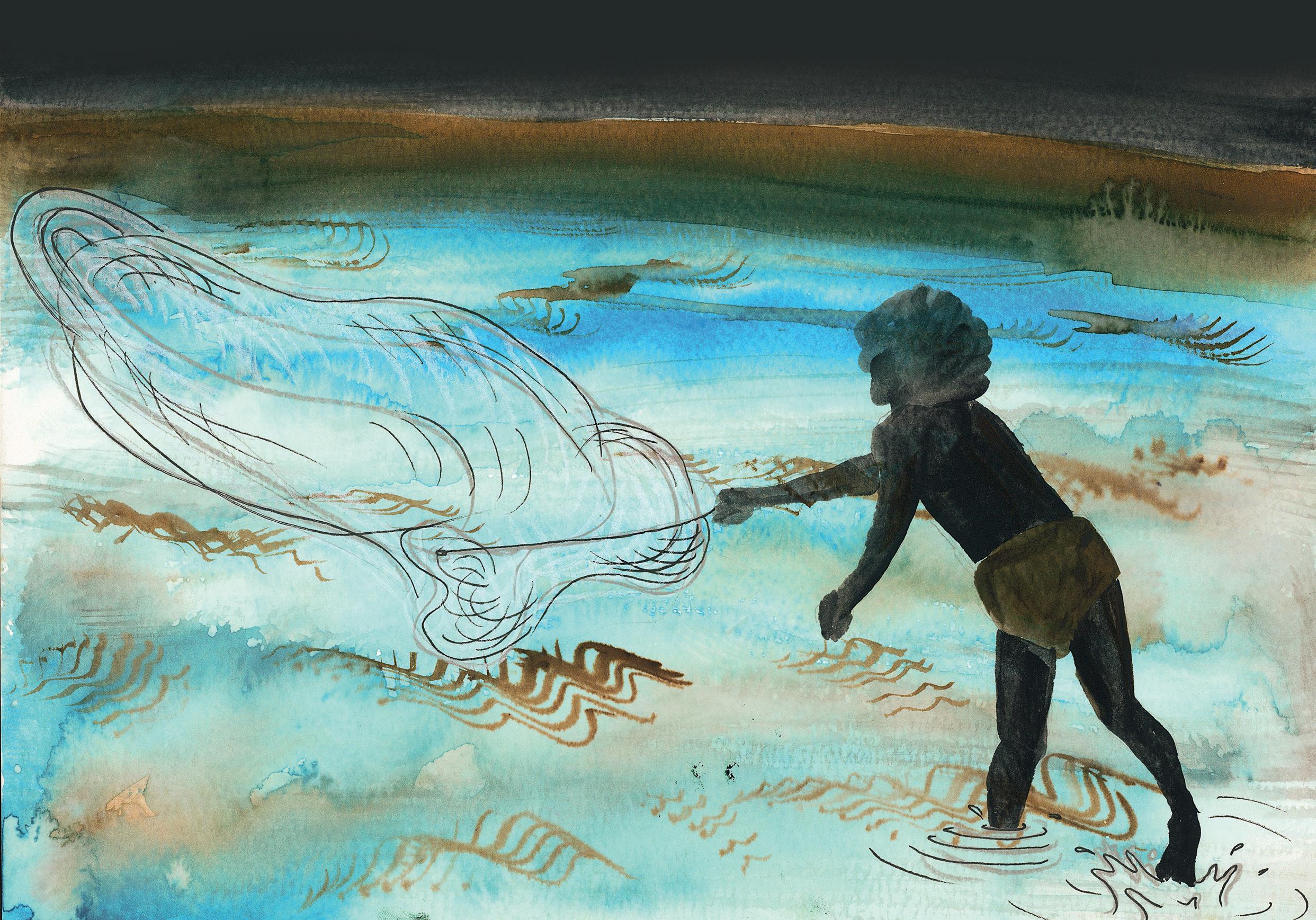
This song describes three trees that grow in Gooniyandi Country: gooroo, birlindi and gooroomba. Gooroo and birlindi are bush medicine and gooroomba is used for cooking. The song ends with a verse that reminds us to care for our precious trees. The songwriters Cissy Nugget, Robyn Long and Brenda Shaw were Gooniyandi teachers at Bayulu Remote Community School and Fitzroy Valley District High School when they wrote this song in 2019.

Translation
If the catfish pokes you, pokes you
Look for the mangrove tree and put the sap on the wound
Our trees are precious

Boojoo goorloomangarringa
Ngagginyjawo, ngagginyjawo
Milawani goorooyoo
Gooyoorrbarri nyagnhingiya
Giriliyarndi yarranggi joornanygarra
Barranggaya boojoo
Ngirrinyjila, ngirrinyjila
Milawani lagarndiyoo
Bilirndiya, bilirndiya
Giriliyarndi yarranggi joornanygarra
Boojoo gawi
Doowyawinggirra
Milawani gooroombayoo
Mirdbarri wooboo garanyiya
Giriliyarndi yarranggi joornanygarra
Yarranggi joornanygarra
Giriliyarndi
Wanga ngangjimili
Rinyga ngayilira yarrangi
Wanga ngaangjimili
Rinyga ngayilira yarrangi
Wanga ngaangjimili
Rinyga ngayilira yarrangi
In the hot season
If you are hungry, if you are hungry
Look for the lagarndi (grub)
In the gum tree, in the gum tree
Our trees are precious
If you catch fish
Look for the paperbark tree wrap the fish in the bark to cook ‘em in the ground
Our trees are precious
Our precious trees
Life giving Cleanses our breath
Life giving Cleanses our breath
Life giving Cleanses our breath
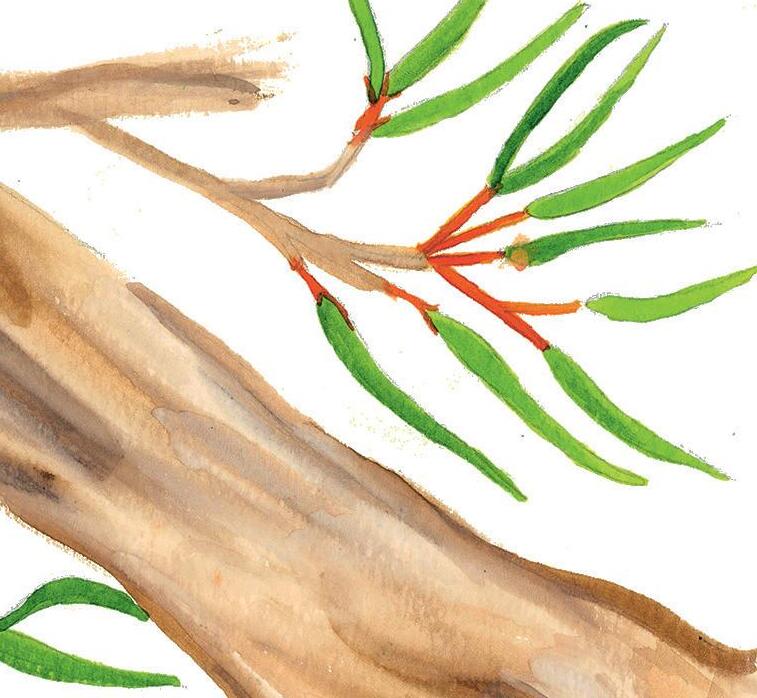
Giriliyarndi Gooniyandi
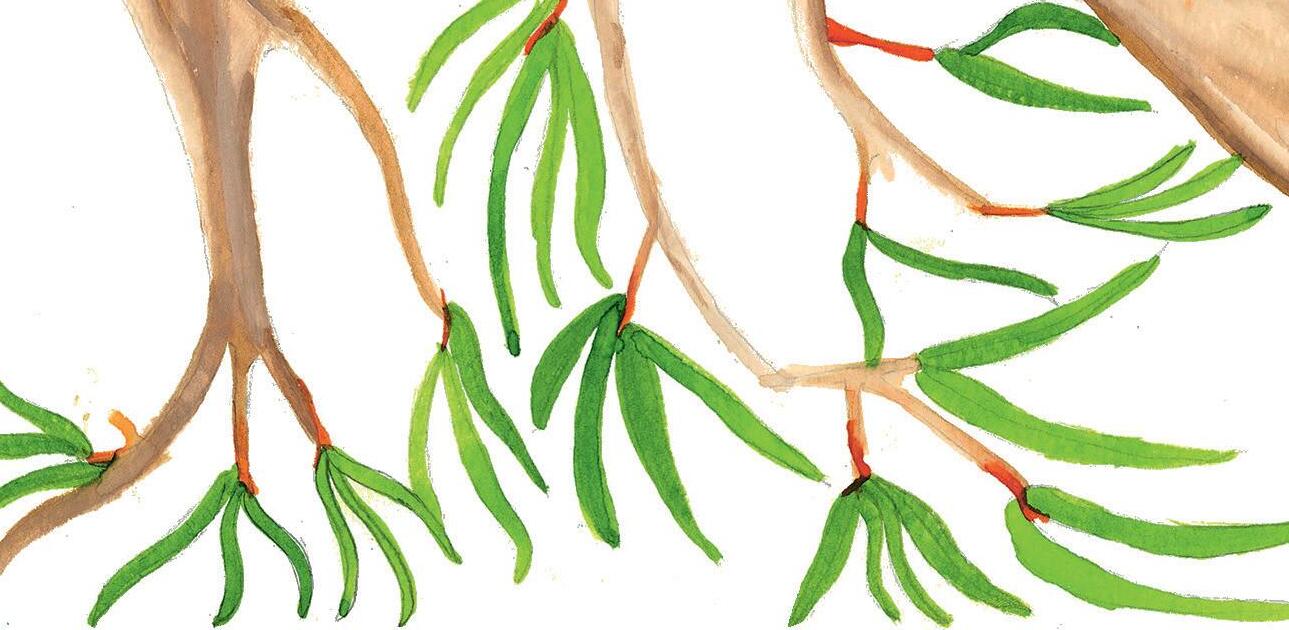



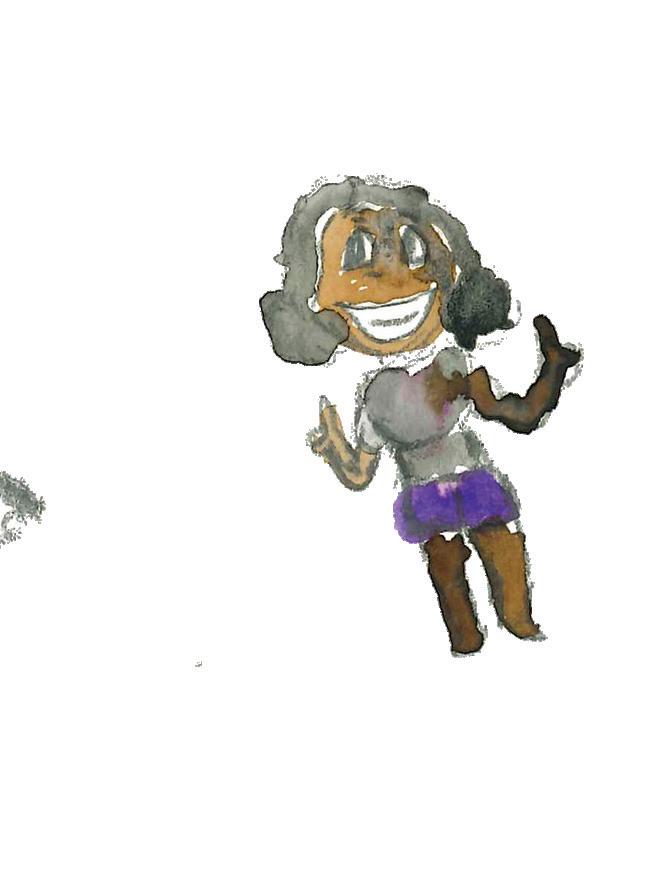

“I wrote this song because people catch the sawfish (galwanyi) and they leave them on the river banks and waste them. This is a song to teach people not to waste food, to think about the right size to keep that will keep the breeding cycle going. I get so upset when I see them left on the bank. We’ve gotta stop and think (wamba-nyali), and look (milawa)!” Brenda Shaw
Translation
Yidirla = Wet Season when the river runs

Galwanyi = freshwater sawfish
Galwanyi min.ga ngarri = the sawfish are fat (i.e., ready for eating)
Garndoowa ngooroo gawi = good time to go fishing
Ngaboo = father
Wayandi = fire
Joondoo = fishing line
Gamba = water
Laari, jaliji, boornda = three kinds of bait
Wamba-nyali! Milawa! = pay attention! Look!
Ngarranyi = mother
Nyamani = big one
Marni = sister
Lambardi = small one
Ngawi = Aunty
Joornanygarra = good! Or also in this context = hurray!
On a Yidirla Sunday morning
When the water’s full and flowing
Galwanyi min.ga ngarri
Garndoowa ngoorroo gawi.
Ngaboo made the wayandi
The joondoo’s in the gamba
With laari, jaliji and boornda
To catch the galwanyi.
[CHORUS]
But wamba-nyali! Milawa!
Don’t keep the big one
He’s the breeder of them all
Don’t keep the little one
Give ‘im time to grow big and strong
Gotta wait for the right-size galwanyi
Just eat the right-size galwanyi.
Ngarranyi got ‘im nyamani
And everyone is happy
But Ngaboo tell ‘em chuck ‘im back
It’s the wrong size galwanyi.
Marni got ‘im lambardi
And everyone is happy
But Ngaboo tell ‘em chuck ‘im back
It’s the wrong size galwanyi.
[CHORUS]
Ngawi got the last one
And everyone is happy
And Ngaboo tell ‘em joornanygarra!
It’s the right-size galwanyi.
[CHORUS]
So wamba-nyali! Milawa!
Don’t keep the big one
He’s the breeder of them all Don’t keep the little one
Give ‘im time to grow big and strong
Gotta wait for the right-size galwanyi
Just eat the right-size galwanyi.
Just eat the right-size galwanyi.
The Right Size Galwanyi
The Right-Size Galwanyi
Brenda Shaw, Patricia Cox, Delphine Shandley
Chek with Gillian Howell
Gooniyandi and English

This song is about two (thurranda) brolgas (gurranda). Brolgas always arrive in Fitzroy Crossing at the start of Barrangga (hot time). While writing this song, Jayedene connected Barrangga with Christmas and the big family gatherings that were part of Christmas celebrations during her youth. The song captures the joy of those memories and reminds her of the music they shared and sang whenever they came together.
Translation
Two brolgas are jumping. Hot time is coming.
Two brolgas are dancing. Hot time is coming.
Two brolgas are flying away. Hot time is coming.
Hot time is coming. Hot time is coming.

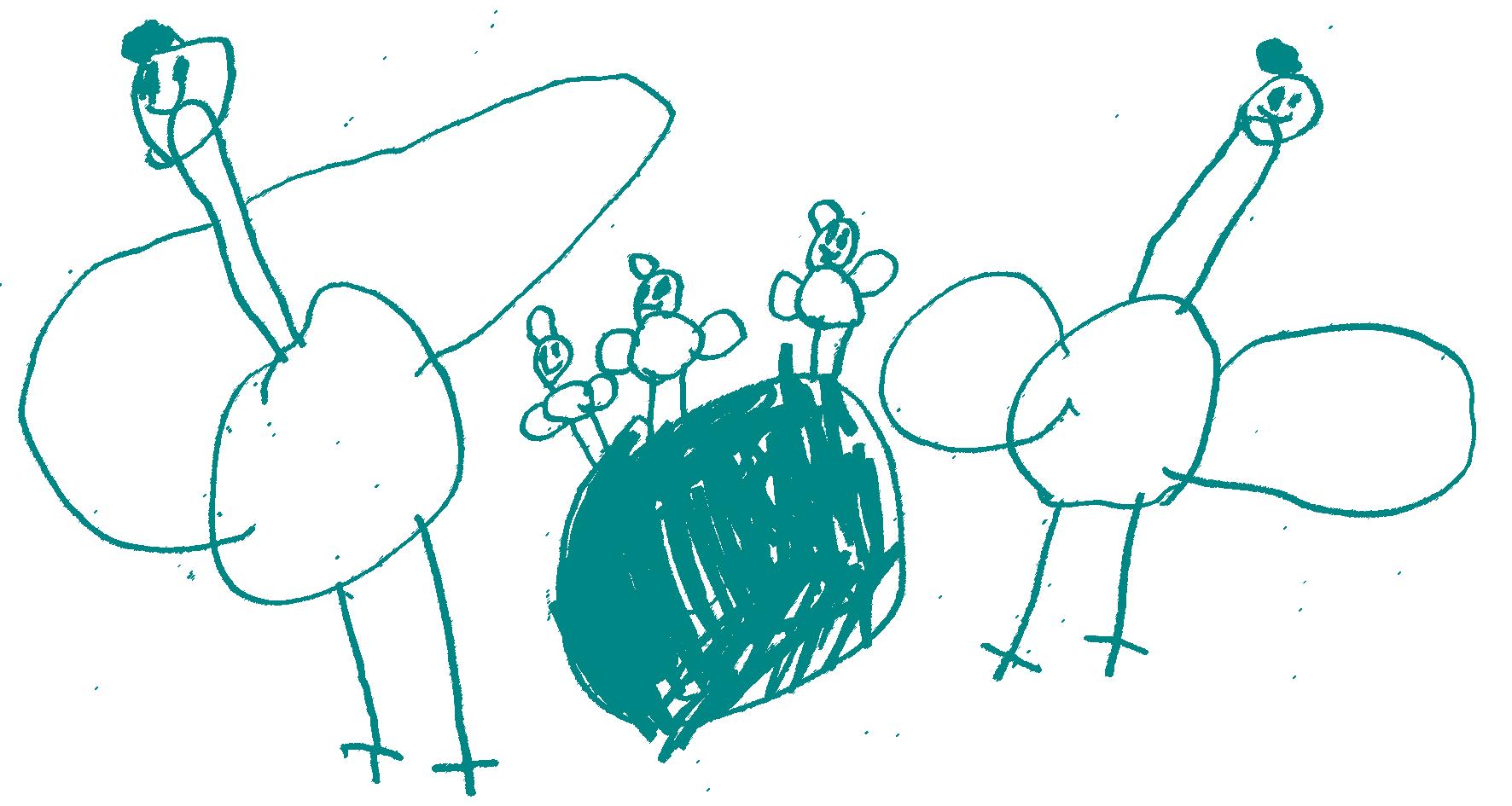
Thurranda gurranda gurradgurrantha Barrangga biragara yaningi.
Thurranda gurranda burrgurrantha Barrangga biragara yaningi.
Thurranda gurranda balbalwurrantha Barrangga biragara yaningi.
Barrangga biragara yaningi. Barrangga biragara yaningi.
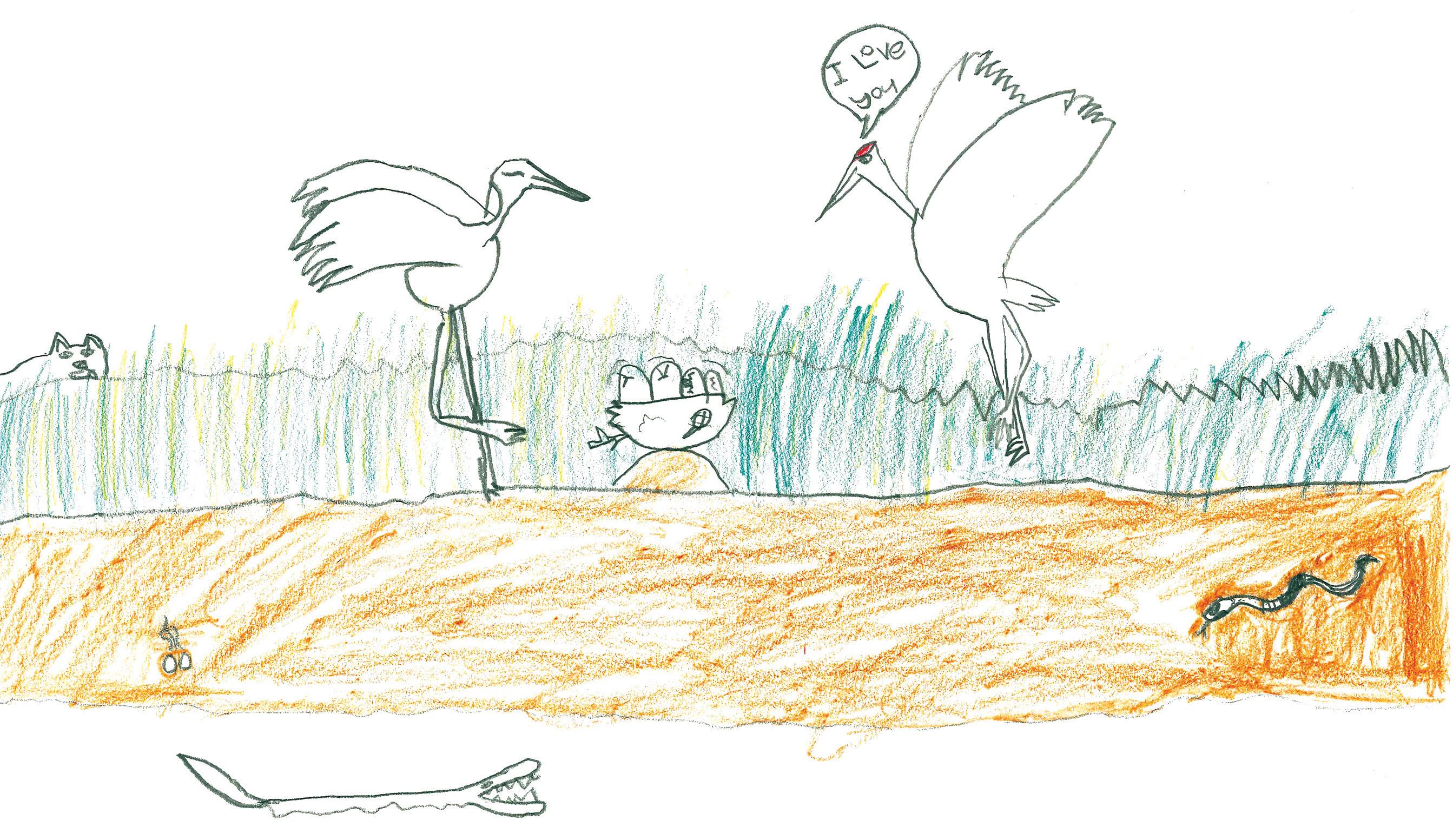

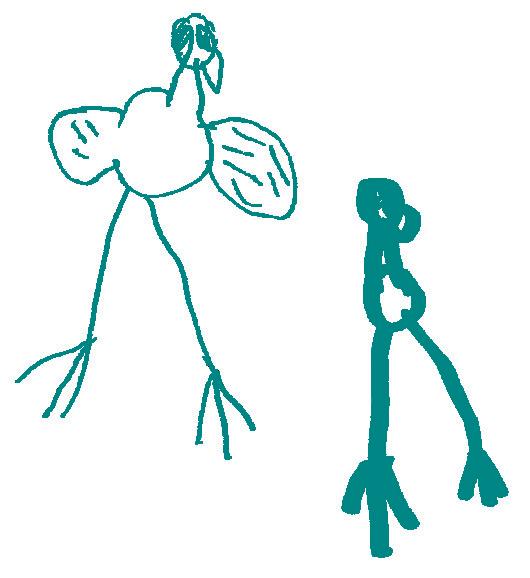
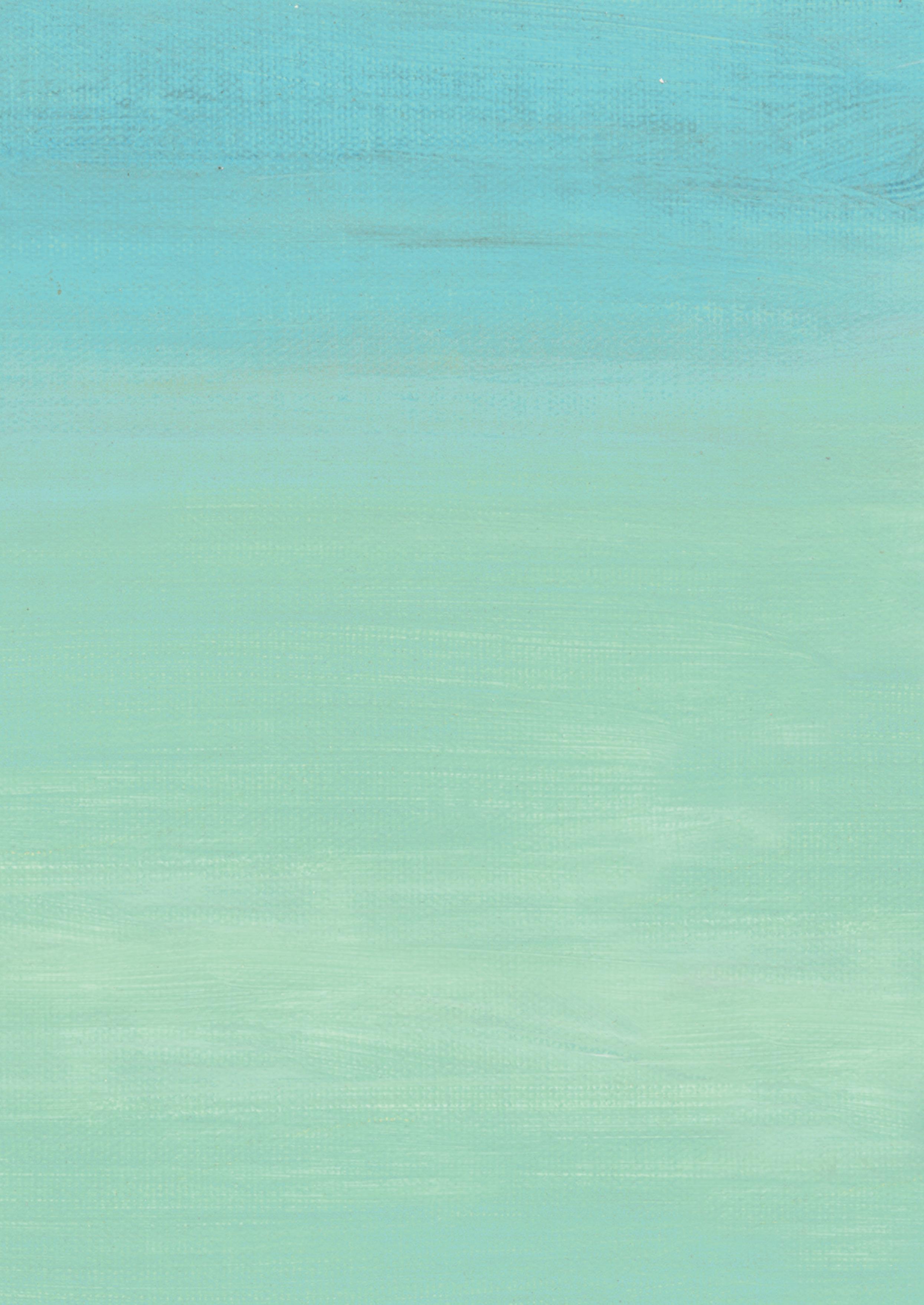
Thurranda Gurranda Bunuba
Gurranda (Bunuba)
Words: Patsy Bedford
Music: Annika Moses, Jayedene Green & Gillian Howell Thurranda
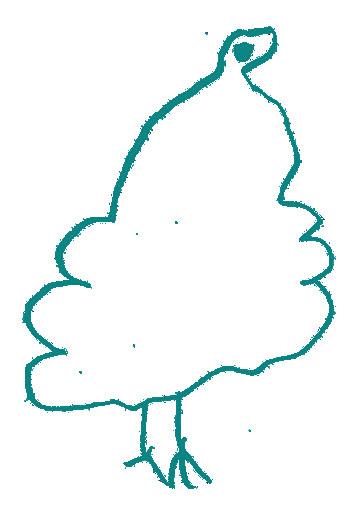

Acknowledgements
Advisory group and co-researchers: Patricia Cox, Sue Loughlin, Amy Menzies, Annika Moses, June Nixon
Editor and project lead: Gillian Howell
Language checkers and advisors: Patsy Bedford, Maria Marmingee Hand, Susan Hoad, Joyce Hudson, Lola Jones, June Oscar AO, Eirlys Richards, David Bullen Rogers, Brenda Shaw
Songwriting mentors/facilitators: Gillian Howell, Annika Moses
Recording facilitator and coordinator: Annika Moses
Music transcriptions: Lorraine Milne
Introductory text: Songwriters, Gillian Howell
Designer: Lee Burgemeestre
ILF Project Editor: Samantha Mansell, and her predecessor Elizabeth Arrigo, Indigenous Literacy Foundation
Proofreader: Breanna Blundell

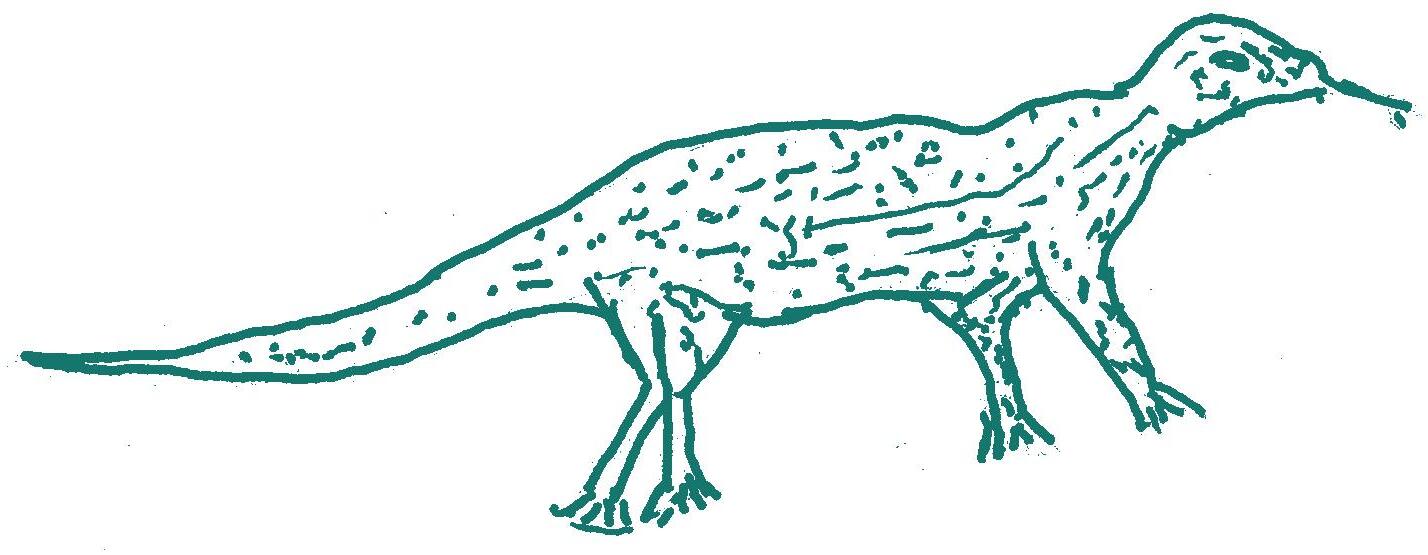
Thanks to
Emily Carter AM and Sue Thomas, Marninwarntikura Women’s Resource Centre
Amy Menzies, Marina Bonnie, Maryanne Coe, Marshia ‘MC’ Cook, Natalia Ferreira, Tuwarnah Dawson, Sharna George, Sue Loughlin, Eva Nargoodah, the GoodStart secondees, 2022 – 2024, and all the staff and families at Baya Gawiy Buga yani Jandu yani u
Vicki Hynam for initiating and steering the songwriting project through its first phase
Jarrod Minniecon, Nindilingarri Cultural Health Services, for supporting our recordings in the Nindi Recording Studio
Natalie Davey, Wangki Radio, for helping share research updates with the community through the Danggujarra radio program
Charlotte Diamond, composer and copyright owner of the much-loved children’s song ‘Octopus (Slippery Fish)’, which our song ‘Slippery Boornda’ is based on –thank you for granting copyright for its inclusion in this songbook
All the artists who created artwork for this songbook, including several children who took part in public art workshops and didn’t sign their paintings! Thank you for being part of Buga Yanu Junba
Maria Marmingee Hand, Oliver Raabe, Joycelyn McCarthy, Janette Hindmarsh, Emma Anderson, David Wheatfill, Mel Smoker, Donna Bridge, and all the staff at Fitzroy Valley District High School for supporting the songwriting and songbook project at different stages and in many ways. Particular thanks are extended to art teachers
Michelle Siciliano and Marc Bikim for assistance with sourcing artworks and artists
Meg Lowe, Catherine O’Loughlin, and Vicki Hynam for opening their homes to the Sound FX musicians during residencies and making them feel so welcome
Tos Mahoney, Carly Davenport Acker, Tristen Parr, Sian Murphy, and all the team at Tura
About the Indigenous Literacy Foundation
The Indigenous Literacy Foundation (ILF) is a national charity working with Aboriginal and Torres Strait Islander remote Communities across Australia. We are Community-led, responding to requests from remote Communities for culturally relevant books, including early learning board books, resources, and programs to support Communities to create and publish their stories in languages of their choice.
In 2024 the ILF won the Astrid Lindgren Memorial Award, given annually to a person or organisation for their outstanding contribution to children’s or young adult literature.

Songwriter biographies
Patsy Ngalu Bedford has been passionate about teaching language for many years, working to make sure generations of young children keep language alive and are given every opportunity to hear and speak their languages. She is a Bunuba woman and Elder who has been actively involved in the Kimberley Language Resource Centre for decades as chairperson, linguist, and special advisor. She is an expert advisor to the educators at Baya Gawiy, guiding the language work.
Irene Bent is a Walmajarri woman, a Walmajarri language educator, and an Aboriginal education assistant. Irene was born on Meda Station, out near Derby, and has lived in the Fitzroy Crossing area all her life. She taught at Bayulu Remote Community School for twenty years and at other schools before that.
Patricia Cox is a Gooniyandi woman, early childhood educator, and published author. She heard her language as a child from her grandmother and father and it is her goal to become a strong Gooniyandi language speaker. Writing books and songs, telling stories and singing songs in Gooniyandi are part of her language learning journey. Patricia is a member of the core research team for the Baya Gawiy songwriting project.
Samantha Frank is an artist, educator, and songwriter. She is Walmajarri from her grandmother’s side and Mangala from her grandfather’s side. She has worked in different roles for Marninwarntikura Women’s Resource Centre over the years, including as a Language, Culture and Wellbeing team member at Baya Gawiy. Samantha is a captivating storyteller who uses sand and props to narrate stories from her culture. “When I was growing up, I used to hear my grandparents speaking in their languages. They told me stories and
taught me knowledge, and that’s why I can speak and understand my language now. I’m thankful to them for teaching me at an early age. All my cultural knowledge keeps my identity and sense of belonging strong.”
Jayedene Green is a Bunuba woman who has lived in the Fitzroy Valley nearly all her life. “I do this for the kids, to carry language and knowledge on into the future.”
Maria Marmingee Hand is a Walmajarri woman who was born on Jubilee Station. She has been teaching adults and children for 35 years and has a Bachelor of Education and a Master of Indigenous Language Education. “Being an educator is my great love. I love imparting and building up that knowledge in other people. My language is my strength. It keeps me grounded, connected to Country, connected to land, connected to family and to my Ngurrara history.”
Susan Hoad is a Bunuba and Gooniyandi woman, and a senior language speaker. For many years she was the Bunuba language teacher at the old Fitzroy school located just past Junjuwa. She is an advisor to Baya Gawiy’s Language, Culture and Wellbeing team and was part of the Baya Gawiy delegation that travelled to Adelaide for the Purrumpa First Nations Arts and Culture conference in 2022, sharing insights about Baya Gawiy’s unique curriculum and creative work. Now retired, she advises on bush medicine and bush tucker, documenting the knowledge. “I want my grandchildren to talk their language. They need to learn it when they’re young because as they get older it’s more difficult. We’ve got to keep talking to them and teaching them, so that they can learn it and then teach it to their children.”
Gillian Howell is a musician and researcher living and working on Wurundjeri and
Boonwurrung/Bunurong Country in Narrm (Melbourne). Her creative practice and research explore how music-making can support wellbeing, strengthen social fabric, and foster community dialogue. As Director of Tura’s Sound FX program, Gillian began working in Fitzroy Crossing on Bunuba country in 2017, collaborating with educators and children at Baya Gawiy and local schools to create new music and sound art about life in the Fitzroy Valley. “I feel deeply grateful for the trust, generosity, and knowledge shared throughout this project – especially the opportunity to learn from such powerful expressions of language, culture, and care for Country.” Gillian is a senior research fellow at the University of Melbourne and was the project leader of the Buga Yanu Junba Songbook project, as well as lead investigator for the songwriting action research.
Robyn Long is a Gooniyandi, Walmajarri, Gija and Jaru woman who was born in Halls Creek. “My mum was a Stolen Generations person, so learning about my culture has always been very important to me. I came to live in Fitzroy Crossing as a young woman with my husband and young family. All my kids went to the old Fitzroy Crossing school.” Robyn has been teaching at the Fitzroy Crossing school for over thirty years, first at the old school and now at Fitzroy Valley District High School. She completed the Gooniyandi language teacher training and co-wrote the song ‘Giriliyarndi’, about local bush medicine and bush tucker trees, with her Gooniyandi language teacher colleagues. “It’s important for all our kids and their families to know about their language and the traditional ways of life.”
Annika Moses lives and makes on Whadjuk Noongar land in Boorloo (Perth), so-called Australia. She writes songs and performs music as a solo artist and with the bands Lyndon Blue and Didion’s Bible, and facilitates creative projects in Tura’s regional programs on Martu and Gija lands in the East Pilbara and Kimberley, and in Fitzroy Crossing on Bunuba muwayi. “I feel extremely privileged to
be involved in this songbook project, assisting educators in the songwriting process and facilitating the recording of these precious songs. I continue to learn from these incredible women every day, not just in the languages they teach me, but through their embodiment of Indigenous knowledges and cultures.”
Eva Nargoodah is a Gooniyandi Walmajarri woman born at Christmas Creek Station in 1958 and grew up at Gogo Station with her grandmother Nelly Jilandi imana kali. Her father worked at Gogo Station as a stockman and her mother worked at the house for the Emmanuel brothers. They moved to Cherrabun Station and Eva attended a little school on the station housed in the men’s quarters in 1965. When she finished school, Eva worked in community health and as a teacher’s aide. Now, she is a language educator, writer and artist, and teaches bush medicine and traditional Walmajarri knowledge. “We talk in language because we don’t want these children to lose their Walmajarri language and cultural knowledge. I grew up with my two grandmothers, and my grandfather always took all the family out hunting to the old bore. In songs, I share that knowledge from my old people – how we hunted and went digging for pujurl and other bush tucker. I want my grandkids to keep learning what I was taught as a child, sharing and respecting the old ways.”
June Nixon is a Walmajarri woman and published author who worked as a language teacher at Yakanarra School and Bayulu School before coming to work at Baya Gawiy in Fitzroy Crossing. “I learned my language when I was small, from my mum and dad. My family, they came from the desert. My mum’s side family, from the Canning Stock Route. She came from the desert to Christmas Creek Station. That’s where she met my dad. Then we lived on Gogo Station, near the river, with all the language groups. My happiest time was living on Gogo Station when I was a child. Growing up with other family members, and climbing the
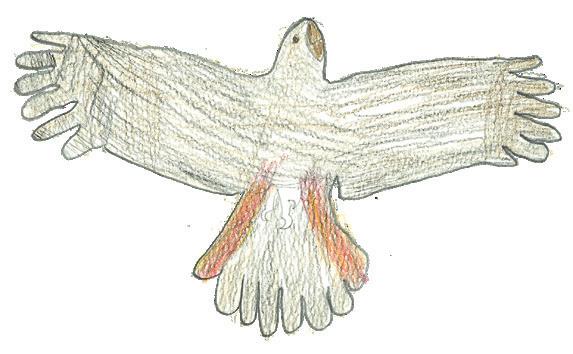
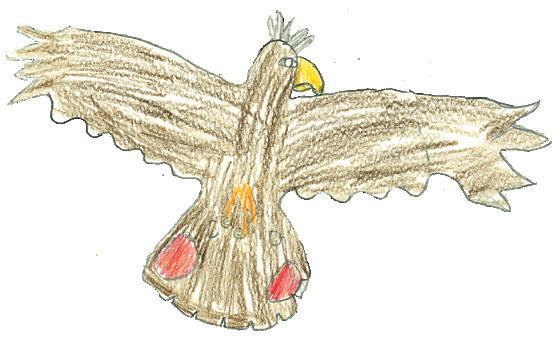
two hills, and going swimming in the two billabongs behind Gogo Station. And looking for bush tucker in the billabong and on the hills. I started my songs and books a long time ago, working with the little ones. Telling them stories about the animals that live on the land, the fishes that live in the river.” June has published two children’s books and has several more in production. She is also a prolific songwriter and a member of the core research team for the Baya Gawiy songwriting project.
Cissy Nugget learned her Gooniyandi language from her old people, through listening to her Elders, her granny, and her mothers. She is committed to carrying her language on to the next generation through her teaching and as a fluent speaker. “I feel proud to speak my language because it is my identity. I believe it’s very important to speak it really strong. That’s why I teach it to the children. I taught at Bayulu School for many years.”
Amarillo Oscar, also known as Nam, is a Bunuba woman who lived out at Leopold Station for most of her life. She was the Bunuba teacher at Fitzroy Valley District High School for four years at the time that the Flow and Jandamarra songs were written. She now works for Kimberley Aboriginal Medical Service, in the Social-Emotional Wellbeing program. “When I was working with the Mobile Playgroups at Baya Gawiy, I was part of the team that began developing our Miromaa database, gathering and storing all the precious stories and language resources for our community, to keep them safe for our children.”
June Oscar AO is a proud Bunuba woman from Fitzroy Crossing. She is a strong advocate for Indigenous Australian languages, social justice
and women’s issues, and has worked tirelessly to reduce Fetal Alcohol Spectrum Disorder (FASD). She has held many influential positions, including two terms as Australia’s Aboriginal and Torres Strait Islander Social Justice Commissioner at the Australian Human Rights Commission.
David Bullen Rogers is a Walmajarri and Bunuba man. A longtime language educator, entertainer and prolific songwriter, he started as a stockman on cattle stations and became a language teacher working at both the old and new Fitzroy Crossing schools. Now he works as a gardener at Baya Gawiy and enjoys sitting with the children and singing his songs. Bullen is also a broadcaster on local Wangki Radio with his daughter on their morning language program ‘Danggujarra’.
Delphine Shandley has lived in Joy Springs community her whole life. She is a Gooniyandi woman, children’s book author, and educator. “My language is important because when I’m going back on Country, it brings back what my old people taught me. I learned from both sides of my family, my mother’s and my father’s side. This songbook is very important for younger generations to learn their language as they grow up.”
Brenda Shaw is a Gooniyandi woman living in Fitzroy Crossing. “I am passionate about keeping my language strong through songs and books. I educated my grandchildren and younger generations about keeping our language strong. Yarrangi thangarndi maroolooyanga (our language is very precious). Binyidinyali thangarndi yarrangi goorrijawarra doorlooya baabirri yilba (Keeping our language strong and holding it close to our hearts forever).
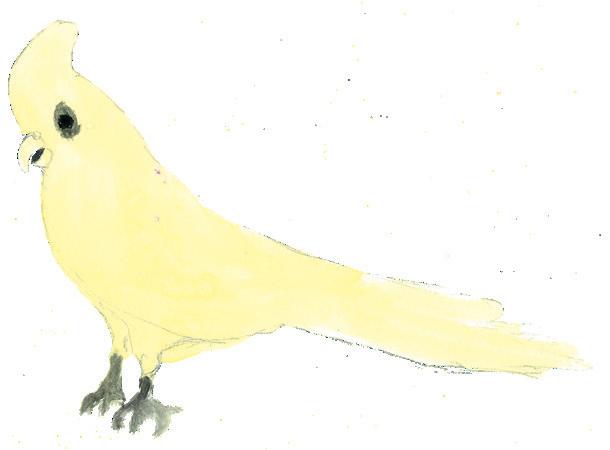
Artist credits
Cover art Joel Shaw and Felix Crowe
Contents Leryan Costaine
Foreword & About singing in Indigenous languages June Nixon and Michele McAllister
About Baya Gawiy and the songwriting project & Notes on pronunciation for English speakers Wyatt Benn, Patricia Cox and Alannah Chuguna
A message from the songwriters Jazlyn Gunn
Map Marra Worra Worra Aboriginal Corporation
Clapping and Actions Ena Graham
Kapiwarnti Palu Nguniny Martuwarrarla
June Nixon
Kayan Kakaji Sahara Costaine-Button and June Nixon
Slippery Boornda Patricia Cox, Sahara
Costaine-Button, Mila Phillips, Taj Phillips, Kaelista Rivers and Slater Kennedy
Counting June Nixon
Jirigiyani Counting Song Ava Bedford, Gillian Howell and Cassidy Dempsey
Mayarda Delphine Shandley
Faibala Grinwan Frog June Nixon, Kaelista Rivers, Willow Bambling and Gillian Howell
Lullabies Annika Moses
Jalma jalma Gira Ocean Myers, Mila Phillips, Sienna Phillips, Skylah Rogers and children who participated in art workshops at Fitzroy Crossing Expo, 2024
Moonggoowarla Gin.garli Patricia Cox
Muwayi Digawu Rozalia Badal and Jennifer Milgin
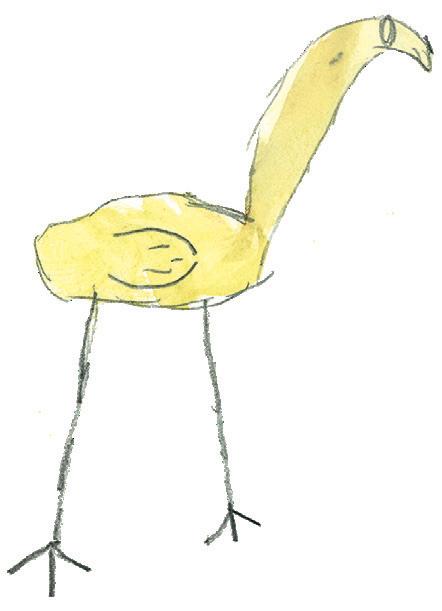
Kimberley Life Gillian Howell
Jirigi-Yani Bunuba-Yuwa Muwayi
Wyatt Benn, Aria Davies, Cassidy Dempsey, Jazlyn Gunn and Jennifer Milgin
Kurrartuwarnti Leryan Costaine
Ruwa Parlipa Yani June Nixon, Taj Phillips, Cohen Clancy, Leryan Costaine, Farren Crowe and Eva Nargoodah
Wirli Wirli David Bullen Rogers
Yilimi Patricia Cox
Stories from the Past Ezra Baker
Daddy David Bullen Rogers
Jandamarra Wyatt Benn
Ngurrara People Irene Bent, Alannah Chuguna and Judy Bent
Pujurl Eva Nargoodah, Ava Mukuchamano and Oliver Yeeda
Caring for Country Lauren McCarthy
Flow Annika Moses
Giriliyarndi Lauren McCarthy, June Nixon and Rozalia Badal
The Right-Size Galwanyi Leryan Costaine and Aria Davies
Thurranda Gurranda Taya Yeeda, Farren Crowe, Aquinas Thorne and other Year 1 FVDHS students
Acknowledgments David Bullen Rogers
Songwriter biographies & Artist credits
Aria Davies, Cassidy Dempsey, Jazlyn Gunn and Jennifer Milgin
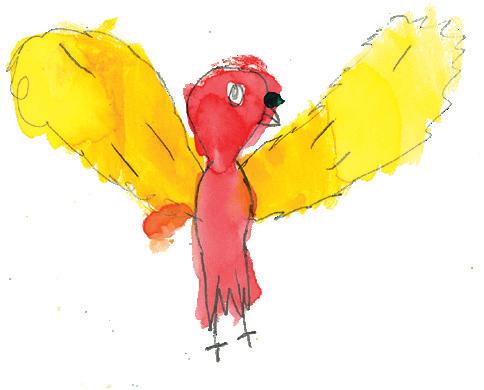



From the heart of the Kimberley, in far north-west Australia, comes this special collection of original songs in Bunuba, Gooniyandi, Walmajarri, Kimberley Kriol and English.
Created for young children – but engaging for all ages –these songs, stories and illustrations reflect the rhythms of daily life in this unique and beautiful part of the world.
The songs were written by early childhood educators, Elders, language educators, musicians, and school students from Fitzroy Crossing, Western Australia, and nearby communities. Many were developed through songwriting action research at Baya Gawiy Buga yani Jandu yani u, an early childhood education and care centre run by Marninwarntikura Women’s Resource Centre.
You can also listen to the songs on the free companion album produced by Tura – just follow the QR code below.

Happy singing!
Access the Buga Yanu Junba album here!
